HON HAI PRECISION IND HSTNH-F17C WLAN/BT HANDHELD PDA User Manual
Hon Hai Precision Ind. Co., Ltd. WLAN/BT HANDHELD PDA Users Manual
USERS MANUAL
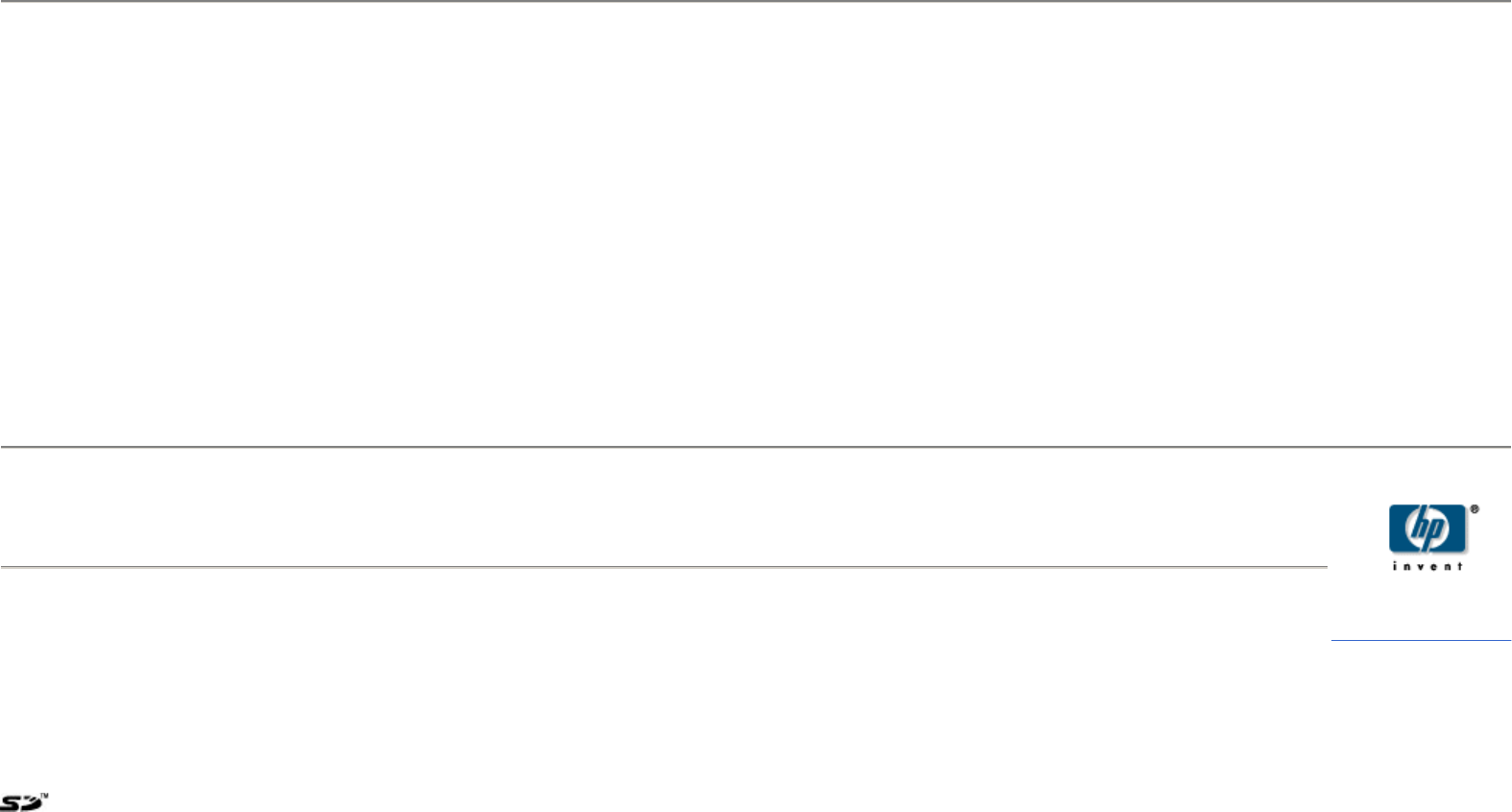
HP iPAQ
Product Guide
Trademark and Copyright Information
© Copyright 2007 Hewlett-Packard Development Company, L.P.
HP iPAQ products are powered by Microsoft® Windows Mobile® 6.0 Classic with Messaging and Security Feature Pack.
Microsoft Windows, the Windows logo, Outlook, and ActiveSync/Windows Mobile Device Center are trademarks of Microsoft Corporation in the U.S. and other
countries.
SD Logo is a trademark of its proprietor.
Bluetooth® is a trademark owned by its proprietor and used by Hewlett-Packard Development Company, L.P. under license.
All other product names mentioned herein may be trademarks of their respective companies.
Hewlet
t
-Packard Com
p
an
y
shall not be liable for technical or editorial errors or omissions contained herein. The information is
p
rovided ”as is” without warrant
y
htt
p
://www.h
p
.co
m

of any kind and is subject to change without notice. The warranties for Hewlett-Packard products are set forth in the express limited warranty statements
accompanying such products. Nothing herein should be construed as an additional warranty.
This document contains proprietary information that is protected by copyright. No part of this document may be photocopied, reproduced, or translated to another
language without the prior written consent of Hewlett-Packard Development Company, L.P.
First Edition September 2007
Document Part Number: 461290-001
Register your HP iPAQ
You need to register your HP iPAQ with Hewlett-Packard to be able to:
After registering your HP iPAQ, you will receive an e-mail message regarding special offers and promotions. Visit http://www.register.hp.com to register your
HP iPAQ or update your mail or e-mail address after registration. You are required to enter your user ID and registration password to edit your profile online.
Box contents
This illustration depicts the items that come in the box with your HP iPAQ.
●Access su
pp
ort and services, and
g
et the most out of
y
our HP
p
roducts.
●Mana
g
e
y
our
p
rofile.
●Si
g
n u
p
for free su
pp
ort alerts, driver notices, and
p
ersonalized newsletters.
NOTE: Box contents might vary by model.
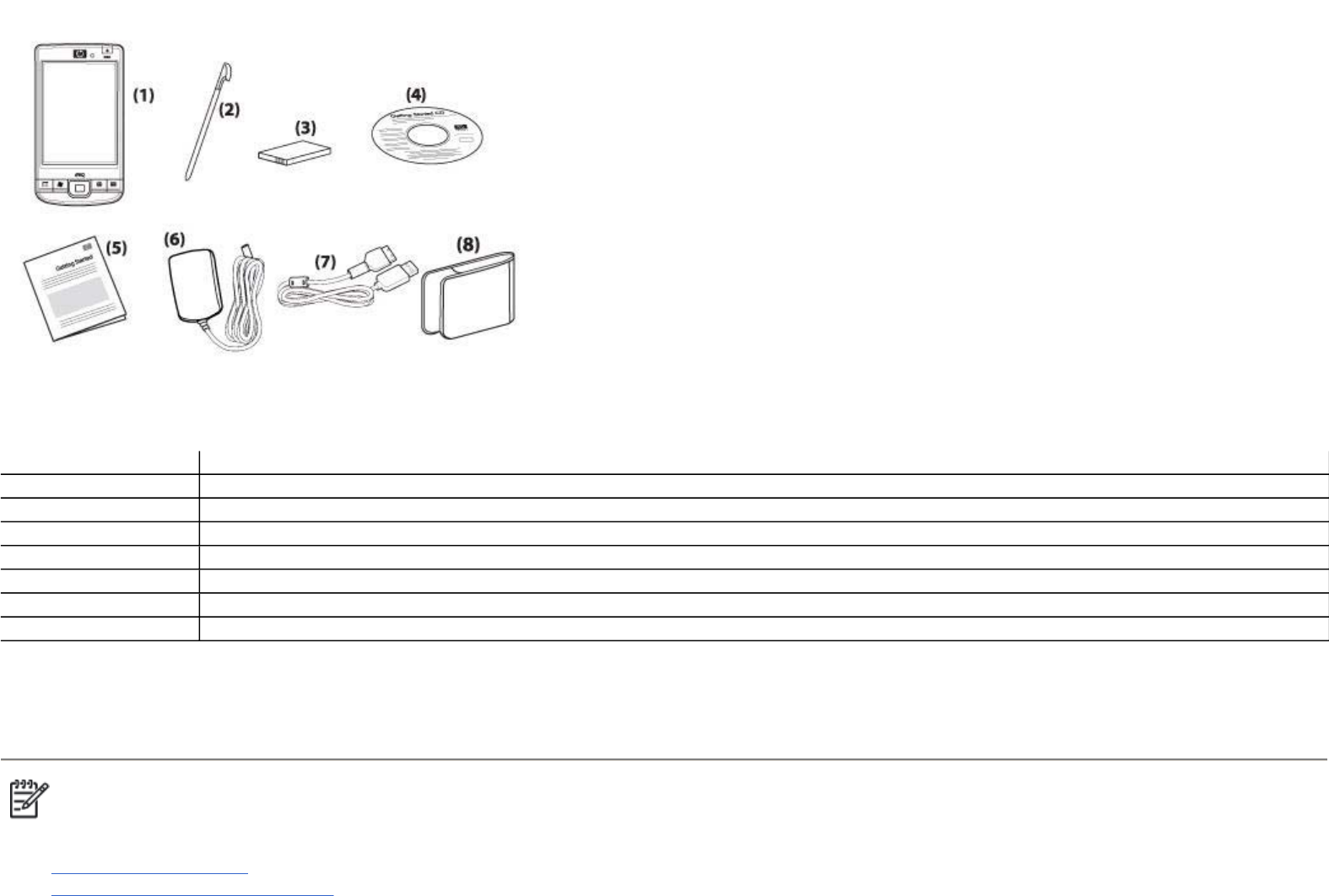
Components
zFront panel components
zTop and bottom panel components
(
1
)
HP iPAQ
(
2
)
St
y
lus
(
3
)
2200 mAh Li-Ion removable/rechar
g
eable batter
y
(
4
)
Gettin
g
Started CD with additional software
(
5
)
HP iPAQ documentation
(
6
)
AC ada
p
te
r
(
7
)
HP Smart Connecto
r
(
8
)
Sli
p
case
NOTE: Not all models or features are available in all countries/regions.
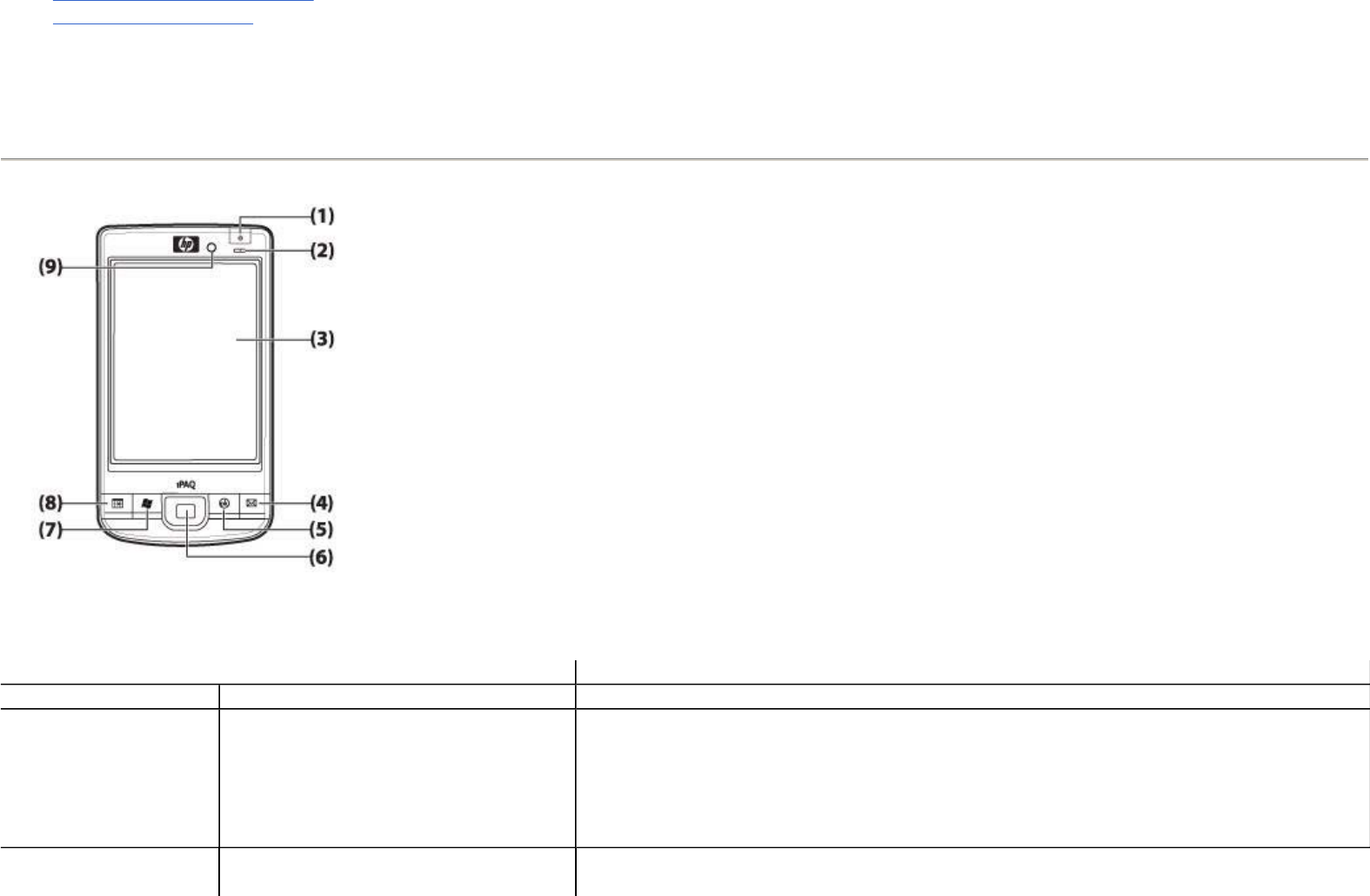
zLeft and right side components
zBack panel components
Front panel components
Com
p
onen
t
Function
(
1
)
Power Ke
y
Press and hold to switch
y
our HP iPAQ on or off.
(
2
)
Power/Wireless LEDs ●Solid ambe
r
–
Batter
y
char
g
in
g
●Flashin
g
g
reen and Solid
g
reen – One or more notifications received
●Solid
g
reen
–
Batter
y
char
g
e com
p
lete
●Solid Blue
–
WLAN or Bluetooth is on
(
3
)
Touch Screen Use to view the contents on the screen. Use the st
y
lus to select items, navi
g
ate menus,
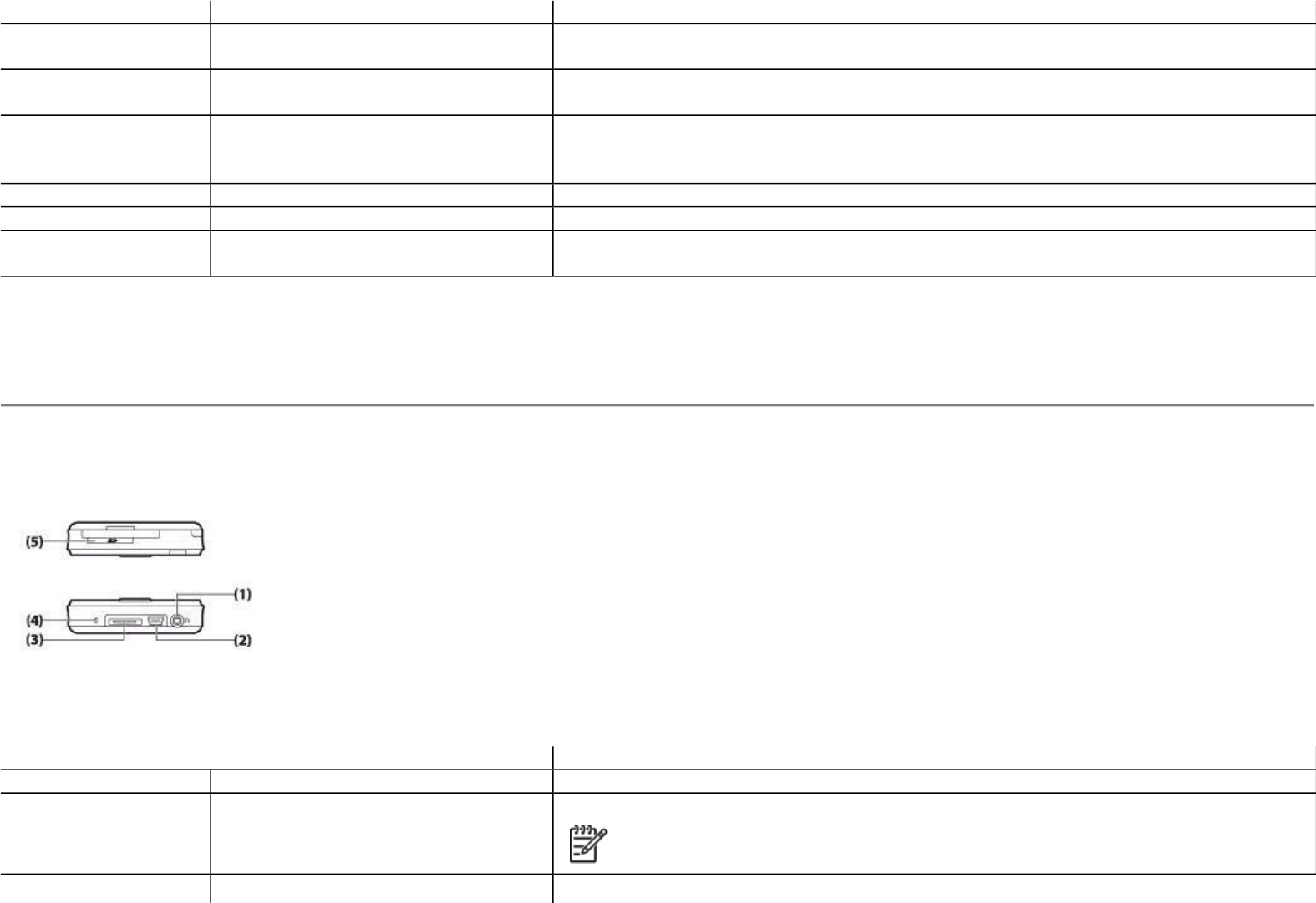
Top and bottom panel components
chan
g
e feature settin
g
s, or
p
la
y
g
ames.
(
4
)
A
pp
lication Ke
y
1 Press to launch the Messaging application. Press and hold to launch the Windows Media
Pla
y
er.
(
5
)
A
pp
lication Ke
y
2 Press to confirm your selection. Press and hold to switch between the landscape and portrait
views.
(
6
)
5–Wa
y
Navi
g
ation Ke
y
Use to select items, navigate menus, change feature settings, or play games. Scroll up, down,
left, or right by pressing the button in the direction you want to scroll. Release the button to
sto
p
the scrollin
g
action. Press the button to select the item hi
g
hli
g
hted on the screen.
(
7
)
A
pp
lication Ke
y
3 Press to dis
p
la
y
the Start menu on the screen. Press and hold to access the Toda
y
screen.
(
8
)
A
pp
lication Ke
y
4 Press to launch the Calendar. Press and hold to launch the Contacts list.
(
9
)
Li
g
ht Senso
r
Use to detect environment light change and adjust backlight setting automatically in a small
ran
g
e b
y
the current backli
g
ht settin
g
.
Com
p
onen
t
Function
(
1
)
3.5 mm Headphone Connecto
r
Plu
g
headset into this connector to listen to audio throu
g
h a headset.
(
2
)
Char
g
in
g
/Communications Por
t
Use to connect the mini-USB char
g
in
g
/s
y
nchronization cable.
NOTE: Mini-USB charging/synchronization cable is an optional accessory.
(
3
)
Dockin
g
Connecto
r
Use to char
g
e
y
our HP iPAQ usin
g
the AC ada
p
ter with the HP Smart Connector. You can
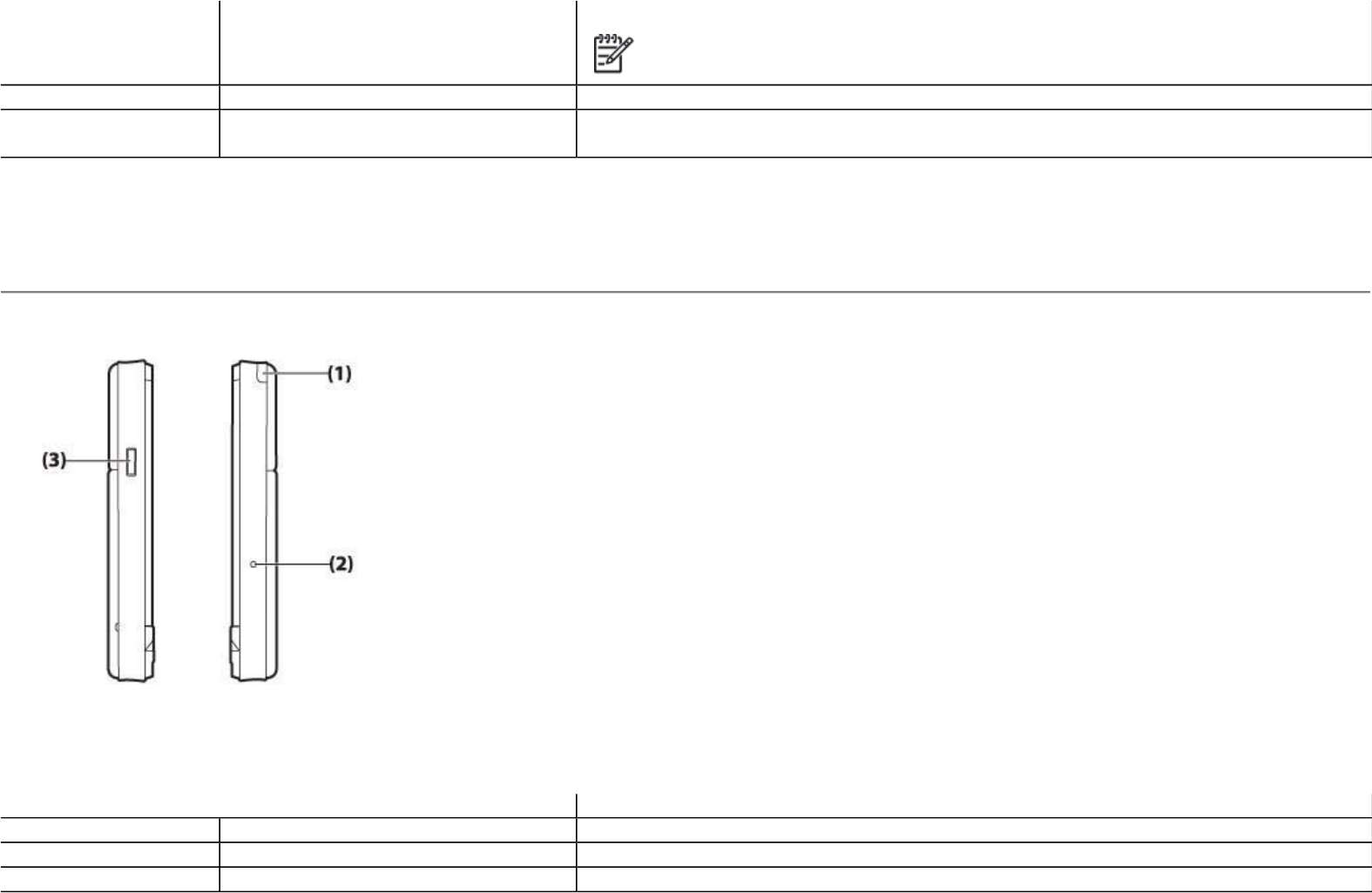
Left and right side components
also dock
y
our HP iPAQ usin
g
a deskto
p
cradle.
NOTE: Desktop cradle is an optional accessory.
(
4
)
Micro
p
hone Use to record voice notes.
(
5
)
SD/SDIO/CF Card Slo
t
Insert a Secure Digital (SD) storage card, a Secure Digital Input Output (SDIO) card, or a
Com
p
act Flash
(
CF
)
card with the label side u
p
for data stora
g
e.
Com
p
onen
t
Function
(
1
)
St
y
lus Use to select elements on the screen and enter information.
(
2
)
Reset Button Press to reset
y
our HP iPAQ.
(
3
)
Voice Recorder Button Use to launch the Voice Recorder a
pp
lication.
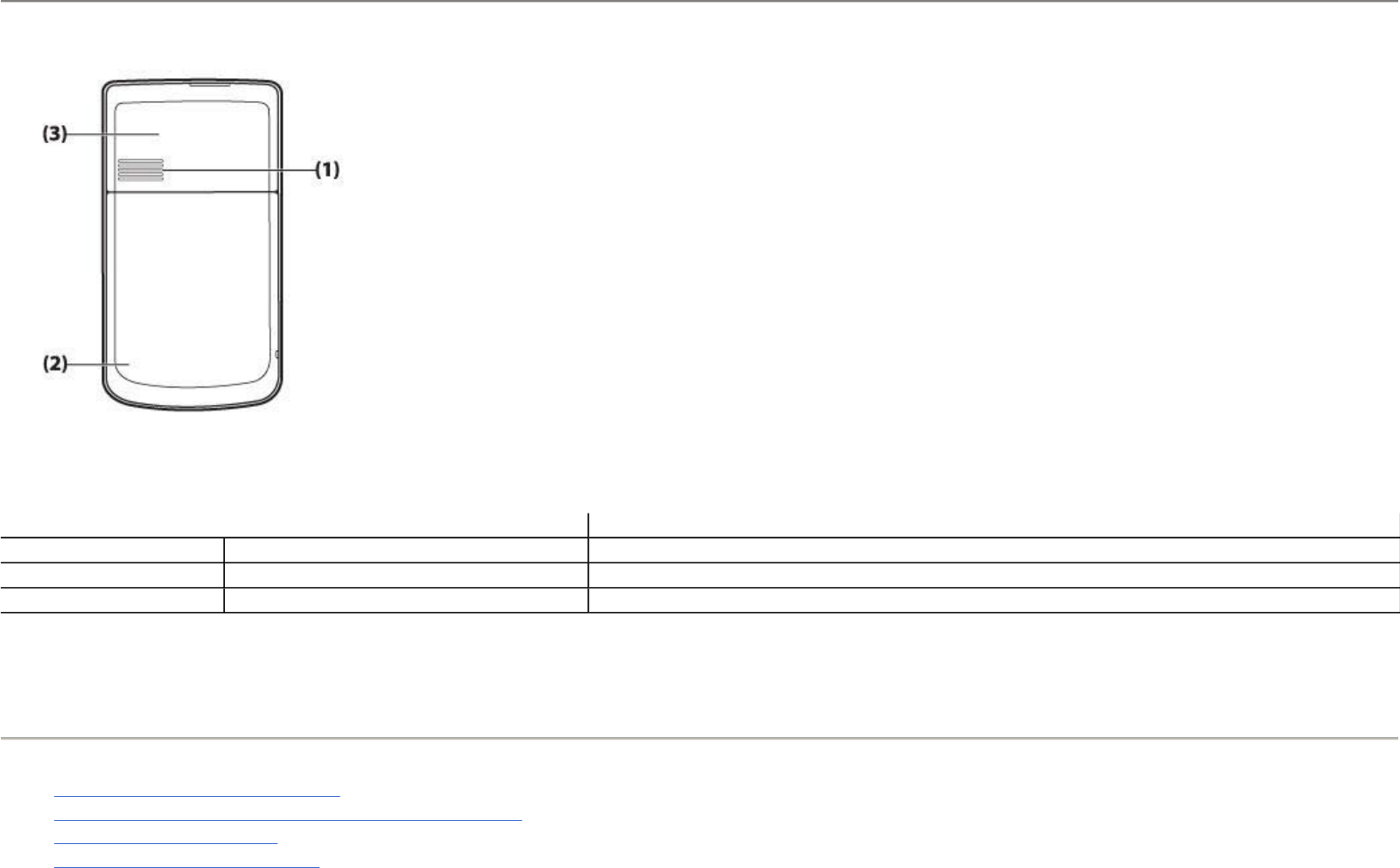
Back panel components
Set up your HP iPAQ
zStep 1: Remove the battery cover
zStep 2: Install the battery and replace the battery cover
zStep 3: Charge the battery
zSte
p
4: Turn on
y
our HP iPAQ
Com
p
onen
t
Function
(
1
)
Back S
p
eake
r
Use the s
p
eaker to listen to audio.
(2) Bluetooth Antenna Detects and radiates Bluetooth si
g
nals.
(
3
)
WLAN Antenna Detects WLAN hots
p
ots.
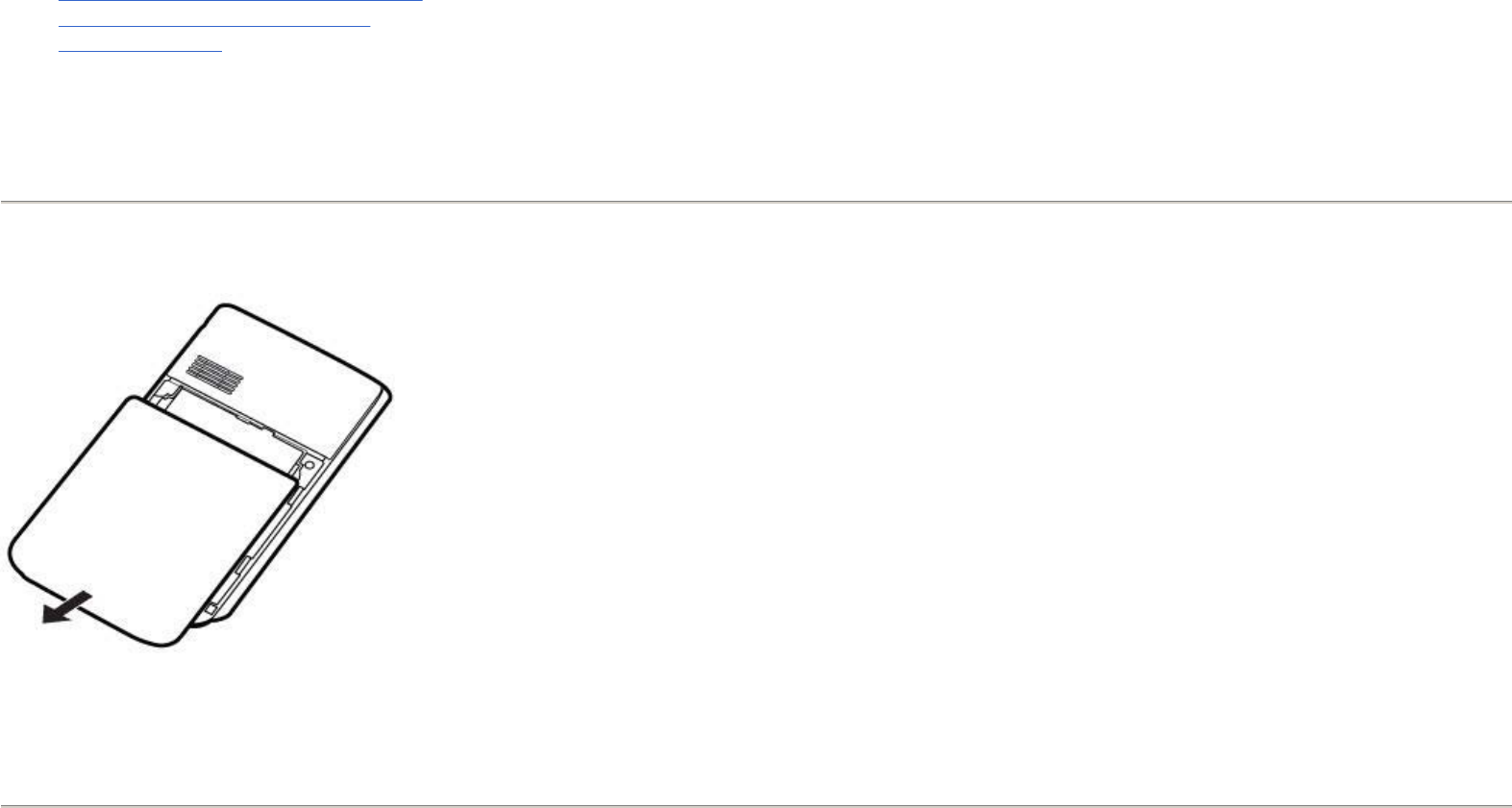
zProtect your HP iPAQ with a password
zFind the serial and model number
zView status icons
Step 1: Remove the battery cover
Slide the cover down and away from the HP iPAQ.
Step 2: Install the battery and replace the battery cover
1.
Ali
g
n the batter
y
connectors on the batter
y
with the housin
g
p
ins in the batter
y
com
p
artment and insert the batter
y
.
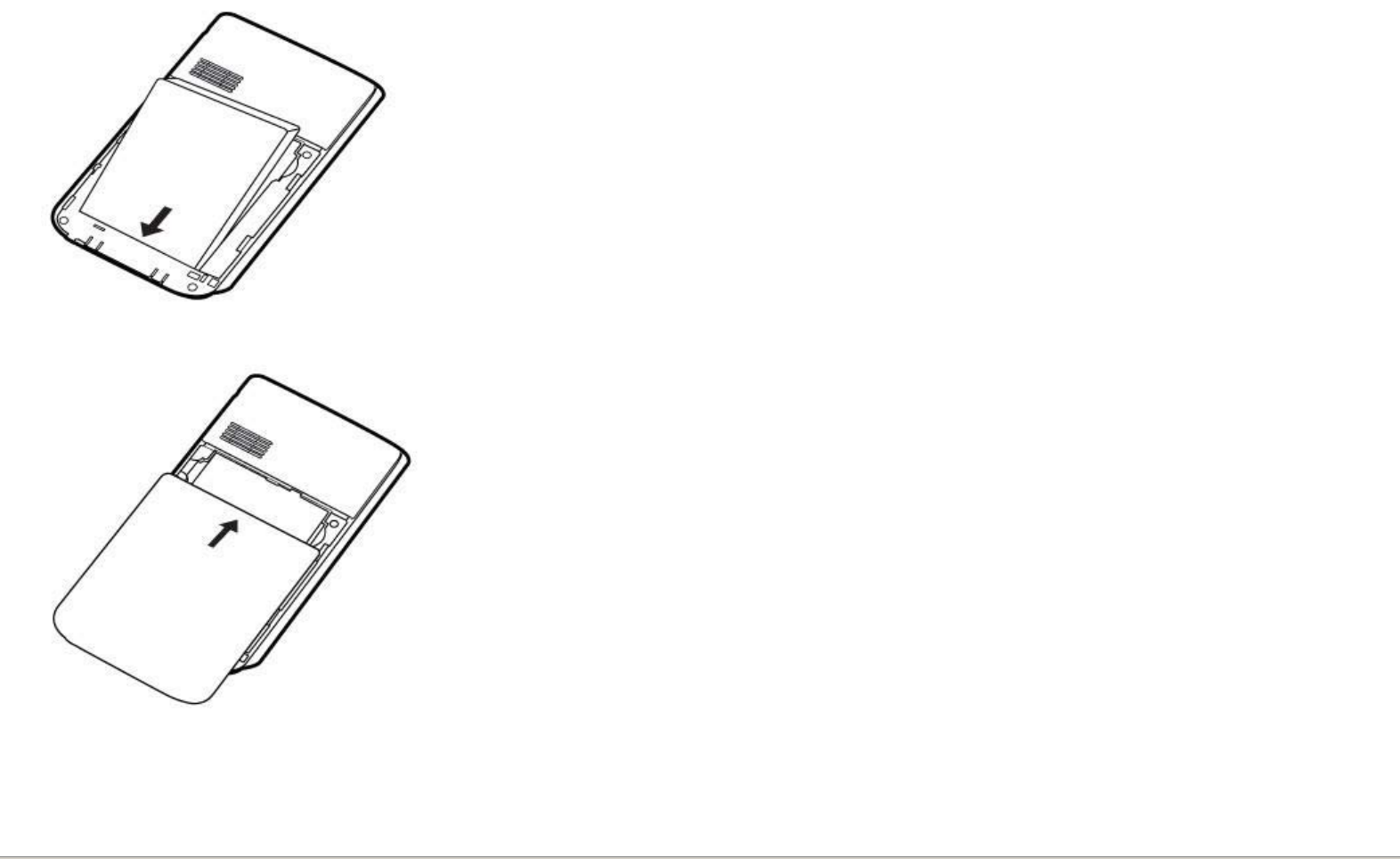
Step 3: Charge the battery
2. Place the batter
y
cover down and slide u
p
until it locks into
p
lace.
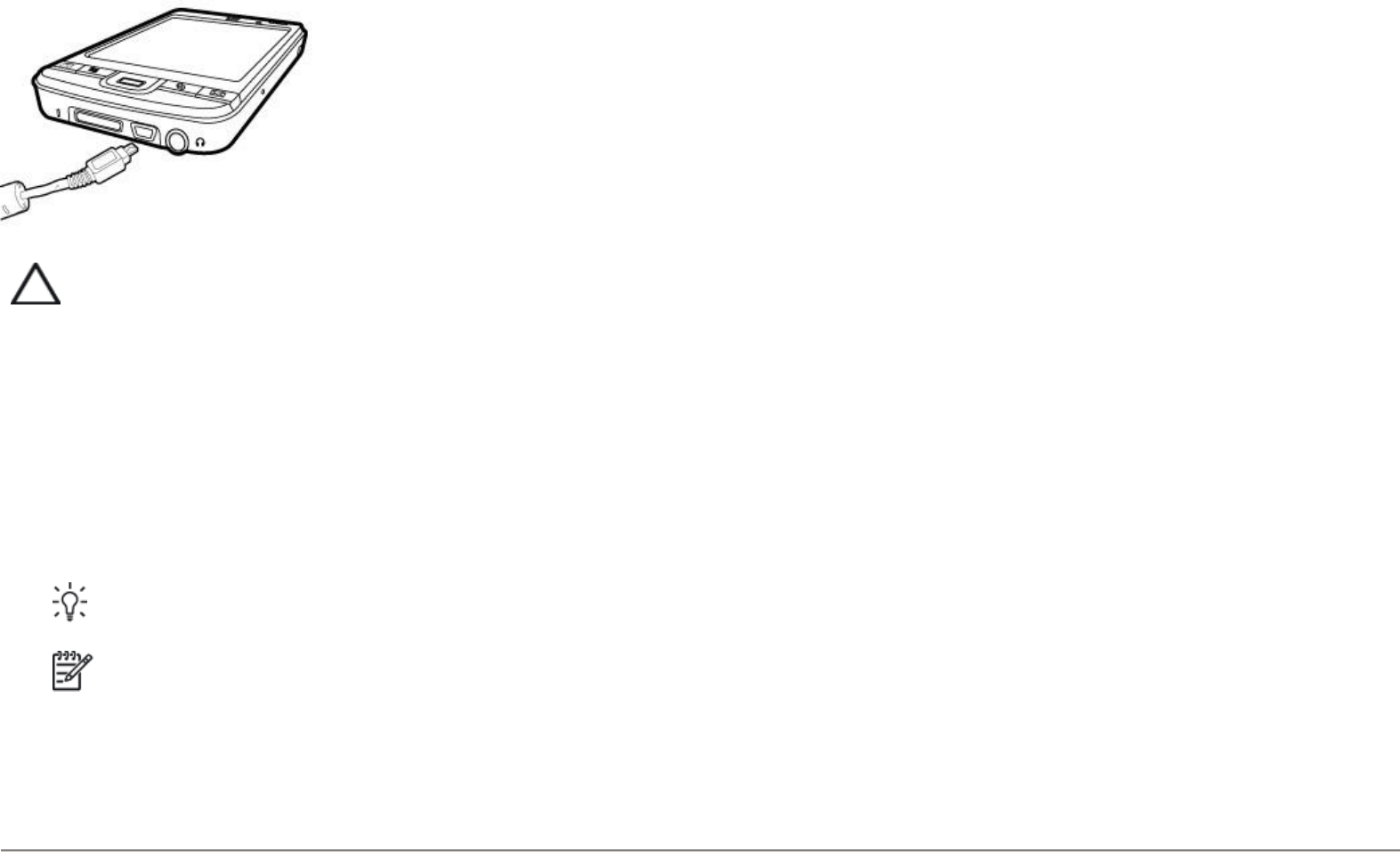
The battery provides power for your HP iPAQ to operate. Your HP iPAQ comes with a HP Smart Connector synchronization cable, which must be used to charge
the device.
It takes approximately 2–4 hours to fully charge the battery for the first time. Subsequent charges might take longer.
Step 4: Turn on your HP iPAQ
Press the Power key to turn on your HP iPAQ. Next, follow the instructions on the screen to complete the setup. Use the on-screen keyboard to enter information.
CAUTION: To avoid damaging your HP iPAQ or the AC adapter, make sure all connectors are properly aligned before connecting.
1. Insert the USB end of the HP Smart Connector s
y
nchronization cable into the
p
ort on the AC ada
p
ter.
2. Connect the AC ada
p
ter to an electrical outlet.
3. Connect the HP Smart Connector synchronization cable to the 24-pin connector on your HP iPAQ. The cable connector fits only one way. If the connector
does not insert easil
y
, turn it over.
TIP: You can also charge the battery by connecting your HP iPAQ to a USB port on your computer using the HP Smart Connector synchronization
cable. You can also charge the battery by connecting a desktop cradle to the Docking connector on your HP iPAQ.
NOTE: Whenever a replacement battery is inserted into your HP iPAQ, press the Power key for at least two seconds. In case the device does not
turn on, attach the AC adapter to turn on your HP iPAQ.

Protect your HP iPAQ with a password
You can secure the data on your HP iPAQ by setting a password. Each time you turn on your HP iPAQ, you will be prompted to enter the password.
To set a password:
Find the serial and model number
Locate the serial and model numbers before contacting HP Customer Support, particularly if you are calling for in-warranty support.
View the serial number and model ID by tapping Start > Programs > HP Help and Support > Serial and Model Number.
You can also find this information next to the battery of your HP iPAQ. To locate the serial number:
View status icons
1. Ta
p
Start > Settin
g
s > Lock.
2. Select the Prom
p
t if device unused for check box, and select the time that
y
our HP iPAQ must be unused before
y
ou are
p
rom
p
ted for a
p
assword.
3. In the Password t
yp
elist, select the t
yp
e of
p
assword
y
ou would like to use. Enter the
p
assword, and then confirm the
p
assword.
4. On the Hint tab, enter a phrase to help you remember your password. Make sure that your hint does not allow others to guess your password. The hint is
dis
p
la
y
ed after the wron
g
p
assword is entered five times in a row.
5. When
p
rom
p
ted, ta
p
o
k
. The next time
y
our HP iPAQ remains unused for the s
p
ecified amount of time,
y
ou will be
p
rom
p
ted to enter
y
our
p
assword.
TIP: Follow the steps above to change or reset your password.
1. Remove the batter
y
cover.
2. Locate the label containin
g
the serial number next to the batter
y
.
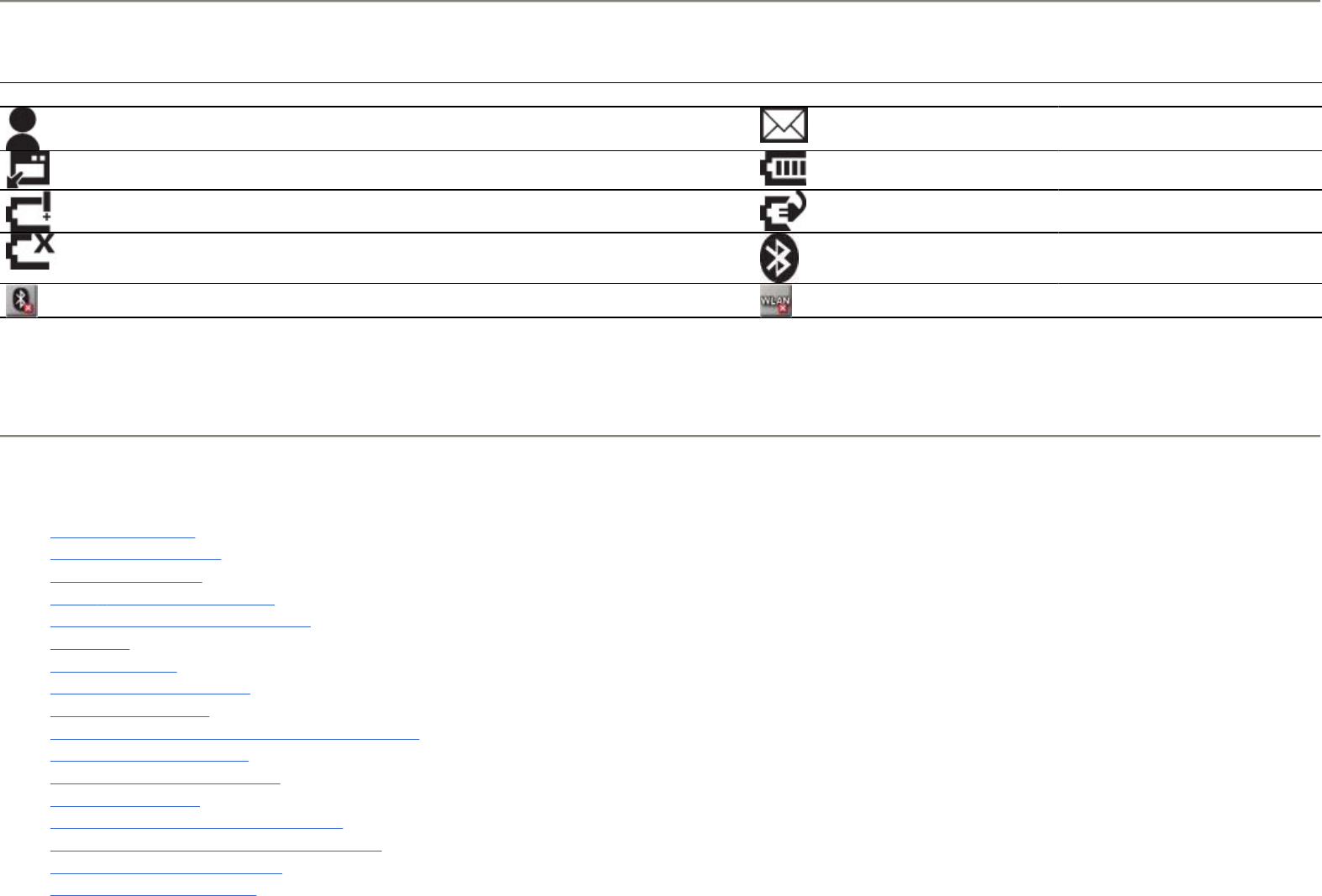
The following table lists the common status indicators and their meanings.
Learn the basics
Get started with your HP iPAQ by learning basic functions such as knowing the Today screen, entering text, and synchronizing data.
zThe Today screen
zUse TodayPanel Lite
zBattery saving tips
zThe 5–Way Navigation key
zLock and unlock your HP iPAQ
zEnter text
zShortcut menus
zEnter owner information
zPerform a soft reset
zView the Operating System (OS) information
zChange the device name
zChange the regional settings
zAdjust the volume
zChange power management settings
zDim or adjust brightness of the backlight
zInstall and remove programs
zO
p
en and close
p
ro
g
rams
Icon Status Icon Status
Instant messa
g
e received
N
ew e-mail
S
y
nc erro
r
Batter
y
level
Batter
y
level low Batter
y
char
g
in
g
N
o batter
y
or batter
y
faul
t
Bluetooth
Bluetooth of
f
WLAN of
f
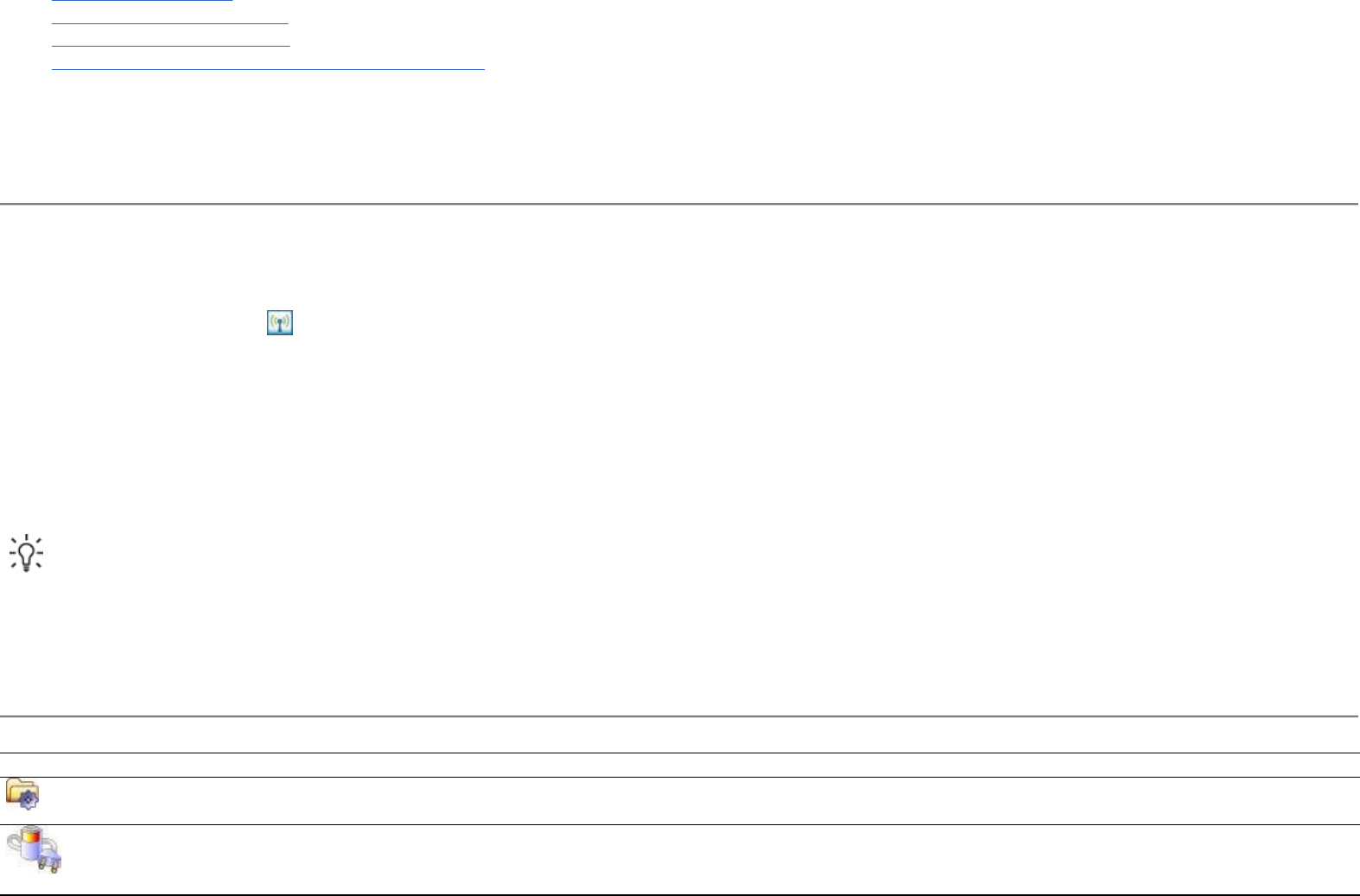
zSet alarms and clocks
zDisplay the clock in title bar
zCreate and assign a category
zAdjust the speed for scrolling through items in a list
The Today screen
The Today screen displays the date and time and provides a quick status of the remaining battery capacity and upcoming appointments. At the top of the Today
screen, the connectivity icons, volume indicator, and clock are displayed.
From the Today screen, tap the (iPAQ Wireless) icon to open the iPAQ Wireless application. On the All tab, you can turn all wireless connections on/off.
To customize the Today screen:
Use TodayPanel Lite
1. Ta
p
Start > Settin
g
s > Toda
y
.
2. On the A
pp
earance tab, select the re
q
uired theme for the back
g
round of the Toda
y
screen.
3. On the Items tab, select the items to a
pp
ear on the Toda
y
screen.
TIP: To move the order in which the items appear, tap Start > Settings > Today. On the Items tab, tap Move Up or Move Down.
Icon
N
ame Function
Toda
y
Panel Lite Use to change the TodayPanel Lite options or the Today screen
settin
g
s.
Batter
y
p
owe
r
Use to view the amount of remaining battery power on your
HP iPAQ. Set the standby period, time duration for turning off
the HP iPAQ, and USB char
g
in
g
method.
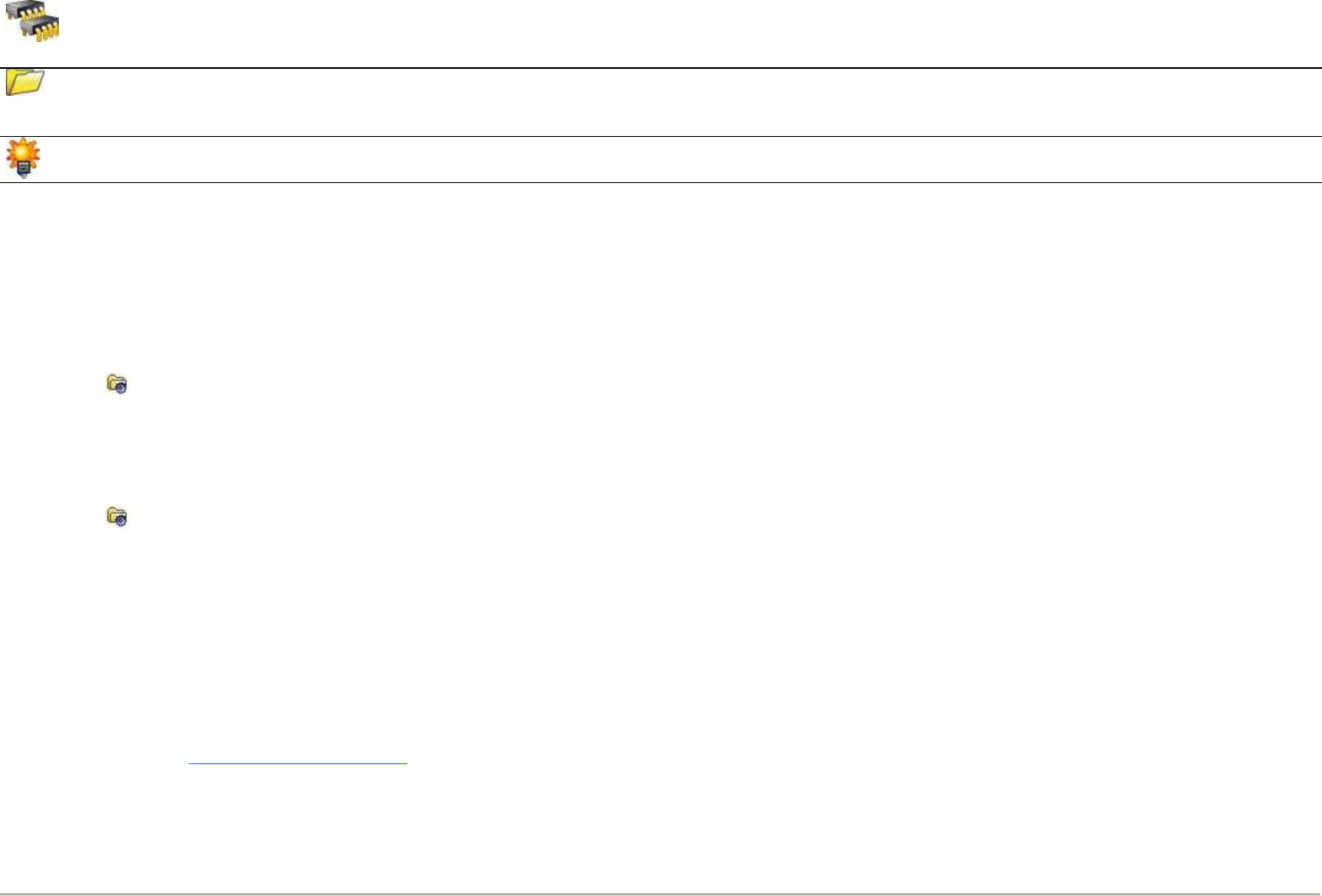
To use TodayPanel Lite, tap the required icon, make the necessary changes, and tap ok.
You can change the TodayPanel Lite icons to compact mode, which allows more space on the Today screen. You can also change the memory and storage
settings to display as percentages instead of file sizes.
To change the TodayPanel Lite icons to compact mode:
To display memory and storage as percentages:
To remove the TodayPanel Lite application from the Today screen:
For more options, visit http://www.rhinocode.com to upgrade to TodayPanel.PRO.
Battery saving tips
Main memor
y
Use to view the amount of available main memory on your
HP iPAQ. View, activate, and stop all running programs from
this screen.
Stora
g
e memor
y
Use to view the amount of available storage memory on your
HP iPAQ. View, activate, and stop all running programs from
this screen.
Backli
g
h
t
Use to view and change the backlight options on your
HP iPAQ.
1. Ta
p
the
(
Toda
y
Panel Lite
)
icon > O
p
tions to o
p
en the Toda
y
Panel Lite a
pp
lication.
2. Ta
p
the Dis
p
la
y
Mode list and selec
t
Com
p
act.
1. Ta
p
the
(
Toda
y
Panel Lite
)
icon > O
p
tions to o
p
en the Toda
y
Panel Lite a
pp
lication.
2. Ta
p
the Dis
p
la
y
Memor
y
as list or the Dis
p
la
y
Stora
g
e as list and select the
p
ercenta
g
e listed.
3. Ta
p
o
k
.
1. Ta
p
Start > Settin
g
s > Toda
y
> Items.
2. Clear the Toda
y
Panel check box and ta
p
o
k
.

You can adjust the settings on your HP iPAQ to fit your individual needs and to help your battery last as long as possible between charges. Here are some
recommendations to conserve battery life:
HP also offers a variety of accessories to keep your HP iPAQ charged when you are out of the office for extended time periods. These include the mini-USB
synchronization cable and travel adapter. Use original HP batteries and chargers to charge your HP iPAQ.
To check the battery power, tap Start > Settings > System > Power.
The 5–Way Navigation key
The 5–Way Navigation key is used to navigate the menu system, change feature settings, or play games. It is also used to scroll up and down a list and select a
required function.
Lock and unlock your HP iPAQ
You can lock your HP iPAQ to prevent accidental key presses while you carry your device.
●Sounds – Every time you are notified of an event, battery power is consumed. Tap Start > Settings > Personal >Sounds & Notifications to turn off any
unnecessar
y
notifications.
●Auto Turn Off the Backlight – Tap Start > Settings > System > Backlight. Specify a short amount of wait before turning off the backlight. On the
Batter
y
Power tab, se
t
Turn off backli
g
ht if device is not used for to 10 seconds.
●Turn off Bluetooth and WLAN
–
Alwa
y
s turn of
f
Bluetooth and WLAN when not in use.
TIP: Up and down are your primary movements while navigating within menus or through the Contacts list. Move left and right to change the feature
settings and edit text. Press the button to select the item highlighted on the screen.
NOTE: When your device is locked, you can still receive e-mail notifications and see appointment reminders.

To lock your HP iPAQ:
To unlock your HP iPAQ:
Enter text
Based on your preference, you can use the on-screen keyboard or a handwriting recognition feature such as Block Recognizer, Keyboard Letter Recognizer, or
Transcriber to enter text.
You can now go to a program (such as Notes) and start entering text.
▲On the Toda
y
screen, ta
p
Device unlocked.
▲On the Toda
y
screen, tap Unloc
k
. Now,
y
our iPAQ is unlocked and read
y
for use.
1. Ta
p
Start > Settin
g
s > Personal > In
p
ut.
2. On the In
p
ut Method tab, select a text input method and chan
g
e options as appropriate.
3. Ta
p
o
k
.
Tex
t
-In
p
ut Method Definition
Block Reco
g
nizer Use a single stroke to write letters, numbers, symbols, and punctuation marks
that
g
et converted into t
yp
ed text.
Ke
y
board Ta
p
ke
y
s on the ke
y
board to enter text.
Letter Reco
g
nizer Write individual letters, numbers, and punctuation marks that are converted into
t
yp
ed text.
Transcriber Write in cursive, print, or mixed handwriting (consisting of both cursive and
p
rint
)
, and convert
y
our writin
g
into t
yp
ed text.
TIP: Change the text input method from within any program by tapping the (Input Selector) arrow and selecting an input method.

Shortcut menus
A shortcut menu is displayed when you tap and hold an item. This menu displays the most common commands for the specific item. For example, you can delete
an appointment by using commands on a shortcut menu.
When the shortcut menu displays, tap the action you want to perform.
To close a shortcut menu without performing an action, tap anywhere outside the menu.
Enter owner information
Enter your personal information, such as your name and address, so that the HP iPAQ can be returned to you if it is lost.
Perform a soft reset
A soft reset stops all running applications, but does not erase any programs or saved data.
1. Ta
p
Start > Settin
g
s > Personal > Owner Information.
2. On the Identification tab, enter
y
our
p
ersonal information.
TIP: You can edit the owner information directly from the Today screen.
NOTE: Be sure to close all running applications before performing a soft reset.

To perform a soft reset:
View the Operating System (OS) information
The Version tab displays important device information, including the type of processor and the amount of available memory.
Change the device name
The device name is used to identify your HP iPAQ in the following situations:
To change the device name:
1. Locate the recessed Reset
b
utton on the HP iPAQ.
2. Use the st
y
lus to li
g
htl
y
p
ress the Reset
b
utton.
▲Ta
p
Start > Settin
g
s > S
y
stem > About.
●S
y
nchronizin
g
with a com
p
ute
r
●Connectin
g
to a network
NOTE: If you synchronize multiple devices with the same computer, each device must have a unique name.
1. Ta
p
Start > Settin
g
s > S
y
stem > About >Device ID tab.
2. Enter a name. The device name must be
g
in with a letter, consist of letters from A to Z and numbers from 0 to 9, and should not contain s
p
aces.

Change the regional settings
The style in which numbers, currency, dates, and times are displayed is specified in regional settings.
To change the regional settings:
Adjust the volume
You can change the volume for various sounds, such as the sound you hear when you tap program names and menu options.
You can also set a specific sound for a specific event.
1. Ta
p
Start > Settin
g
s > S
y
stem > Re
g
ional Settin
g
s > Re
g
ion.
2.
The region you select determines the options available on the other tabs.
Select a re
g
ion.
3. To customize additional settin
g
s, ta
p
the tabs
g
iven below to dis
p
la
y
the re
q
uired o
p
tions:
●Re
g
ion
●Number
●Currenc
y
●Time
●Date
1. Ta
p
the
(
S
p
eaker
)
icon at the to
p
of the screen.
2. Move the s
y
stem volume slider on the screen to the re
q
uired volume level.
3. To mute s
y
stem sounds, ta
p
Off.
1. Tap Start > Settin
g
s > Personal > Sounds & Notifications.

Change power management settings
Dim or adjust brightness of the backlight
You can set the backlight to dim after a specified amount of time has elapsed.
You can also increase or decrease the brightness of the backlight.
2. On the Sounds tab, choose how
y
ou want to be notified b
y
selectin
g
the a
pp
ro
p
riate check boxes.
3. On the Notifications tab, in the Event list, tap an event name and choose how you want to be notified by selecting the appropriate check boxes. You can
choose from several o
p
tions, such as a s
p
ecial sound, a messa
g
e, or a flashin
g
li
g
ht.
NOTE: Turning off sounds and the LED notification helps conserve battery power.
1. Ta
p
Start > Settin
g
s > S
y
stem > Power.
2. Ta
p
Advanced and select the len
g
th of time the HP iPAQ should remain on when usin
g
batter
y
p
ower or external
p
ower.
1. Ta
p
Start > Settin
g
s > S
y
stem > Backli
g
ht.
2. Ta
p
Batter
y
p
ower o
r
External Power.
3. Select the backli
g
ht o
p
tions of
y
our choice.
▲
Move the slider near the (Backlight) icon to increase or decrease the brightness. You can also change the brightness by tapping Start > Settings >
S
y
stem > Backli
g
ht >Bri
g
htness.

Install and remove programs
To install programs on your HP iPAQ:
To remove programs from your HP iPAQ:
If programs are lost from your HP iPAQ for any reason, most of them can be re-installed using any synchronization software. See Synchronization software for
more information.
Open and close programs
You do not need to exit a program to open another or to conserve memory. The system manages memory automatically.
To open a program, tap Start, and then select the required program from the list. If you do not see the program you want to launch, tap Start > Programs.
In most cases, selecting x or ok will close an application but will not stop the application from running in memory. However, you can close it manually.
1. Use a HP Smart Connector s
y
nchronization cable to connect
y
our HP iPAQ to
y
our com
p
uter.
2. Follow the instructions in the Installation Wizard
p
rovided with the
p
ro
g
ram
y
ou want to install.
3. Check the screen on
y
our HP iPAQ to see if an
y
further ste
p
s are necessar
y
to com
p
lete the
p
ro
g
ram installation.
1. Tap Start > Settin
g
s > S
y
stem > Remove Pro
g
rams.
2. Select the check boxes for
p
ro
g
rams
y
ou want to remove, and then ta
p
Remove.
NOTE: By removing a program from your HP iPAQ, you can increase available memory on the device.
1. Ta
p
Start > Settin
g
s > S
y
stem > Memor
y
>Runnin
g
Pro
g
rams.
2. From the Runnin
g
Pro
g
rams list, ta
p
the
p
ro
g
ram
y
ou want to close, and then ta
p
Sto
p
.

Set alarms and clocks
To set alarm on your HP iPAQ:
To set time on your HP iPAQ:
Display the clock in title bar
When viewing certain programs, the clock might not be displayed in the title bar. To display the clock in the title bar at all times:
Create and assign a category
1. Ta
p
Start > Settin
g
s > S
y
stem > Clock & Alarms >Alarms.
2. Ta
p
<Descri
p
tion> to enter a name for the alarm.
3. Ta
p
a week da
y
to set the alarm. You can also set the alarm for multi
p
le da
y
s.
4. Ta
p
Time and set the time for the alarm.
5. Ta
p
the
(
Alarm
)
icon to s
p
ecif
y
the t
yp
e of alarm. You can choose a sin
g
le sound or a re
p
eatin
g
sound.
6. If
y
ou choose to
p
la
y
a sound, ta
p
the list next to the Pla
y
sound check box, and then ta
p
the sound
y
ou want to set.
1. Ta
p
Start > Settin
g
s > S
y
stem > Clock & Alarms >Time.
2. Selec
t
Home to set the time zone, local time, and date when
y
ou are in
y
our home countr
y
. Selec
t
Visitin
g
to set these o
p
tions while travelin
g
.
1. Ta
p
Start > Settin
g
s > S
y
stem > Clock & Alarms.
2. On the More tab, ta
p
to select the Dis
p
la
y
the clock on the title bar in all
p
ro
g
rams check box.

In the Calendar, Contacts, and Tasks programs, you can use categories to organize and group your appointments, contacts, and tasks.
Adjust the speed for scrolling through items in a list
To change the scrolling speed:
Connections
You can use your HP iPAQ to connect to and exchange information with other handheld devices, your computer, various network types, or the Internet. Following
are the ways to get connected:
1. From the list, select an existin
g
item or create a new one.
2. Do one of the followin
g
:
●For an existin
g
item in Calendar, o
p
en the a
pp
ointment and ta
p
Menu >Edit >Cate
g
ories.
●For an existin
g
item in Tasks, o
p
en the task and ta
p
Edit >Cate
g
ories.
●For an existin
g
item in Contacts, o
p
en the contact and ta
p
Edit >Cate
g
ories.
●For a new item in Calendar, Contacts, and Tasks, selec
t
Cate
g
ories.
3. Select the re
q
uired check box
(
Business,Holida
y
,Personal, o
r
Seasonal
)
and ta
p
o
k
to assi
g
n the cate
g
or
y
.
4. Ta
p
o
k
to return to the a
pp
ointment, task, or contact.
NOTE: To create a new category, tap New and assign a name to the category for a contact, task, or an appointment. The new category is automatically
assigned to the item.
1. Ta
p
Start > Settin
g
s > Personal > Buttons > U
p
/Down Control.
2. Unde
r
Dela
y
before first re
p
eat, move the slider to reduce or increase the time that ela
p
ses before scrollin
g
be
g
ins.
3. Unde
r
Re
p
eat rate, move the slider to chan
g
e the time it takes to scroll from one item to the next.

You can access all these connection types by tapping Start > Settings > Connections.
zWLAN
zBluetooth
zAdvanced settings
WLAN
With wireless access, you do not need to use cables to connect your HP iPAQ to the Internet. Instead, access points transmit data to and from your wireless device.
Your HP iPAQ can connect to an IEEE 802.11b/g device or connect directly to other WLAN-enabled devices.
With WLAN, you can:
On the Today screen, tap the (iPAQ Wireless) icon to access the WLAN features.
This section provides information about the following topics:
zWLAN terms
●WLAN
●Bluetooth
●Access the Interne
t
●Send and receive e-mail
●Access cor
p
orate network information
●Use Virtual Private Networks
(
VPNs
)
for secure remote access
●Use hots
p
ots for wireless connectivit
y
NOTE: Use of dial-up and wireless Internet, e-mail, corporate networks, and other wireless communications, such as Bluetooth devices, might require
separately purchased additional hardware and other compatible equipment, in addition to a standard WLAN infrastructure and a separately
purchased service contract. Not all Web content might be available. Some Web content might require installation of additional software.
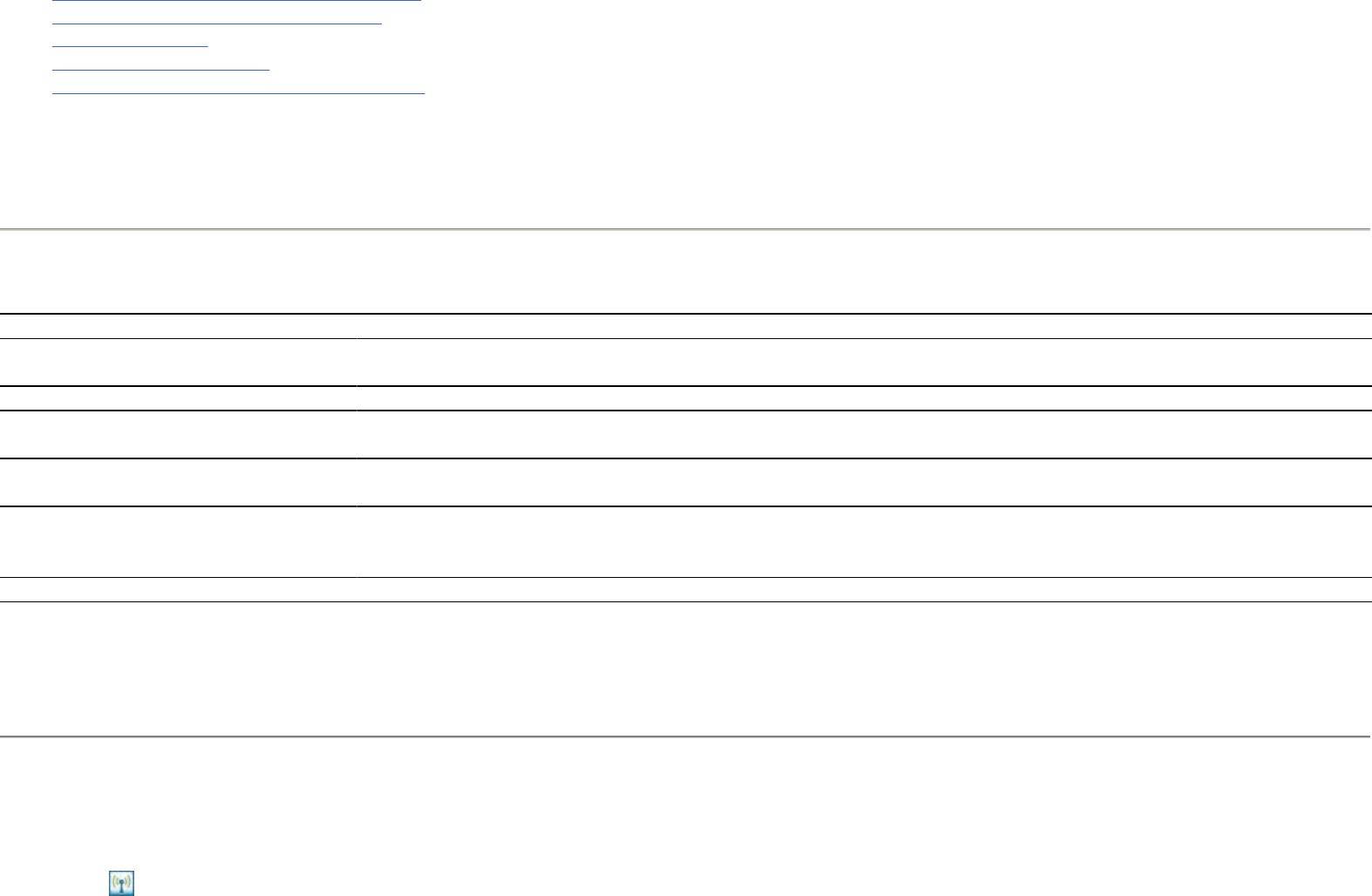
zAutomatically connect to a WLAN network
zManually connect to a WLAN network
zFind an IP address
zDelete a wireless network
zConfigure the 802.1x authentication settings
WLAN terms
It is recommended that you become familiar with the following terms as you begin to use WLAN technology.
Automatically connect to a WLAN network
When you turn on the WLAN radio, your HP iPAQ automatically detects WLAN networks that are broadcasting their signals. If your WLAN network is not set to
broadcast, then you have to connect to it manually. Before trying to connect to a WLAN network, determine if authentication information is needed by contacting
your network administrator.
Ter
m
Definition
802.11 standard An approved standard specification of radio technology from the Institute of Electrical and Electronics Engineers
(
lEEE
)
used for wireless local area networks
(
WLANs
)
.
Device-to-com
p
uter or ad-hoc A mode that does not use access
p
oints. It
p
rovides inde
p
endent
p
ee
r
-to-
p
eer connectivit
y
in a wireless LAN.
Domain Name S
y
stem
(
DNS
)
The way that Internet domain names are located and translated into IP addresses. It is easy to remember name for an
Internet address. Ever
y
Web site has its own s
p
ecific IP address on the Internet.
Encr
yp
tion An alphanumeric (letters and/or numbers) conversion process of data primarily used for protection against any
unauthorized
p
eo
p
le.
Hots
p
ots Public or private areas where you can access WLAN service. These wireless connections can be located, for example,
at a library, cyber cafe, hotel, airport lounge, or convention center. This service can be free or sometimes requires a
fee.
Infrastructure This connection mode uses wireless access points to connect to networks.
1. Ta
p
the
(
iPAQ Wireless
)
icon.

Manually connect to a WLAN network
A wireless network can be added manually by entering the settings information to add the network. Before trying to connect to a WLAN network, determine if
authentication information is needed by contacting your network administrator.
Find an IP address
2. Ta
p
the
(
WLAN
)
icon to turn on WLAN.
3. Once the HP iPAQ detects a WLAN network,
y
ou are asked to choose if
y
ou want to connect. Select the network
y
ou want to connect to and ta
p
Connect.
1. Ta
p
the
(
iPAQ Wireless
)
icon.
2. Ta
p
the
(
WLAN
)
icon to turn on WLAN.
3. Ta
p
Start > Settin
g
s > Connections > iPAQ Wireless >WLAN >View WLAN Networks >Wireless >Add New…
4. Enter the Network name.
5. Choose a connection method. Select The Internet to connect to the Internet through an ISP or select Work to connect to a company network. You should
selec
t
Wor
k
if the network re
q
uires a
p
rox
y
server.
6. Ta
p
Next.
●To use authentication, select the authentication method from the Authentication list.
●To use data encr
yp
tion, select an encr
yp
tion method from the Data Encr
yp
tion list.
●To automaticall
y
use a network ke
y
, ta
p
The ke
y
is automaticall
y
p
rovided, else enter the Network ke
y
and Ke
y
index.
NOTE: To delete a connection, tap Start > Settings > Connections > iPAQ Wireless > WLAN > View WLAN Networks > Wireless. Tap and hold
the connection you want to remove, and then tap Remove Settings.
1. Ta
p
the
(
iPAQ Wireless
)
icon.

Delete a wireless network
You can delete networks you manually entered. However, if a network was automatically detected, you cannot delete it.
To delete an existing or available wireless network:
Configure the 802.1x authentication settings
Before performing these steps, determine if authentication information is needed by contacting your network administrator.
2. Ta
p
the
(
WLAN
)
icon to turn on WLAN.
3. Connect to a network automatically or manually by tapping Start > Settings > Connections > iPAQ Wireless > WLAN > View WLAN Networks >
Network Ada
p
ters.
4. Select a WLAN network. The WLAN IP address is shown here.
1. Ta
p
the
(
iPAQ Wireless
)
icon.
2. Ta
p
the
(
WLAN
)
icon to turn on WLAN.
3. Ta
p
WLAN > View WLAN Networks >Wireless.
4. In the Confi
g
ure Wireless Networks
b
ox, ta
p
and hold the network
y
ou want to delete.
5. Ta
p
Remove Settin
g
s.
1. To manuall
y
enter information, ta
p
Start > Settin
g
s > Connections >iPAQ Wireless > WLAN >View WLAN Networks >Network Ada
p
ters.
2. In Wireless networks list, select the network
y
ou want to confi
g
ure.
3. For increased securit
y
, select the Use IEEE 802.1x network access control check box. Then, select the a
pp
ro
p
riate EAP t
yp
e.

Bluetooth
Bluetooth wireless technology is a short-range data communication technology. It uses frequency hopping in timeslots and has the ability to simultaneously handle
both data and voice transmissions. Bluetooth signals avoid interference from other signals by hopping to a new frequency after transmitting or receiving a data
packet. Therefore, this technology is robust, cost-effective, and replaces cables connecting devices assuring high levels of security.
This section provides information about the following topics:
zBluetooth terms
zBluetooth Manager
zBluetooth Phone Manager
zConnect to a computer via Bluetooth
zBluetooth device profiles
zCreate, end, and accept a Bluetooth partnership
zRename a Bluetooth partnership
zPair and unpair devices
zConnect to a Bluetooth Headset
zMake a device discoverable
zOpen Bluetooth settings
zAuthorization to access services
zUse a passkey or bond
zSet a Bluetooth shared folder
zBluetooth Stack 2.0/EDR
Bluetooth terms
It is recommended that you become familiar with the following terms as you begin to use Bluetooth technology.
Ter
m
Definition
Authentication Verification of a numeric
p
asske
y
before a connection or activit
y
can be com
p
leted.
Authorization A
pp
roval of a connection, access, or activit
y
before it can be com
p
leted.
Bondin
g
(Paired devices) Creatin
g
a trusted connection between
y
our device and another. After a bond is created, the two devices become
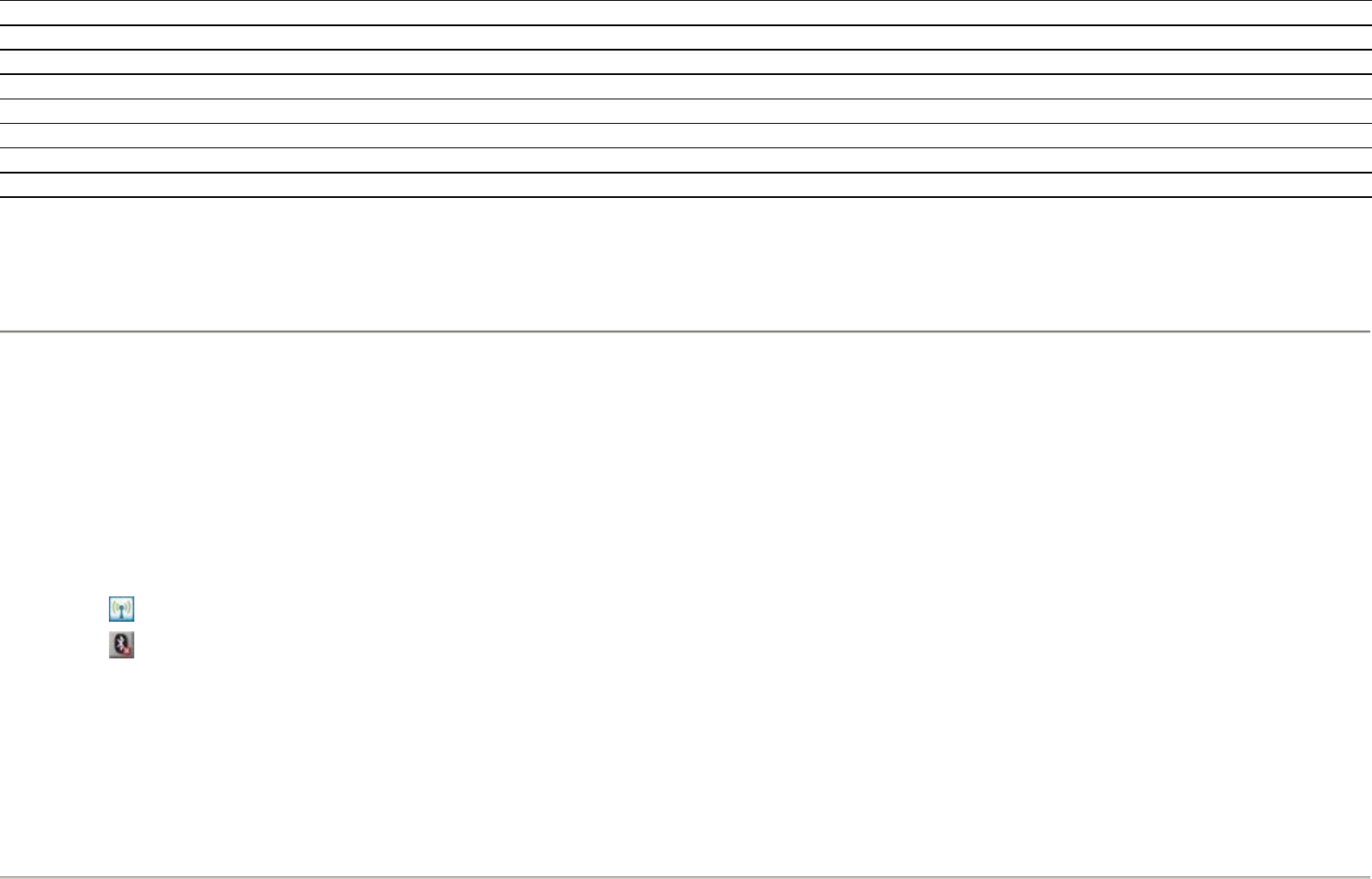
Bluetooth Manager
Use Bluetooth Manager to:
To access Bluetooth manager:
When you are required to locate a device and connect to it, tap New. The Bluetooth browser then searches for other Bluetooth devices.
Bluetooth Phone Manager
p
aired. A
p
aired device does not re
q
uire authentication or authorization.
Device address Uni
q
ue electronic address of a Bluetooth device.
Device discover
y
Location and reco
g
nition of another Bluetooth device.
Device ID
N
ame that a Bluetooth device
p
rovides when discovered b
y
another device.
Encr
yp
tion Method of
p
rotectin
g
data.
Passke
y
Code
y
ou enter to authenticate connections or activities re
q
uested b
y
other devices.
Personal Information Mana
g
er
(
PIM
)
Collection of
p
ro
g
rams used to mana
g
e dail
y
business tasks
(
for exam
p
le: Contacts, Calendar, and Tasks
)
.
Profiles Collection of Bluetooth settin
g
s.
Service discover
y
Determination of which pro
g
rams
y
ou have in common with other devices.
●Establish connections
●Exchan
g
e business cards
●Dis
p
la
y
shortcuts
1. Ta
p
the
(
iPAQ Wireless
)
icon.
2. Ta
p
the
(
Bluetooth
)
icon to turn Bluetooth on.
3. Ta
p
Bluetooth >Bluetooth Connections. The first screen that dis
p
la
y
s is M
y
Shortcuts.

Use Bluetooth Phone Manager to connect your HP iPAQ to a Bluetooth-enabled cell phone, which allows use of the phone as a modem to browse the Internet or
transfer other information. To do this, create a Bluetooth connection between your HP iPAQ and the cell phone, and then send information to the phone using
Bluetooth. The phone relays the information over the phone line and then sends back to your HP iPAQ any information requested over the connection.
To establish a connection between your HP iPAQ and a cell phone using Bluetooth Phone Manager:
For more information, open Bluetooth Phone Manager and tap Tools > Help.
Connect to a computer via Bluetooth
For best results, connect the HP iPAQ to the computer using USB to establish a synchronization relationship before connecting via Bluetooth.
Bluetooth device profiles
NOTE: Ensure both your HP iPAQ and the cell phone are turned on, discoverable, and within close range.
1. Ta
p
Start > Pro
g
rams >BT PhoneMana
g
er.
2. If usin
g
the a
pp
lication for the first time, ta
p
Yes to set u
p
a
p
airin
g
with a Bluetooth
p
hone.
3. Follow the on-screen instructions to create a
p
airin
g
between
y
our HP iPAQ and the
p
hone.
1. Follow the instructions in the s
y
nchronization software hel
p
on the com
p
uter for confi
g
urin
g
Bluetooth on
y
our com
p
uter.
2. On the HP iPAQ, ta
p
Start > Pro
g
rams >ActiveS
y
nc.
3. Ta
p
Menu > Connect via Bluetooth. Make sure the device and com
p
uter are within close ran
g
e.
4. If this is the first time you have connected to this computer via Bluetooth, complete the Bluetooth wizard on the HP iPAQ and set up a Bluetooth partnership
with the com
p
uter.
5. Ta
p
S
y
nc.
6. Ta
p
Menu > Disconnect Bluetooth.
TIP: To preserve battery power, turn off Bluetooth.

The functions that Bluetooth supports are called services or profiles. You can communicate only with Bluetooth devices that support at least one of the following
profiles:
Create, end, and accept a Bluetooth partnership
You can exchange information between your HP iPAQ and another device that has Bluetooth capabilities. For this, you will have to first create a Bluetooth
partnership between the two devices.
●ActiveS
y
nc–Uses Serial Port Profile
(
SPP
)
to connect to ActiveS
y
nc on a com
p
ute
r
●Advanced Audio Distribution Profile
(
A2DP
)
●Audio Video Remote Control Profile
(
AVRCP
)
●Basic Ima
g
in
g
Profile
(
BIP
)
●Basic Printer Profile
(
BPP
)
●Dial-u
p
Networkin
g
(
DUN
)
●File Transfer Protocol
(
FTP
)
●Generic Access Profile
(
GAP
)
●Headset Su
pp
ort Profile
(
HSP
)
●Human Interface Device Profile
(
HID
)
●Ob
j
ect Exchan
g
e
(
OBEX
)
Protocol
●Ob
j
ect Push Protocol
(
OPP
)
●Personal Area Network
(
PAN
)
●Serial Port Profile
(
SPP
)
●Service Discover
y
Protocol
(
SDP
)
NOTE: To exchange information between two Bluetooth enabled devices, make sure Bluetooth is turned on both devices. The devices need not be in
the discoverable mode.
To end a Bluetooth partnership:
To accept a Bluetooth partnership:
If you cannot discover another device, try the following:
1. Make sure the two devices are turned on, discoverable, and within close ran
g
e.
2. Ta
p
Start > Settin
g
s > Connections > Bluetooth.
3. Tap Bluetooth Manager > New > Explore a Bluetooth Device. Your HP iPAQ searches for other devices with Bluetooth capabilities and displays them in
the list.
4. Ta
p
the name of the other device, and ta
p
Next.
5. In Security, if you want to use a secure, encrypted connection (recommended for enhanced security), check this box, and tap Next. Otherwise, leave the
Securit
y
field blank and tap Next.
6. Enter the same
p
asske
y
on the other device.
7. Ta
p
Finish.
8. To
g
ive the
p
artnershi
p
a more meanin
g
ful name, ta
p
and hold the device name unde
r
M
y
Shortcuts, then ta
p
Rename.
1. Ta
p
Start > Settin
g
s > Connections > Bluetooth >Bluetooth Mana
g
er.
2. Ta
p
and hold the
p
artnershi
p
y
ou want to end.
3. Ta
p
Delete.
1. Make sure
y
our device is turned on, discoverable, and within close ran
g
e.
2. When
p
rom
p
ted to acce
p
t a
p
artnershi
p
with the device that is re
q
uestin
g
the relationshi
p
, ta
p
Yes.
3. If a passkey is requested, enter an alphanumeric passkey between 1 and 16 characters in Passkey box and tap Next. Enter the same passkey in the device
re
q
uestin
g
the
p
artnershi
p
. Usin
g
a
p
asske
y
p
rovides
g
reater securit
y
.
4. To
g
ive the
p
artnershi
p
a more meanin
g
ful name, chan
g
e the name of the device in Name.
5. Ta
p
Finish.
●Make sure Bluetooth is turned on.
●Move closer to the device.
●Make sure the device
y
ou are attem
p
tin
g
to connect to is switched on and is in the discoverable mode.

Rename a Bluetooth partnership
Pair and unpair devices
You can pair devices such that they exchange a computer generated security key prior to each connection. The security key is generated from a unique Bluetooth
device address, a random number, and a user-defined password. After two devices are paired, they have a trusted relationship with each other. You do not need to
give any additional input. Without giving constant authorization, your connections and activities can then be performed between the paired devices.
To pair devices:
If you can see other devices, but you cannot connect or exchange data with them, try the following:
1. Ta
p
Start > Settin
g
s > Connections > Bluetooth.
2. Ta
p
the Browse icon located next to Current
p
rofile.
3. Select the
p
artnershi
p
y
ou want to rename, and ta
p
Rename.
4. In Enter the name of the new
p
rofile
b
ox, enter a new name for the
p
artnershi
p
.
5. Ta
p
o
k
.
1. Ta
p
the
(
iPAQ Wireless
)
icon.
2. Ta
p
the
(
Bluetooth
)
icon to turn Bluetooth on.
3. Ta
p
Bluetooth >Bluetooth Connections >Menu >Paired devices.
4. Ta
p
Add.
5. Ta
p
Looku
p
icon.
6. Tap a device.
7. Enter a
p
assword in the Passke
y
field.
8. Ta
p
o
k
.
9. Enter the same
p
assword into the other device.

If other devices cannot find or connect to your HP iPAQ, try the following:
To remove a paired relationship between devices:
Connect to a Bluetooth Headset
You can use a Bluetooth headset (or other Bluetooth hands-free device) with your HP iPAQ when you create a partnership between them.
Make a device discoverable
●Make sure the other device has not restricted
y
our access.
●Tr
y
initiatin
g
p
airin
g
from the other device. Some Bluetooth devices can onl
y
initiate
p
airin
g
and cannot res
p
ond to
p
airin
g
re
q
uests from other devices.
●Make sure Bluetooth is turned on.
●Make sure
y
ou have not restricted other devices from findin
g
y
ours. Refer to Re
q
uirin
g
a Passke
y
or Bond for more information.
●Check your Bluetooth settings to make sure you have allowed your device to be discovered by others to connect. Refer to Making a Device Discoverable
for more information.
1. Ta
p
the
(
iPAQ Wireless
)
icon.
2. Make sure that Bluetooth is alread
y
on. If not, turn on Bluetooth.
3. Ta
p
Bluetooth >Bluetooth Connections >Menu >Paired devices.
4. Ta
p
a device name.
5. Ta
p
Remove.
6. Ta
p
Yes to remove the
p
airin
g
.
1. Make sure that the two devices are turned on, discoverable, and within close ran
g
e.
2. Tap Bluetooth >Bluetooth Connections >Menu > New Shortcut.
3. Selec
t
Hands-free/Headset setu
p
and follow the on-screen instructions.

When your HP iPAQ is discoverable, other devices with Bluetooth capabilities can detect, or discover, your HP iPAQ and attempt to beam information to it,
establish a partnership, or use a Bluetooth service.
Open Bluetooth settings
Authorization to access services
If you choose to require authorization to access services, you have to authorize each connection. Your HP iPAQ always asks you if the connection should be
permitted.
1. Ta
p
Start > Settin
g
s > Connections.
2. Ta
p
Bluetooth >Accessibilit
y
.
3. Select the Allow other devices to connect check box, and then select the Other devices can discover me check box.
NOTE: If you no longer want your HP iPAQ to be discoverable, clear the Allow other devices to connect check box.
1. Ta
p
the
(
iPAQ Wireless
)
icon.
2. Ta
p
the
(
Bluetooth
)
icon to turn Bluetooth on.T
3. Ta
p
Bluetooth >Bluetooth Settin
g
s.
1. Ta
p
the
(
iPAQ Wireless
)
icon.
2. Ta
p
the
(
Bluetooth
)
icon to turn Bluetooth on.
3. Ta
p
Bluetooth >Bluetooth Settin
g
s > Services.
4. Ta
p
the service
y
ou want to enable: File Transfer, Information Exchan
g
e, Serial Port, Personal Network Server, Hands Free, o
r
Dial-u
p
Networkin
g

Use a passkey or bond
To establish a secure connection with another device, you can use the passkey feature or an established bond. You can also add data encryption to this type of
security. A passkey is a code you enter to authenticate connections requested by other devices. The passkey must be known and used by both parties or the
connection will not be allowed.
Set a Bluetooth shared folder
You can determine the folder that other devices access when they connect to your HP iPAQ.
Server.
5. Selec
t
Authorization re
q
uired.
6. Tap o
k
.
1. Ta
p
the
(
iPAQ Wireless
)
icon.
2. Ta
p
the
(
Bluetooth
)
icon to turn Bluetooth on.
3. Ta
p
Bluetooth >Bluetooth Settin
g
s > Services.
4. Tap the service you want to enable:File Transfer, Information Exchange, Serial Port, Personal Network Server, Hands free, or Dial-up Networking
Server.
5. Selec
t
Authorization re
q
uired and Authentication
(
Passke
y)
re
q
uired if
y
ou want more securit
y
.
6. Selec
t
Encr
yp
tion Re
q
uired if
y
ou want all the data exchan
g
ed between the devices to be encr
y
pted.
7. Ta
p
o
k
.
1. Ta
p
the
(
iPAQ Wireless
)
icon.
2. Ta
p
the
(
Bluetooth
)
icon to turn Bluetooth on.
3. Ta
p
Bluetooth >Bluetooth Settin
g
s > Services >File Transfer.
4. Unde
r
Service Settin
g
s, select
y
our
p
referred settin
g
s.

Bluetooth Stack 2.0/EDR
A2DP (Advanced Audio Distribution Profile) technology allows users to send CD quality stereo music from one device to another using Bluetooth wireless
technology. A2DP is one of the modes available for Bluetooth technology.
Advanced settings
This section provides information about the following topics:
zConnect to intranet URLs
zChange an intranet URL
zSet up proxy server settings
zSet up a Wireless Access Point (WAP) gateway
zConfigure advanced proxy settings
zAdvanced connection settings
zSet up a VPN server connection
zChange a connection group name
zEnd a connection
5. Ta
p
Advanced.
6. Ta
p
the
(
Folder
)
icon and locate the re
q
uired file folder.
7. Ta
p
o
k
.
NOTE: Even though the Bluetooth Stereo Headphones support A2DP profile, the user's iPAQ model and OS should be compatible with A2DP in order
for the user to use this feature. Operating systems from Windows Mobile 5.0 (based on the Windows CE 5.0 kernel) onwards are compatible
with and fully support A2DP if an appropriate device (embedded in the PDA or phone) is used.

Connect to intranet URLs
To connect to intranet sites that have periods in their URLs (for example, intranet.companyname.com), add them to the Work URL Exceptions list.
Change an intranet URL
Set up proxy server settings
If you are connected to your Internet Service Provider (ISP) or private network during synchronization, your device should download proper proxy settings during
synchronization from your computer. If these settings are not on your computer or need to be changed, you can change them manually.
Before
y
ou be
g
in, obtain the followin
g
information from
y
our ISP or network administrator:
1. Ta
p
Start > Settin
g
s > Connections > Connections >Advanced >Exce
p
tions.
2. Ta
p
Add new URL.
3. In Work URL, enter the intranet URL.
NOTE: If you use many URLs that share the same root company name, you can avoid entering them individually by entering *.companyname.com.
1. Ta
p
Start > Settin
g
s > Connections > Connections >Advanced >Exce
p
tions.
2. Ta
p
the intranet URL exce
p
tion
y
ou want to chan
g
e, then make the re
q
uired chan
g
es.
NOTE: To delete a work URL exception, tap and hold it in the list, then tap Delete.

To set up proxy server settings:
Set up a Wireless Access Point (WAP) gateway
To access WAP sites through Internet Explorer, configure your device to use a WAP gateway.
Before you begin, obtain the following information from your ISP or network administrator:
●User name
●Password
●Prox
y
Server name
●Por
t
●T
yp
e of Socks
p
rotocol used
1. Ta
p
Start > Settin
g
s > Connections > Connections.
2. If a
p
rox
y
server has not been set u
p
, ta
p
Set u
p
m
y
p
rox
y
server, else ta
p
Edit m
y
p
rox
y
server.
3. Select the This network connects to the Internet and This network uses a
p
rox
y
server to connect to the Internet check boxes.
4. In the Prox
y
server
b
ox, enter the prox
y
server name.
5. To chan
g
e such settin
g
s as
p
ort number or
p
rox
y
server t
yp
e, ta
p
Advanced and chan
g
e the re
q
uired settin
g
s.
●User name
●Password
●ISP server
p
hone numbe
r
●WAP
g
atewa
y
server name
●Port numbe
r
1. Tap Start > Settings > Connections > Connections > Advanced > Select Networks > My Work Network> Edit… If a proxy server has not been set up,
ta
p
New…
2. On the Prox
y
Settin
g
stab, select the This network connects to the Internet and This network uses a
p
rox
y
server to connect to the Internet check

Configure advanced proxy settings
Advanced connection settings
Set up a VPN server connection
b
oxes.
3. If necessar
y
, in the Prox
y
server
b
ox, enter the
p
rox
y
server name.
4. Tap Advanced >WAP.
5. In the Server
b
ox, enter the WAP
g
atewa
y
server name. Unde
r
Port, enter the
p
ort number. The most common WAP
p
ort number is 9201.
6. Enter an
y
lo
g
on credentials re
q
uired b
y
the WAP
g
atewa
y
server.
1. For the a
pp
ro
p
riate server t
yp
e, enter the
p
rox
y
server name and
p
ort.
2. If necessar
y
, enter the credentials for connectin
g
with
y
our
p
rox
y
server.
3. If
y
ou are confi
g
urin
g
a Socks
p
rox
y
, selec
t
Socks 4 o
r
Socks 5. If usin
g
Socks 5, enter the credentials for connectin
g
with
y
our
p
rox
y
server.
1. Ta
p
the
(
iPAQ Wireless
)
icon.
2. Ta
p
the
(
WLAN
)
icon to turn on WLAN.
3. To connect to a network, ta
p
Start > Settin
g
s > Connections >Connections >Advanced >Select Networks.
4. Select My ISP to connect to the Internet through an ISP or select My Work Network to connect to a company network. Select My Work Network if the
network re
q
uires a
p
rox
y
server. If
y
ou need to chan
g
e or create a new network mana
g
ement name, ta
p
Edit… o
r
New…, and then ta
p
o
k
.
5. From the Connections screen, ta
p
Advanced to set u
p
y
our Dialin
g
Rules and Exce
p
tions and ta
p
o
k
.

A VPN connection helps you to securely connect to servers, such as a corporate network, via the Internet.
Before you begin, obtain the following information from your network administrator:
To set up a VPN server connection:
Change a connection group name
Your device is already set up with two groups of connection settings: My ISP and My Work Network. You can also change the name of these groups. For
example, if you put all of your corporate settings under My Work Network Connections, you can change the name to your company’s name.
●User name
●Password
●Domain name
●TCP/IP settin
g
s
●Host name or IP address of the VPN serve
r
1. Ta
p
Start > Settin
g
s > Connections > Connections.
2. Unde
r
M
y
Work Networ
k
, ta
p
Add a new VPN server connection and follow the instructions in the New Connection wizard.
3.
If either of these circumstances applies, from the My VPN screen, tap Advanced and fill in the appropriate information. Tap ok to save the changes and
return to the My VPN screen.
Under most circumstances,
y
ou should not chan
g
e an
y
advanced settin
g
s. However,
y
ou need to chan
g
e advanced settin
g
s when:
●The server to which
y
ou are connectin
g
does not use d
y
namicall
y
-assi
g
ned addresses, and
y
ou need to enter
y
our TCP/IP settin
g
s.
●You need to chan
g
e server DNS or WINS settin
g
s.
4. To view additional information for an
y
screen in the wizard or while chan
g
in
g
settin
g
s, ta
p
Hel
p
.
1. Ta
p
Start > Settin
g
s > Connections > Connections.
2. After
y
ou have created a new connection, unde
r
M
y
ISP o
r
M
y
Work Networ
k
, ta
p
Add a new modem connection to create a new connection.
3. Unde
r
M
y
ISP, o
r
M
y
Work Networ
k
, ta
p
Mana
g
e Existin
g
Connections.

End a connection
It can be useful to end a connection when you are done using it. This frees resources on your HP iPAQ and can save connection charges.
HP Photosmart Mobile
zHP Photosmart Mobile
zAttach a voice note to a picture
zE-mail a picture
zView a slideshow
HP Photosmart Mobile
You can use HP Photosmart Mobile to:
4. Ta
p
General.
5. Enter a name for the settin
g
s
g
rou
p
and ta
p
o
k
.
●When connected via a modem or VPN, ta
p
Connections >Disconnect.
●When connected via cable, detach
y
our HP iPAQ from the cable.
●When connected via Bluetooth, tap Start > Settings > Connections > Bluetooth > Bluetooth Manager > Active Connection. Tap and hold the connection
name, and then ta
p
Disconnect.
●When connected via a network
(
Ethernet
)
card, remove the card from
y
our HP iPAQ.
●View
p
ictures stored on
y
our HP iPAQ or a stora
g
e card.

Attach a voice note to a picture
To attach a voice note to a picture:
E-mail a picture
To e-mail a picture:
●Add voice or text notes to
p
ictures.
●Print
p
ictures.
●View a slideshow.
●Send
p
ictures as e-mail attachments or via Bluetooth.
●Associate a
p
icture with a contact.
●Assi
g
n a
p
icture to the Toda
y
screen back
g
round.
1. Ta
p
Start > Pro
g
rams >Photosmart Mobile.
2. Ta
p
the thumbnail to which
y
ou want to add a voice note.
3. Ta
p
the
(
Cassette
)
icon.
4. Ta
p
the
(
Record
)
button on the Recordin
g
toolbar.
5. S
p
eak into the micro
p
hone to record the voice note and ta
p
the
(
Sto
p)
button when finished.
6. Ta
p
the
(
Cassette
)
icon a
g
ain to close the Recordin
g
toolbar.
1. Ta
p
Start > Pro
g
rams >Photosmart Mobile.
2. Ta
p
the thumbnail to be sent via e-mail.
NOTE: If the media file is protected by Digital Rights Management (DRM), you would not be able to view or hear it. DRM is a software that
enables secure distribution and prevents illegal distribution of pictures, videos, music, movies, and ring tones over the Internet. For more
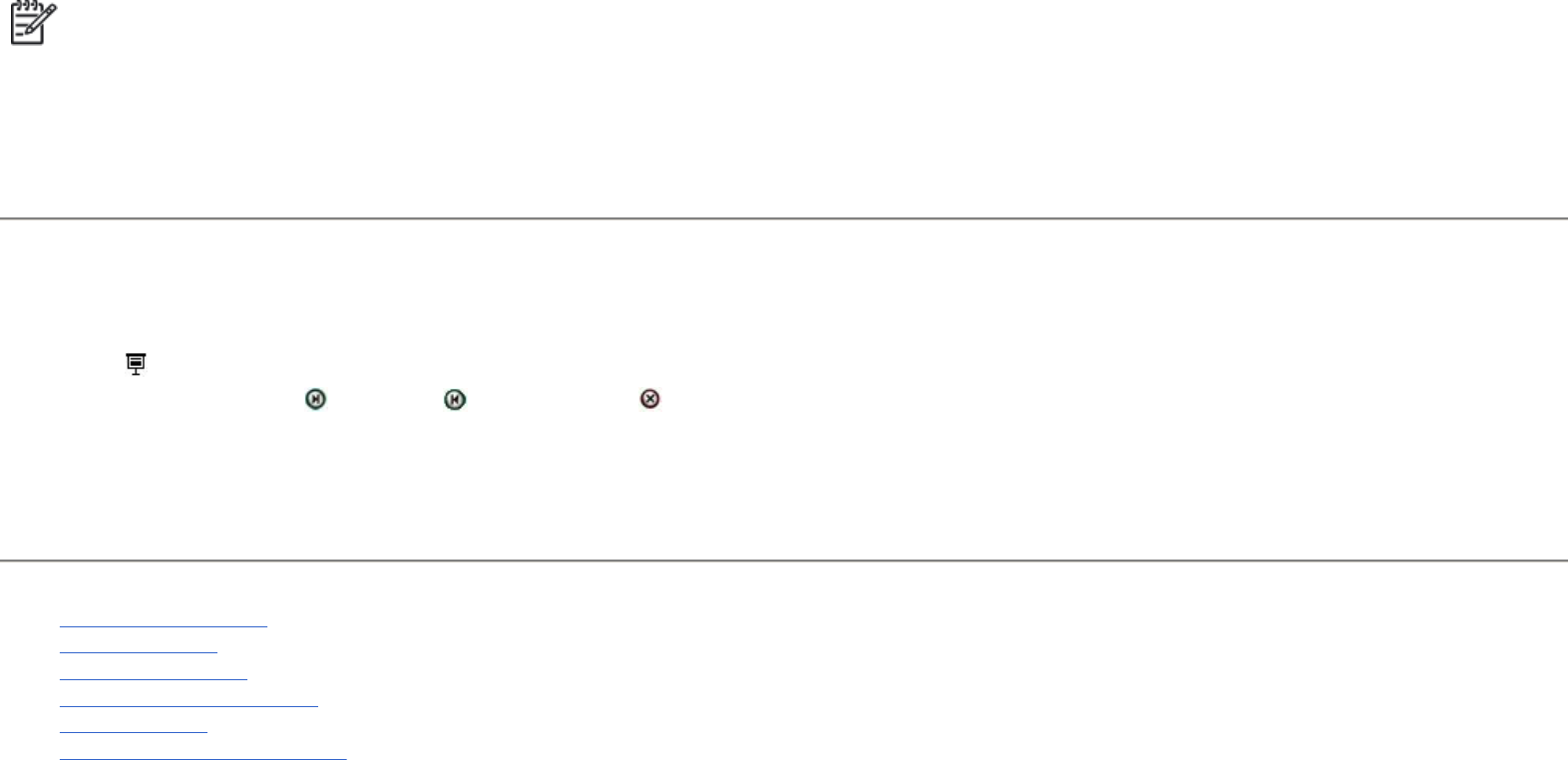
View a slideshow
To view a slideshow:
Messaging
zUnderstand messages
zTypes of folders
zSynchronize e-mail
zSet up messaging accounts
zUse Messaging
zInstall an online address boo
k
information on DRM, refer to the on-screen help by tapping Start > Help and search for DRM.
3. Ta
p
Menu > Send >E-mail Attachment.
4. Select the Reduce sent
p
hoto size to check box, and then select the re
q
uired reduction
p
ercenta
g
e.
5. Ta
p
Next.
6. Enter the a
pp
ro
p
riate e-mail address or use Contacts
by
ta
pp
in
g
Menu >Add Reci
p
ient.
7. Enter other a
pp
ro
p
riate information, such as an e-mail title and messa
g
e.
8. Ta
p
Send.
NOTE: To send the e-mail immediately, you need to either enable WLAN on your HP iPAQ or connect the device to a computer for synchronization
with the Exchange Server.
1. Ta
p
Start > Pro
g
rams >Photosmart Mobile.
2. Tap the (Slideshow) button at the bottom of the screen.
3. Ta
p
the screen to view the
(
Forward
)
,
(
Backward
)
, and
(
Sto
p)
buttons.

zWindows Live Messenger
Understand messages
To send and receive e-mail messages from an e-mail account, you need to connect to the Internet or your corporate network, depending on the account.
You can send and receive:
You can also access e-mail from work using a VPN connection.
E-mail in the Outlook e-mail account is sent and received through synchronization with a computer using any synchronization software or through wireless
synchronization directly with an Exchange Server. See Synchronization software for more information.
Internet e-mail is sent and received by connecting to a Post Office Protocol 3 (POP3) or Internet Message Access Protocol 4 (IMAP4) e-mail server. When
connecting to a POP3 or IMAP4 server, you need to use a modem to connect to your ISP. You can use an Ethernet card to connect to the local area network to
which your e-mail server is connected.
Types of folders
Each messaging account has its own set of folders with the following default messaging folders:
●Outlook e-mail
●Internet e-mail throu
g
h an ISP
●Deleted Items
●Drafts
●Inbox
●Outbox

The messages you send and receive through the account are stored in these folders. You can also create additional folders within each account.
The e-mail folders on your HP iPAQ work as follows:
Synchronize e-mail
When you synchronize Outlook e-mail on a computer with your device, e-mail messages are synchronized as follows:
●Sent Items
●If you use an Outlook e-mail account, e-mail messages in the Inbox folder in Outlook are synchronized automatically with your HP iPAQ. You can choose to
synchronize additional folders by designating them for synchronization. The folders you create and the messages you move are mirrored on the e-mail server.
You can read the messa
g
es while
y
ou are awa
y
from
y
our com
p
uter.
●If you use a POP3 account and you move e-mail messages to a folder you created, the link is broken between the messages on your HP iPAQ and their copies
on the e-mail server. When you connect, the e-mail server detects that the messages are missing from the Inbox folder on your HP iPAQ and deletes them
from the e-mail server. This prevents having duplicate copies of a message, but it also means that you no longer have access to messages that you move to
folders created from an
y
where exce
p
t
y
our HP iPAQ.
●If you use an IMAP4 account, the folders you create and the e-mail messages you move are mirrored on the e-mail server. Therefore, messages are available
to you anytime you connect to your e-mail server, whether it is from your HP iPAQ or computer. This synchronization of folders occurs whenever you
connect to
y
our e-mail server, create new folders, or rename/delete folders when connected. You can also set different download o
p
tions for each folder.
●Messa
g
es in the Inbox folder on
y
our computer or Exchan
g
e Server are copied to the Inbox folder of the Outlook e-mail account on
y
our device.
●Messa
g
es in the Outbox folder on
y
our device are transferred to Exchan
g
e Server or Outlook, and then sent from those
p
ro
g
rams.
●When
y
ou delete a messa
g
e on
y
our device, it
g
ets deleted from
y
our computer or Exchan
g
e Server the next time
y
ou s
y
nchronize.
●The default sync settings synchronize messages from the past three days and the first 0.5 KB of each new message is downloaded. It does not download file
attachments.
NOTE: For more information on starting Outlook e-mail synchronization or changing synchronization settings, see the synchronization software help
on the computer or tap Contents.

Set up messaging accounts
This section provides information about the following topics:
zSet up e-mail using Exchange server
zInternet e-mail
zReceive attachments
zSend meeting requests
zReceive meeting requests
zCreate or change a signature
Set up e-mail using Exchange server
Internet e-mail
This section
p
rovides information about the followin
g
to
p
ics:
1. Ta
p
Start > Messa
g
in
g
>New E-mail Account.
2. Enter
y
our e-mail address in the E-mail address
b
ox and ta
p
Next.
3. Scroll and select the Exchan
g
e server o
p
tion from the Your e-mail
p
rovider list.
4. Ta
p
Next to s
y
nchronize outlook with
y
our or
g
anization's Exchan
g
e e-mail server.
5. In Server address, enter the Outlook Web Access server address and ta
p
Next.
NOTE: Select This server requires an encrypted (SSL) connection check box to ensure you always send e-mail from this account using an
Secure Sockets Layer (SSL) connection.
6. Enter the User name,Password, and Domain on the Edit Server Settin
g
sscreen.
7. Select the check box for the items
y
ou want to s
y
nchronize, and ta
p
Finish.
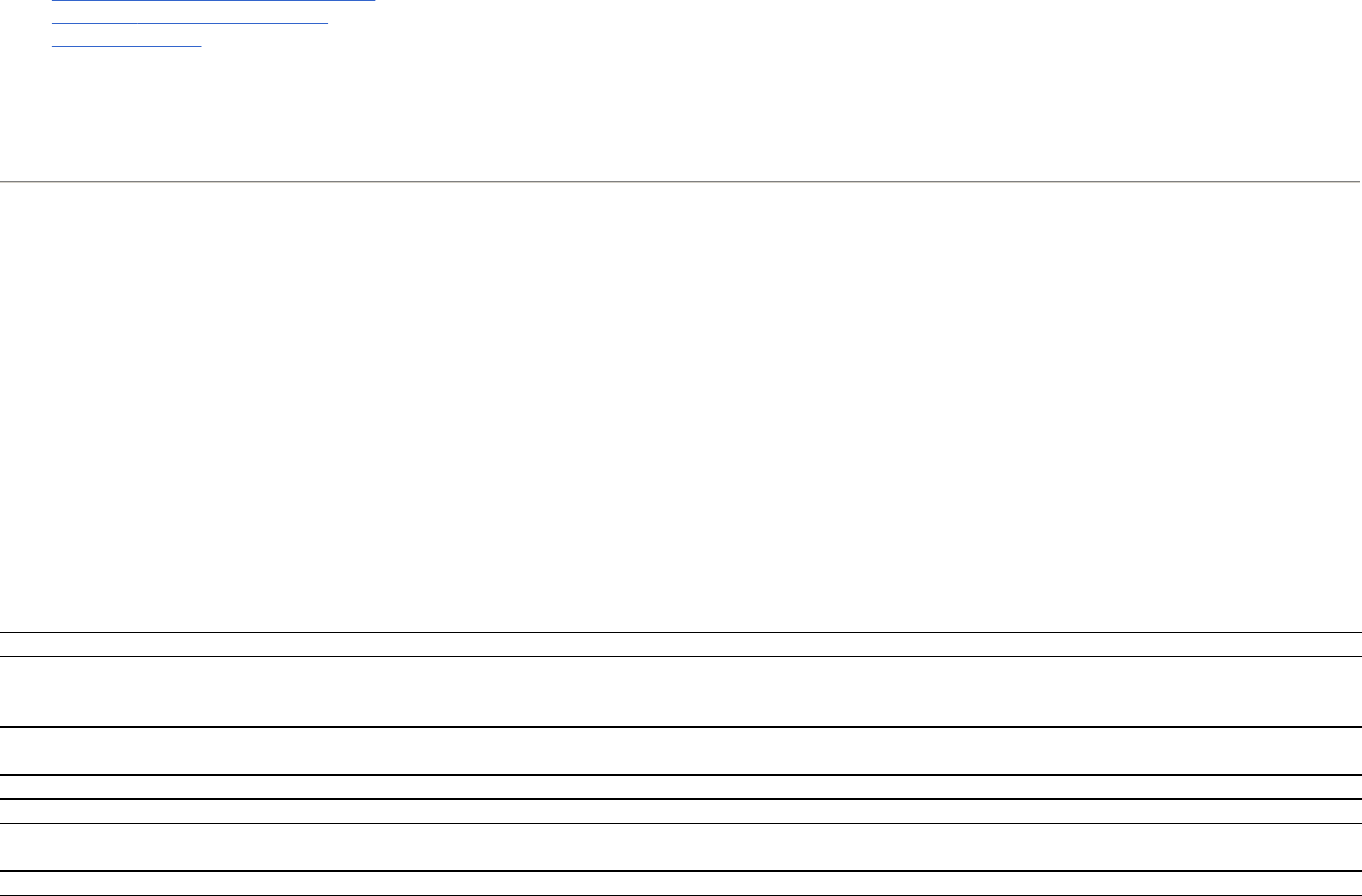
zCreate a new POP3 or IMAP4 account
zChange e-mail download options
zDelete an account
Create a new POP3 or IMAP4 account
You must set up an e-mail account that you have with an ISP or an account that you access using a VPN server connection (typically a work account) before you
can send and receive e-mail.
You can also perform the following functions:
1. Ta
p
Start > Messa
g
in
g
>New E-mail Account.
2. Enter the account name and then Ta
p
Next .
3. Scroll and select the Internet e-mail o
p
tion from the Your e-mail
p
rovider list and ta
p
Next.
4. Enter
y
our name and required account name and tap Next.
5. Enter the incomin
g
server name and select the re
q
uired account t
yp
e, POP3 o
r
IMAP4.
●Chan
g
e the time intervals for downloadin
g
new messa
g
es.
●Download attachments.
●Limit the number of messa
g
es that are downloaded.
Settin
g
Descri
p
tion
User name Enter the user name assigned to you by your ISP or network administrator. This
is often the first part of your e-mail address, which is displayed before the at
si
g
n
(@)
.
Password Choose a strong password. You have the option to save your password so that
y
ou do not need to enter it each time
y
ou connect to
y
our e-mail server.
Domain
N
ot required for an account with an ISP. Mi
g
ht be required for a work account.
Account t
yp
eSelect POP3 or IMAP4.
Account name Enter a unique name for the account, such as Work or Home. This name cannot
b
e chan
g
ed later.
Incomin
g
mail Enter the name of
y
our e-mail server
(
POP3 or IMAP4
)
.
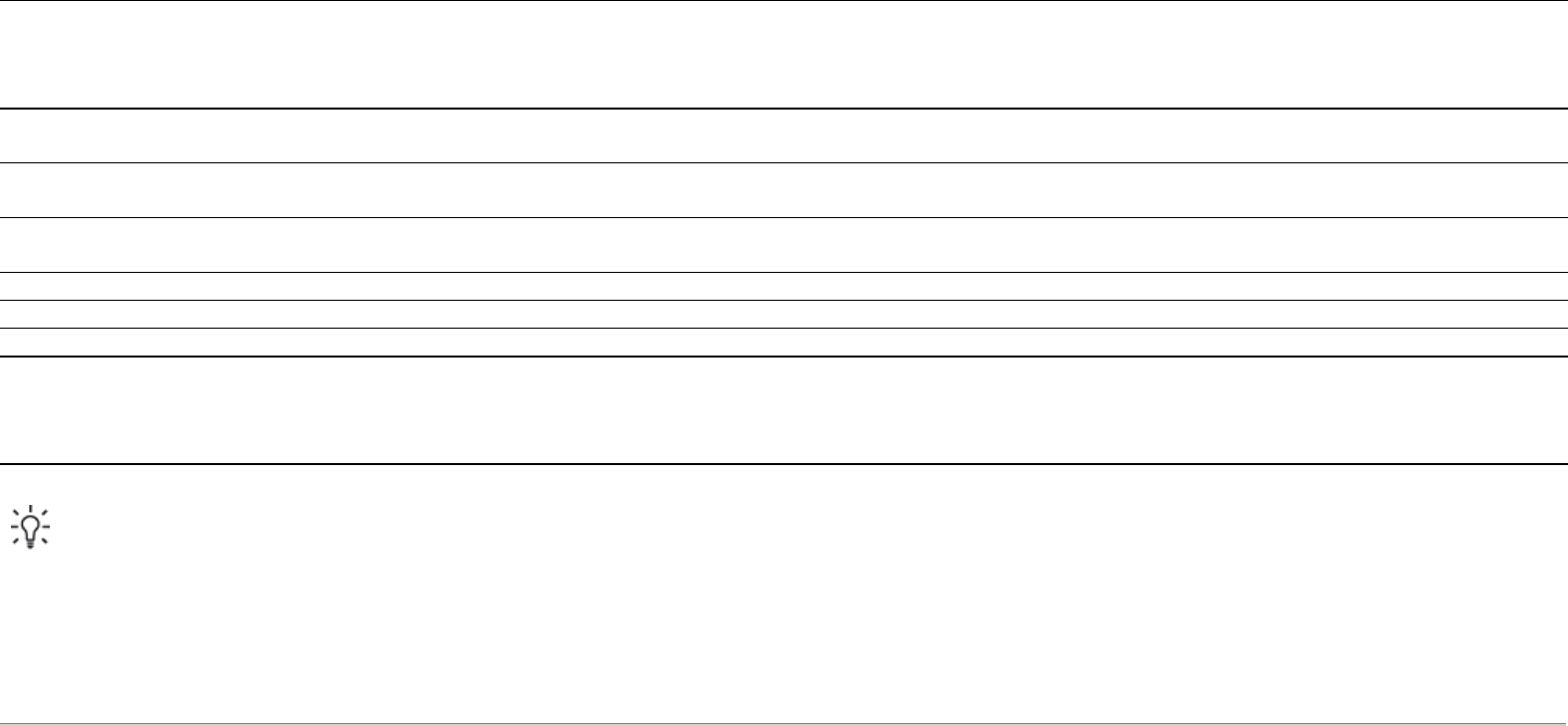
Change e-mail download options
You can customize the following download options for each e-mail account that you have with an ISP, or any account that you access using a VPN server
connection (typically a work account).
You can choose:
Out
g
oin
g
mail Enter the name of
y
our out
g
oin
g
e-mail server
(
SMTP
)
.
Re
q
uire SSL connection Select this to ensure you always send e-mail from this account using an SSL
connection. This enables you to send personal information more securely. Note
that if you select this and your ISP does not support an SSL connection, you
mi
g
ht not be able to send e-mail.
Out
g
oin
g
mail re
q
uires authentication Select this if your outgoing e-mail server (SMTP) requires authentication. Your
user name and
p
assword from above is used.
Use se
p
arate settin
g
sSelect this if your outgoing e-mail server requires a different user name and
p
assword than the ones
y
ou entered before.
Out
g
oin
g
server settin
g
sConfigure these settings to ensure that your outgoing e-mail messages are
delivered.
User name Enter
y
our user name for the out
g
oin
g
e-mail server.
Password Enter
y
our
p
assword for the out
g
oin
g
e-mail server.
Domain Enter the domain of the out
g
oin
g
e-mail server.
Re
q
uire SSL for out
g
oin
g
mail Select this to ensure you always send e-mail from this account using an SSL
connection. This enables you to send personal information more securely. Note
that if you select this and your ISP does not support an SSL connection, you
mi
g
ht not be able to send e-mail.
TIP: You can set up several e-mail accounts in addition to your Outlook e-mail account but you cannot add a new account while connected. Tap Menu >
Stop Send/Receive to disconnect.
●Whether messa
g
es are downloaded automaticall
y
.
●How much e-mail is downloaded.
●If and how attachments are downloaded
(
IMAP4 onl
y)
.

To change the e-mail download options, do the following:
Delete an account
Receive attachments
An attachment sent with an e-mail message or downloaded from the server is displayed below the subject of the message. Tapping the attachment opens the
attachment if it has been fully downloaded or marks it for download the next time you send and receive e-mail. You can also download attachments automatically
with your messages if you have an Outlook e-mail or IMAP4 e-mail account.
If you have an Outlook e-mail account, do the following:
1. In the messa
g
e list, ta
p
Menu > O
p
tions.
2. Select the e-mail account.
3. Ta
p
Next until
y
ou reach Server information.
4. Ta
p
Next until
y
ou reach Messa
g
e download Limit, and then selec
t
Entire Messa
g
e Receive attachments check box.
TIP: To send and receive messages automatically, tap Connect, check for messages and enter a time interval. Connecting automatically might result in
higher connection charges.
To save memory, limit the number of e-mails downloaded to your device by lowering the number of days to display.
To change options for an Outlook e-mail account, tap Start > ActiveSync > Menu > Options.
1. Ta
p
Start > Messa
g
in
g
.
2. Ta
p
Menu > O
p
tions.
3. Ta
p
and hold the account name, and ta
p
Delete.

If you have an IMAP4 e-mail account with an Internet Service Provider (ISP) or an account that you access using a VPN server connection (typically a work
account), do the following:
Send meeting requests
To send meeting requests:
1. Ta
p
Start > ActiveS
y
nc.
2. Ta
p
Menu > O
p
tions.
3. Tap E-mail > Settin
g
s, and then selec
t
Include File Attachments.
1. Ta
p
Start > Messa
g
in
g
.
2. Ta
p
Menu > O
p
tions.
3. Ta
p
the name of the IMAP4 account.
4. Ta
p
Next until
y
ou reach Messa
g
e download Limit, and then selec
t
Entire Messa
g
e Receive attachments check box.
TIP: Embedded images and objects cannot be received as attachments.
An embedded message can be viewed as an attachment when using IMAP4 to receive e-mail. However, this feature does not work if Transport
Neutral Encapsulation Format (TNEF) is enabled so that you can receive meeting requests.
To store attachments on a storage card rather than on the device, tap Menu > Tools > Options > Storage, and select the Store attachments on a
storage card check box.
1. Ta
p
Start > Calendar.
2. Ta
p
the a
pp
ointment , and then ta
p
Menu >Edit > A
pp
ointment >Attendees.
3. For re
q
uired attendees, ta
p
Add Re
q
uired Attendees… and for o
p
tional attendees, ta
p
Add o
p
tional Attendees…
4. Select a contact, and then ta
p
Done.
5. Ta
p
o
k
, and then ta
p
Yes to send the meetin
g
re
q
uest.

Receive meeting requests
If you receive your e-mail messages through any synchronization software, you can receive meeting requests. When connecting directly to an e-mail server, the
server must be running Microsoft Exchange Server version 5.5 or later for you to receive meeting requests. See Synchronization software for more information.
If the server is running Microsoft Exchange Server 2000 or later, your meeting requests are automatically received in your Inbox. However, to receive meeting
requests on Microsoft Exchange Server 5.5, do the following:
After you are set up to receive meeting requests, do the following:
Create or change a signature
●
With TNEF enabled, your messages that are included in other messages as attachments are not received, and you cannot know if a message has an
attachment until you get the full copy. In addition, download time might be longer.
Ask
y
our s
y
stem administrator to activate Rich Text Format (RTF) and TNEF support for
y
our account.
●Chan
g
e e-mail download options if
y
our account is not set up to receive attachments.
1. O
p
en the meetin
g
re
q
uest.
2. Tap Accept, or Menu > Tentative, or Menu > Decline. If you want, you can also include a message with the response. The response will be sent the next
time that
y
ou s
y
nchronize or connect to
y
our e-mail server, and
y
our device calendar will be u
p
dated.
1. Ta
p
Start > Messa
g
in
g
.
2. Ta
p
Menu > O
p
tions.
3. Ta
p
Accounts >Si
g
natures…
4. Select the account for which
y
ou want to create or chan
g
e a si
g
nature.
5. Select the Use si
g
nature with this account check box if it is not alread
y
selected.
6. Select the Use when re
p
l
y
in
g
and forwardin
g
check box if wanted.
7. Enter a si
g
nature in the box.

To stop using a signature, clear the Use signature with this account check box.
Use Messaging
This section provides information about the following topics:
zCompose and send messages
zReply to or forward a message
zAdd an attachment to a message
zDownload messages
zDownload messages from a server
Compose and send messages
TIP: You can use a different signature with each messaging account.
1. In the messa
g
e list, ta
p
and select an account.
2. Ta
p
Menu > New.
3. Enter the e-mail address of one or more reci
p
ients, se
p
aratin
g
them with a semicolon. To access addresses and
p
hone numbers fro
m
Contacts, ta
p
To.
4. Enter
y
our messa
g
e. To quickl
y
add common messa
g
es, tap Menu > M
y
Text and tap a required messa
g
e.
5. To check the s
p
ellin
g
, ta
p
Menu > S
p
ell Check.
6. Ta
p
Send.
TIP: To set the priority, tap Menu > Message Options…
NOTE: If you are working offline, e-mail messages are moved to the Outbox folder and are sent the next time you connect.

Reply to or forward a message
Add an attachment to a message
Download messages
The manner in which you download messages depends on the type of account you have:
1. Ta
p
on the messa
g
e to o
p
en it, and then ta
p
Menu >Re
p
l
y
,Re
p
l
y
All, o
r
Menu >Forward.
2. Enter
y
our res
p
onse. To
q
uickl
y
add common messa
g
es, ta
p
Menu > M
y
Text and ta
p
a re
q
uired messa
g
e.
3. To check the s
p
ellin
g
, ta
p
Menu > S
p
ell Check.
4. Ta
p
Send.
NOTE: If you want to keep the original text with the outgoing message, tap Menu > Tools > Options… then tap Message. You must select the When
replying to e-mail, include body check box.
1. In an o
p
en messa
g
e, ta
p
Menu > Insert and ta
p
the item
y
ou want to attach: Picture,Voice Note, o
r
File.
2. Select the file
y
ou want to attach or record a voice note.
NOTE: Embedded objects cannot be attached to messages.
●To send and receive e-mail for an Outlook e-mail account, be
g
in s
y
nchronization throu
g
h ActiveS
y
nc.

Download messages from a server
Install an online address book
Many e-mail servers, including servers running Exchange Server, can verify names with an online address book called a directory service, using a protocol known
as Lightweight Directory Access Protocol (LDAP). When you create an e-mail account, the directory service of your e-mail server is added to the Address, and
you are given the option to enable it. After it is enabled, Messaging checks your contact list and then the directory service to verify names that you enter in the To,
Cc, and Bcc fields. To enable a directory service or if you want to use additional services, follow these steps:
TIP: By default, messages you send are not saved on your device to help conserve memory. If you want to keep copies of sent messages in the
messaging list, tap Menu > Tools > Options… > Message, and select the Keep copies of sent items in Sent folder check box. If your account is
an Outlook E-mail or IMAP4 account, you must also select the Sent Items folder for synchronization. To do this, tap Menu > Tools > Manage
Folders… and select the check box next to the Sent Items folder.
1. Ta
p
Menu > Go To and ta
p
the account
y
ou want to use.
2.
The messages on your device and e-mail server are synchronized. New messages are downloaded to the device Inbox folder, messages in the device Outbox
folder are sent, and messages that have been deleted from the server are removed from the device Inbox folder.
Ta
p
Menu > Send/Receive.
TIP: To read the entire message, tap Menu > Download Message while in the message window. If you are in the message list, tap and hold the
message, and then tap Menu > Download Message. The message will download the next time you send and receive e-mail. This will also
download message attachments if you have selected those options while setting up your e-mail account.
The size column in the message list displays the local size and server size of a message. These numbers might differ because the size of a message
can vary between the server and the device.
1. If
y
ou are addin
g
a new account, ask
y
our network administrator for the name of the director
y
service and the server.

Windows Live Messenger
You can use MSN Messenger on your HP iPAQ to send instant messages. MSN Messenger provides the same chat environment as of the MSN Messenger on your
computer.
With the MSN Messenger feature, you can:
To use MSN Messenger, you need a Microsoft.NET Passport account unless you already have a Hotmail account. To set up a Microsoft.NET Passport account, go
to http://www.passport.net. After you have an account, you can use your HP iPAQ MSN Messenger feature.
This section
p
rovides information about the followin
g
to
p
ics:
2. In the messa
g
e list, ta
p
Menu > Tools > O
p
tions… >Address.
3. In the In Contacts, get e-mail addresses from list, select which e-mail address book to check in contacts. Contacts will be checked first unless you select
None.
4. If
y
our e-mail server is alread
y
listed, select the server's director
y
service check box to enable it and ta
p
o
k
.
5. If
y
our e-mail service is not listed, ta
p
Add…
6. In the Director
y
name and Server
b
oxes, enter the LDAP director
y
and server names.
7. Ask your network administrator if authentication is necessary for your server. If so, select the Authentication is necessary on this server check box, and
enter
y
our user name and
p
assword.
8. If
y
ou want the Messa
g
in
g
a
pp
lication to check this service, select the Check name a
g
ainst this server check box.
TIP: To delete a service, tap and hold the service, and then tap Delete.
While synchronizing your Outlook E-mail account, disable any directory services you have installed by clearing the Check name against this
server check box. This helps avoid getting error messages when Messaging tries to verify names against the service that you are not connected to.
●Send and receive Instant Messa
g
es.
●Chan
g
e
y
our own status or view the status of others on
y
our list.
●Invite others for a chat conversation.
●Block certain contacts from seein
g
y
our status or sendin
g
y
ou messa
g
es.

zSign in and out of Messenger
zSend instant messages
zChange your status
Sign in and out of Messenger
Tap Start > Programs > Messenger to open MSN Messenger feature.
To sign into the Messenger:
To sign out of the Messenger:
If you do not sign out of MSN Messenger, you remain on a data connection, which might result in additional charges from your service provider. The session will
not time out or end unless one of the following occurs:
Send instant messages
You can send Instant Messages from your MSN Messenger to contacts on your messenger list.
To send Instant Messages:
1. Ta
p
Si
g
n In after navi
g
atin
g
to a re
q
uired si
g
n-in status.
2. Enter
y
our information in the Si
g
n-in and Password
b
ox. Ta
p
Si
g
n In.
▲Ta
p
Menu > Si
g
n Out to si
g
n-out of MSN Messen
g
er.
●User ends instant messen
g
er session
●The device is turned off or moves out of ran
g
e

You can also manage your contacts and control their visibility.
To manage contacts in the MSN Messenger:
Change your status
You can change your status on MSN Messenger according to your need. To change your status:
Calendar
zAccess calendar
zChange the display of the work week
zSet a default reminder for all new appointments
zCreate an appointment
zUpdate an appointment
zCancel an a
pp
ointmen
t
1. Select the
p
erson to whom
y
ou want to send an Instant Messa
g
e and ta
p
Send.
2. Enter
y
our messa
g
e, and ta
p
Send.
●Ta
p
Menu > Add new contact to create a new contact.
●Ta
p
Menu > Contact o
p
tions > Delete to delete an existin
g
contact.
●Ta
p
Menu > Block/Unbloc
k
to block or unblock the selected contact from seein
g
y
our status and sendin
g
y
ou Instant Messa
g
es.
NOTE: Tap Menu > My Text to add common messages when composing instant messages. Tap Menu > Invite to invite a contact to an ongoing chat.
You can also see who is already talking to you or change between chats by tapping Menu > Chats.
1. Ta
p
and select
y
our name in the contact list.
2. Press Menu > Chan
g
e A
pp
earances, and navi
g
ate to select the re
q
uired status.

Access calendar
Use Calendar to schedule appointments, including meetings and other events. You can display appointments for the day on the Today screen.
Change the display of the work week
You can customize your calendar for a work week to start on Sunday or Monday. You can schedule your calendar for a five to seven-day week.
To change the display of the work week:
Set a default reminder for all new appointments
To automatically turn on a reminder for all new appointments:
▲To access Calendar, ta
p
Start > Calendar.
1. Tap Start > Calendar.
2. Ta
p
Menu > Tools > O
p
tions… > General.
●To s
p
ecif
y
the first da
y
of the week, ta
p
Sunda
y
o
r
Monda
y
in the 1st da
y
of wee
k
b
ox.
3. To s
p
ecif
y
the number of da
y
s to a
pp
ear in a work week, ta
p
5-da
y
wee
k
,6-da
y
wee
k
, o
r
7-da
y
wee
k
in the Week view
b
ox.
4. Ta
p
o
k
.
1. Tap Start > Calendar.
2. Ta
p
Menu > Tools > O
p
tions… > A
pp
ointments.

Create an appointment
To create an appointment:
Update an appointment
To update an appointment on your calendar:
Cancel an appointment
When you delete an appointment in calendar on your HP iPAQ, it is also deleted on your computer the next time you synchronize. If the appointment has not been
synchronized with a computer, it will be deleted only from your HP iPAQ.
3. Select the Set reminders for new items check box.
4. Set the time for the reminder to alert
y
ou.
5. Tap o
k
.
1. Ta
p
Start > Calendar.
2. Ta
p
Menu > New A
pp
ointment > A
pp
ointment.
3. Enter the required information, and then tap o
k
.
1. Ta
p
Start > Calendar.
2. Ta
p
the a
pp
ointment, and then ta
p
Menu >Edit to make
y
our chan
g
es.
3. Ta
p
o
k
.

Contacts
zCreate a contact
zDelete a contact
zChange contact information
zCopy a contact
zFind a contact
zSend an e-mail message to a contact
zAdd and remove a picture
zUse the contact list
Create a contact
If most of the contacts you create have phone numbers that begin with the same area code, in Contacts, tap Menu > Options… and enter that area code in the
Area code
b
ox.
1. Ta
p
Start > Calendar.
2. Ta
p
to select the a
pp
ointment
y
ou want to delete, and then ta
p
Menu >Delete A
pp
ointment.
3. Tap Yes to delete the appointment, or tap No to keep it.
NOTE: Calendar items can be deleted only from the Agenda view or from an open calendar appointment. To delete from other views, open the
appointment, and tap Menu > Delete.
1. Ta
p
Start > Contacts.
2. Ta
p
New and enter the contact information.
3. Ta
p
o
k
.
NOTE: If your contact list has been filtered by a category when you create a contact, that category is automatically assigned to the new contact.

For more information on creating contacts, tap Start > Help.
Delete a contact
Change contact information
Copy a contact
1. On the Toda
y
screen, ta
p
Contacts o
r
Start >Contacts.
2. Ta
p
and hold the contact to delete.
3. Ta
p
Delete Contact.
4. Ta
p
Yes to confirm the deletion.
1. On the Toda
y
screen, ta
p
Contacts o
r
Start >Contacts.
2. Ta
p
the re
q
uired contact.
3. Ta
p
Menu > Edit and enter the chan
g
es.
4. Ta
p
o
k
.
1. On the Toda
y
screen, tap Contacts o
r
Start >Contacts.
2. Ta
p
and hold the contact
y
ou want to co
py
.
3. Ta
p
Co
py
Contact.
4. Ta
p
the co
py
of the contact.
5. Ta
p
Menu > Edit.
6. Chan
g
e the contact information as needed and ta
p
o
k
.

Find a contact
Send an e-mail message to a contact
NOTE: The displayed category is automatically assigned to the new contact.
1. On the Toda
y
screen, ta
p
Contacts o
r
Start >Contacts.
2. If
y
ou are not in the Name view, ta
p
Menu >View B
y
>Name.
3. Do one of the followin
g
:
●Begin entering a name or phone number in the provided text box until the contact you want is displayed. To show all contacts again, tap the text box
and clear the text, or ta
p
the arrow to the ri
g
ht of the text box.
●Use the al
p
habetical index dis
p
la
y
ed at the to
p
of the contact list.
●Filter the list by categories. In the contact list, tap Menu > Filter. Then tap a category you have assigned to a contact. To show all contacts again, tap
All Contacts.
NOTE: To search for a contact by entering a name or number, or by using the alphabetical index, you need to be in the Name view.
1. On the Toda
y
screen, ta
p
Contacts o
r
Start >Contacts.
2. Ta
p
the contact
y
ou want to send a messa
g
e to.
3. Ta
p
the address
y
ou want to send a messa
g
e to.
4. Tap the account
y
ou want to send the messa
g
e from.
NOTE: To quickly add a contact's address to a new message, tap To, Cc, or Bcc, and then tap Menu > Add Recipient…. Tap the contact you want to
send the message to and choose the address, if necessary.

Add and remove a picture
To add a picture to the contact information:
To remove a picture from the contact information:
Use the contact list
There are several ways to use and customize the contact list. Here are a few tips on how to make it work for you.
1. On the Toda
y
screen, ta
p
Contacts o
r
Start >Contacts.
2. Ta
p
the contact.
3. Ta
p
Menu > Edit.
4. Ta
p
Picture.
5. Ta
p
the
p
icture
y
ou want to add.
1. On the Toda
y
screen, ta
p
Contacts o
r
Start >Pro
g
rams >Contacts.
2. Ta
p
the contact.
3. Ta
p
Menu > Edit.
4. Ta
p
Menu > Remove Picture.
1. On the Toda
y
screen, ta
p
Contacts o
r
Start >Contacts.
2. In the contact list, do an
y
of the followin
g
:
●To search for a contact b
y
enterin
g
a name or number, or b
y
usin
g
the al
p
habetical index, enter the name or number into the Enter a name…
b
ox.
●To see a list of contacts em
p
lo
y
ed b
y
a s
p
ecific name or com
p
an
y
, ta
p
Menu >View B
y
>Name o
r
Com
p
an
y
.
●To see a list of available actions for a contact, ta
p
and hold the contact.

Applications
zHP applications
zAdditional features of WM6.0 over WM5.0
zWindows Media Player
zMS Office applications
zPDF viewer
zGames
zInternet Explorer
zHP Enterprise Mobility Suite
HP applications
This section provides information about the following topics:
zHP Help and Support
zHP iPAQ Setup Assistant
zHP Asset Viewer
zCertificate Enroller
zManage certificates
zHP iPAQ Tips
zHP iPAQ QuickStart Tour
zHP iPAQ Zip
zHP iPAQ File Store
zHP PrintSmart Mobile
zHP SecureConnect Mobile
zHP Smart Connector
NOTE: To display a greater number of contacts on the screen, tap Menu > Options…, select the Show contact names only check box, and clear the
Show alphabetical index check box.

HP Help and Support
The HP Help and Support application increases visibility, accessibility, and usability of the existing help, support, learning content, and tools.
To access HP Help and Support:
HP iPAQ Setup Assistant
Use HP iPAQ Setup Assistant to simplify configuring settings on your HP iPAQ.
HP iPAQ Setup Assistant lets you save the settings on your computer. This can help you restore configuration settings on your HP iPAQ at any time. HP iPAQ
Setup Assistant also allows you to perform a factory reset on your HP iPAQ and view detailed product information.
Using HP iPAQ Setup Assistant, you can manage multiple configurations and apply them quickly to your HP iPAQ. You can create a new configuration, modify
existing settings, delete a selected configuration, or apply selected settings to your HP iPAQ.
Select the followin
g
tabs to confi
g
ure
y
our settin
g
s:
1. Ta
p
Start > Pro
g
rams >HP Hel
p
and Su
pp
ort.
2. To view additional information, ta
p
the a
pp
ro
p
riate HTML links.
●Serial and Model Numbers
–
dis
p
la
y
s the
p
roduc
t
’s serial number, model ID,
p
roduct ID, and OS version.
●HP iPAQ QuickStart Tour
–
launches the HP iPAQ QuickStart Tour a
pp
lication.
●HP iPAQ Ti
p
s
–
launches the HP iPAQ Ti
p
sa
pp
lication.
●Hel
p
To
p
ics
–
launches a table of content that lists hel
p
to
p
ics for
p
ro
g
rams installed on
y
our iPAQ.
●Customer Su
pp
ort
–
launches the Find More Information screen, which lists the sources for information on various to
p
ics.
●S
y
stem Details
–
launches the HP Asset Viewer a
pp
lication.
NOTE: Tap About to view the application name, version number, and copyright information.

HP Asset Viewer
Use the HP Asset Viewer application to view information about the system, integrated modules, and attached accessories.
To access HP Asset Viewer:
●Owner Information
–
Enter
y
our identification information and notes to describe
y
ou and
y
our HP iPAQ. This is hel
p
ful if
y
ou lose
y
our HP iPAQ.
●Wireless Networ
k
– Wireless Network settin
g
s describe the confi
g
uration needed to connect to
y
our work, home, or other wireless network.
●Proxy – Proxy servers are located between two networks and are used to help prevent an attacker from invading a private network. You can enter proxy
settin
g
s to s
p
ecif
y
the
p
rox
y
confi
g
uration for
y
our network.
●E-mail – E-mail settin
g
s describe the confi
g
uration re
q
uired to connect to and check
y
our Internet e-mail accounts.
●Exchange Server – Exchange Server is used to access e-mail, calendars, contacts, tasks, and other mailbox contents while on the go. You can set up Outlook
on
y
our HP iPAQ to s
y
nchronize directl
y
with
y
our or
g
anization's Exchan
g
e Server.
●VoIP – Voice over Internet Protocol (VoIP) routes voice conversations using an IP-based network. VoIP to VoIP phone calls to any provider are typically
free. SIP Prox
y
servers are used to im
p
lement call-routin
g
p
olicies and
p
rovide features to users.
●Browser Favorite – Use your HP iPAQ Setup Assistant to create and manage a list of your favorite URLs. You can access these URLs using the Internet
Ex
p
lorer on
y
our HP iPAQ.
●Finish – In case of a new configuration, after you click Finish, enter a configuration name and an optional password, and then click OK in the save
confi
g
uration. If this is an existin
g
confi
g
uration, the existin
g
name and
p
assword will be used.
1. Ta
p
Start > Settin
g
s > S
y
stem > HP Asset Viewer.
2. To view additional s
y
stem information, ta
p
the a
pp
ro
p
riate tabs:
●The Identit
y
tab dis
p
la
y
s the serial number and user information.
●The Memor
y
tab dis
p
la
y
s the iPAQ device memor
y
information.
●The Version tab dis
p
la
y
s the iPAQ device version information.
●The Dis
p
la
y
tab dis
p
la
y
s the iPAQ device dis
p
la
y
p
anel information.
●The S
y
stem tab dis
p
la
y
s the iPAQ device s
y
stem information.
●The Bluetooth tab dis
p
la
y
s the iPAQ device Bluetooth information.
●The WLAN tab dis
p
la
y
s the iPAQ device WLAN information.

Certificate Enroller
Certificate Enroller is an enhanced security feature for retrieving and registering new certificates. This application-initiated enrollment allows you to request a user
certificate from a certificate server.
To access Certificate Enroller:
Manage certificates
●The Extended ROM tab dis
p
la
y
s the iPAQ device customized software version and its details.
NOTE: If the iPAQ device does not have customized software, the Extended ROM tab will not be displayed.
NOTE: Certificate Enroller picks up certificate types from Active Directory as well as from the device data store. You must enter a server name for
retrieving the certificate, and if required, a valid username and password.
1. Ta
p
Start > Settin
g
s > Enroller.
2. Use the on-screen ke
y
board to enter server name, user name, and
p
assword. Ta
p
o
k
to save the settin
g
s.
NOTE: Tap Retrieve to initiate the transaction of downloading the certificate from the server.
3. Once the certificate is retrieved, tap Menu >Cancel to exit.
NOTE: Tap Menu > About to view a brief description of the application, application name, version number, and copyright statement.
1. Ta
p
Start > Settin
g
s > S
y
stem > Certificates.

HP iPAQ Tips
Use HP iPAQ Tips to perform operations on your HP iPAQ in a quick and efficient manner. A tip is displayed on your screen every time you turn on your
HP iPAQ. Tap Menu > Next to display the next tip. To quit the application, tap Dismiss. You can also access HP iPAQ Tips by tapping Start > Programs >
HP Help and Support > HP iPAQ Tips.
HP iPAQ QuickStart Tour
HP iPAQ QuickStart Tour is a fun way to learn more about your HP iPAQ. It provides basic information about the tasks and activities you can perform using
your HP iPAQ. You can try each feature as you go through this tutorial. You can return to the same position in the QuickStart tour by simply tapping Start >
Programs > HP Help and Support > HP QuickStart Tour.
2. Select a certificate tab.
●The Personal tab dis
p
la
y
s
y
our
p
ersonal certificates.
●The Intermediate tab dis
p
la
y
s the intermediate certification authorities.
●The Root tab dis
p
la
y
s the root certification authorities.
NOTE: To view the certificate details, tap the required certificate on each tab.
TIP: You can also access the HP iPAQ Tips application by tapping Start > Programs.
TIP: You can also access the HP iPAQ QuickStart application by tapping Start > Programs.

HP iPAQ Zip
Use the HP iPAQ Zip application to:
To view the file contents, tap the required zip file. This will display the filename, the date and time when the file was last modified, and the file size.
Tap Open to open a file you want to view. This file will open as a Read Only document.
Tap Menu, and then tap the following commands to perform the respective functions:
If the zip file is encrypted using a password, the HP iPAQ Zip Password screen is displayed when you try to open any of the zip file contents. Type the
appropriate password in the Enter Password box using the on-screen keyboard to view the required file.
HP iPAQ File Store
●View and extract contents of a zi
p
file received as an e-mail attachment.
●View and extract contents of a zi
p
file usin
g
the file ex
p
lorer.
●O
p
en a selected item from the zi
pp
ed file.
●Extract/view encr
yp
ted files.
●Extract all: Extract all the files at the same time to the user director
y
.
●Extract: Extract the selected files to the user director
y
.
●View: Chan
g
e the dis
p
la
y
la
y
out of the file. The contents of the zi
pp
ed file can be dis
p
la
y
ed as details, list, icons, or tiles.
●About: Dis
p
la
y
the version of the HP iPAQ Zi
p
a
pp
lication.
●Exit: Exit from the HP iPAQ Zi
p
a
pp
lication.
NOTE: You will not be able to open or extract files that are larger than 20 MB in size.

You can install programs and save important files in the iPAQ File Store folder, which can be accessed from the File Explorer on your HP iPAQ. Programs and
files stored on your iPAQ File Store folder are retained if you perform a full reset on your HP iPAQ.
To save files to iPAQ File Store:
HP PrintSmart Mobile
HP PrintSmart Mobile application provides printing support over Bluetooth, IR, and WLAN network. It also provides printing support for various document
formats including .doc, .xls, .jpg, .bmp, and .html. Use HP PrintSmart Mobile to print information from your HP iPAQ mobile device to a compatible printer
while away from the office and whenever you need it.
For more information, refer the Getting Started CD.
HP SecureConnect Mobile
Use HP SecureConnect Mobileto automatically connect your HP iPAQ to WLAN hotspots or home and office networks. You need to follow an online
registration process to begin using this application. All communications carried out using HP SecureConnect Mobile are strongly encrypted and are therefore
secure.
1. Co
py
the files to be saved to the iPAQ File Store folder.
2. Ta
p
Start > Pro
g
rams >File Ex
p
lorer > M
y
HP iPAQ >iPAQ File Store.
3. Ta
p
Edit > Paste.
CAUTION: iPAQ File Store might contain a special folder called ”hp” to store system files. Do not save new files or modify existing files in the
hp folder.
NOTE: Before saving files to the iPAQ File Store folder, it is a good idea to determine how much memory is available in the folder. To view the
amount of memory, tap Start > Settings > System > Memory > Storage Card, and then select iPAQ File Store from the list.

HP Smart Connector
HP Smart Connector provides you a consistent method to manage the relationship between your device and cable/dock. The pin assignments on this connector are
capable of accommodating next generation IPAQ accessories. Additionally, it is optimized for size and dockable in a cradle.
HP Smart Connector is compatible with the following:
Additional features of WM6.0 over WM5.0
This section has been designed to summarize the changes between the previous version and the recent version.
●Char
g
in
g
Dock
●Audio Entertainment Dock
●Thin Client Dock
●Desk Phone Dock
●Car Dock
●Travel Dock
●PC Dock
●Barcode Scannin
g
Dock
●RFID Ta
g
Reader/Pro
g
rammer Doc
k
●POS Ma
g
netic Stri
p
e Reader Dock
●Search Microsoft Exchan
g
e mailbox on server for items that match s
p
ecified criteria.
●Receive, view, compose and send e-mail in HTML format.
●Download a sin
g
le messa
g
e in its entiret
y
, includin
g
inline ima
g
es and/or attachments–without havin
g
to do a full Send/Receive.
●O
p
en SharePoint links to documents stored on SharePoint servers, linked in HTML e-mail.

Windows Media Player
This section provides information about the following topics:
zWindows Media Player 10 Mobile
zClear the Now Playing list
zUpdate a Library
Windows Media Player 10 Mobile
Windows Media Player 10 Mobile has enhanced features that allow you to enjoy your digital media both at home and on the go. The personal computer version of
Windows Media Player 10 can be downloaded for free from Microsoft.
With this version of media player, you can:
●Assi
g
n, mark com
p
lete and clear fla
g
s from both the e-mail inbox list view and e-mail read view.
●Limit the number of e-mail messa
g
es that are dis
p
la
y
ed in the e-mail list view to onl
y
those that match filter criteria from the user.
●Desi
g
ned for both 12-ke
y
and 30-ke
y
e
q
ui
pp
ed devices, for a core set of functions in both e-mail inbox list view and email read view.
●Receive, re
p
l
y
to, forward and com
p
ose Information Ri
g
hts Mana
g
ement
(
IRM
)
p
rotected mail.
●View acce
p
tance status of all attendees in the meetin
g
view.
●Retrieve and set Ou
t
-o
f
-Office
(
OOF
)
status, alon
g
with OOF messa
g
e.
●Share
y
our mobile device internet access with a PC via USB or Bluetooth in onl
y
a cou
p
le of clicks.
●Windows Live is the premier services’ offering for Windows Mobile 6 powered devices that unifies the user’s information, helps them pursue interests and
dee
p
en the relationshi
p
s that enrich their life.
●S
y
nc
y
our music,
p
hotos, videos, and recorded TV to
y
our HP iPAQ for eas
y
en
j
o
y
ment on the
g
o.
●Automaticall
y
convert video and recorded TV durin
g
s
y
nc to an o
p
timized and size-reduced format for better viewin
g
on
y
our HP iPAQ.

For a complete list of features and more, visit http://www.microsoft.com/windowsmedia.
Clear the Now Playing list
Under Windows Media Player, the Now Playing playlist displays the currently playing file and any files that are queued up to play next. You can quickly remove
all items from the playlist by clearing it.
For more details, refer to the on-screen help, tap Start > Help > Contents > Using Windows Media Player Mobile.
Update a Library
In most cases, Windows Media Player Mobile automatically updates your libraries as necessary. However, you can manually update a library to ensure that it has
links to any new files that you might have recently copied to your HP iPAQ or a removable storage card.
●Manuall
y
select di
g
ital media to s
y
nc to
y
our HP iPAQ, or automaticall
y
s
y
nc to
y
our HP iPAQ each time
y
ou connect, based on
y
our
p
references.
NOTE: Protected files are digital media files that are secured with a license to prevent unauthorized use or playback. Licenses are created and managed
by using the DRM technology. To learn more about Windows Media DRM 10, protected files, and other features, refer to the on-screen help by
tapping Start > Help > Contents > Search >Using Windows Media Player Mobile.
1. If you are on the Library screen, select the Now Playing category to display the Now Playing screen. If you are on the Playback screen, select Now Playing
to displa
y
the Now Pla
y
in
g
screen.
2. On the Now Pla
y
in
g
screen, ta
p
Menu > Clear Now Pla
y
in
g
.
1. If
y
ou are not alread
y
on the Librar
y
screen, ta
p
Menu >Librar
y
…
2. On the Librar
y
screen, ta
p
Menu > U
p
date Librar
y
…
3. Wait for the files to be added, and then ta
p
Done.

For more details, refer to the on-screen help, tap Start > Help > Contents > Using Windows Media Player Mobile.
MS Office applications
This section provides information about the following topics:
zWord Mobile
zExcel Mobile
zPowerPoint Mobile
Word Mobile
You can create and edit documents and templates in Word Mobile. You can also save the documents and templates as .doc, .rtf, .txt, and .dot files.
With Word Mobile, you can:
To access Word Mobile, tap Start > Office Mobile > Word Mobile.
Options available when you tap Menu allow you to:
●Edit Word documents and tem
p
lates created on
y
our com
p
uter.
●O
p
en and edit Pocket Word
(
*.
p
sw
)
documents
NOTE: If you edit a document, you will need to save it in .doc, .rtf, .txt, or .dot format.
●Create a new document or edit an existin
g
document.
●Format a document.
●Check s
p
ellin
g
s and count words in a document.

Excel Mobile
You can create and edit workbooks and templates on your HP iPAQ with Excel Mobile.
With Excel Mobile, you can:
To access Word Mobile, tap Start > Office Mobile > Excel Mobile.
To access options for organizing and formatting a worksheet, open a worksheet and tap Menu. In addition to Cut, Copy, and Paste, there are options in Menu
that allow you to:
PowerPoint Mobile
●Save, move, rename, or delete a document.
●Send a document via e-mail or Bluetooth.
●View, edit, and create charts and
g
ra
p
hics, which can be embedded as ob
j
ects in a worksheet or
p
laced on a se
p
arate worksheet.
●Enter formulas and functions, and then filter data to see the subset of information
y
ou want.
●S
p
lit
p
anes to view different
p
arts of a worksheet at the same time.
●Freeze the to
p
and lef
t
-most
p
anes in a worksheet to kee
p
row and column labels or other data visible as
y
ou scroll throu
g
h a sheet.
●Paste cells usin
g
Paste S
p
ecial.
●Clear cell contents and formats a
pp
lied to cells.
●Insert new cells, charts, s
y
mbols, functions, and define names in a workbook.
●Set dimensions for rows and columns. Ali
g
n cells, set font and st
y
le for the text, and set cell borders.
●Create new worksheets and save, rename, or delete existin
g
worksheets.
●Send a worksheet via e-mail or Bluetooth.

Use PowerPoint Mobile to open and view slide show presentations created on your computer.
With PowerPoint Mobile, you can:
PowerPoint features that are not supported on your HP iPAQ include:
To access Word Mobile, tap Start > Office Mobile > PowerPoint Mobile.
Options available when you tap Menu allow you to:
PDF viewer
The ClearVue PDF application lets you view any PDF document on your HP iPAQ. To access this application:
●O
p
en a
p
resentation from an e-mail messa
g
e.
●Download a
p
resentation from a file share or the Internet.
●Co
py
a
p
resentation to
y
our HP iPAQ via a stora
g
e card.
NOTE: Slide shows created in *.ppt or *.pps format with PowerPoint ‘97 and later can be viewed on your device.
●
N
otes: Notes written for slides are not visible.
●Rearran
g
in
g
or editin
g
slides: PowerPoint Mobile is a viewer onl
y
.
●Set u
p
a slide show.
●Rename, move, delete, or create a co
py
of a
p
resentation.
●Send a
p
resentation via e-mail or Bluetooth.
1. Ta
p
Start > Pro
g
rams >ClearVue PDF.

Games
This section provides information about the following topics:
zBubble Breaker
zSolitaire
Bubble Breaker
The objective of Bubble Breaker is to have balls (more than one) of the same color deleted from the screen. The fewer balls you leave behind, the higher your
score will be.
To start a new game:
To play a game:
2. Ta
p
File > O
p
en… >to o
p
en a PDF.
3. Ta
p
Zoom to select the a
pp
ro
p
riate o
p
tion for better viewin
g
.
4. Tap File > Exit to quit the application.
1. Ta
p
Start > Pro
g
rams >Games > Bubble Breaker.
2. Ta
p
New Game to start a new
g
ame.
3. Tap Menu > Statistics to select a st
y
le to displa
y
relative entries.
4. Ta
p
Menu > O
p
tions… to edit the settin
g
s for the
g
ame.
NOTE: To recall the balls you deleted, tap Menu > Undo Move.

Solitaire
The objective of Solitaire is to use all the cards in the deck to build up four suit stacks in ascending order, beginning with the aces. You win the game when all
cards are on the suit stacks.
To play a game:
Internet Explorer
Use Internet Explorer to view and download Web pages as well as browse Web sites through synchronization or when connected to the Internet.
Before connecting to the Internet, setting up a wireless connection or network card, you need to obtain the following:
1. Ta
p
Start > Pro
g
rams >Games > Bubble Breaker.
2. Ta
p
New Game to start a new
g
ame.
3. Scroll and select a ball which is of the same color as the other balls around.
4. Ta
p
the selected balls twice to delete the balls from the screen.
1. Ta
p
Start > Pro
g
rams >Games > Solitaire.
2. Ta
p
Menu > New Game to start a new
g
ame.
3. Tap and hold the card
y
ou want to move and dra
g
it to the card stack to which
y
ou want to move the card.
4. Move an
y
aces on the seven stacks to the four card s
p
aces at the to
p
of the screen, and then make an
y
other available
p
la
y
s.
5. Tap a card twice to move it to the four card stack on the upright corner of the screen if it belongs there. The card that is faced up on the four card stacks is
alwa
y
s available for
p
la
y
.
6. When
y
ou have made all the available
p
la
y
s, ta
p
Draw to turn over cards.
●ISP or wireless service
p
rovide
r
●ISP server
p
hone number or access
p
oin
t
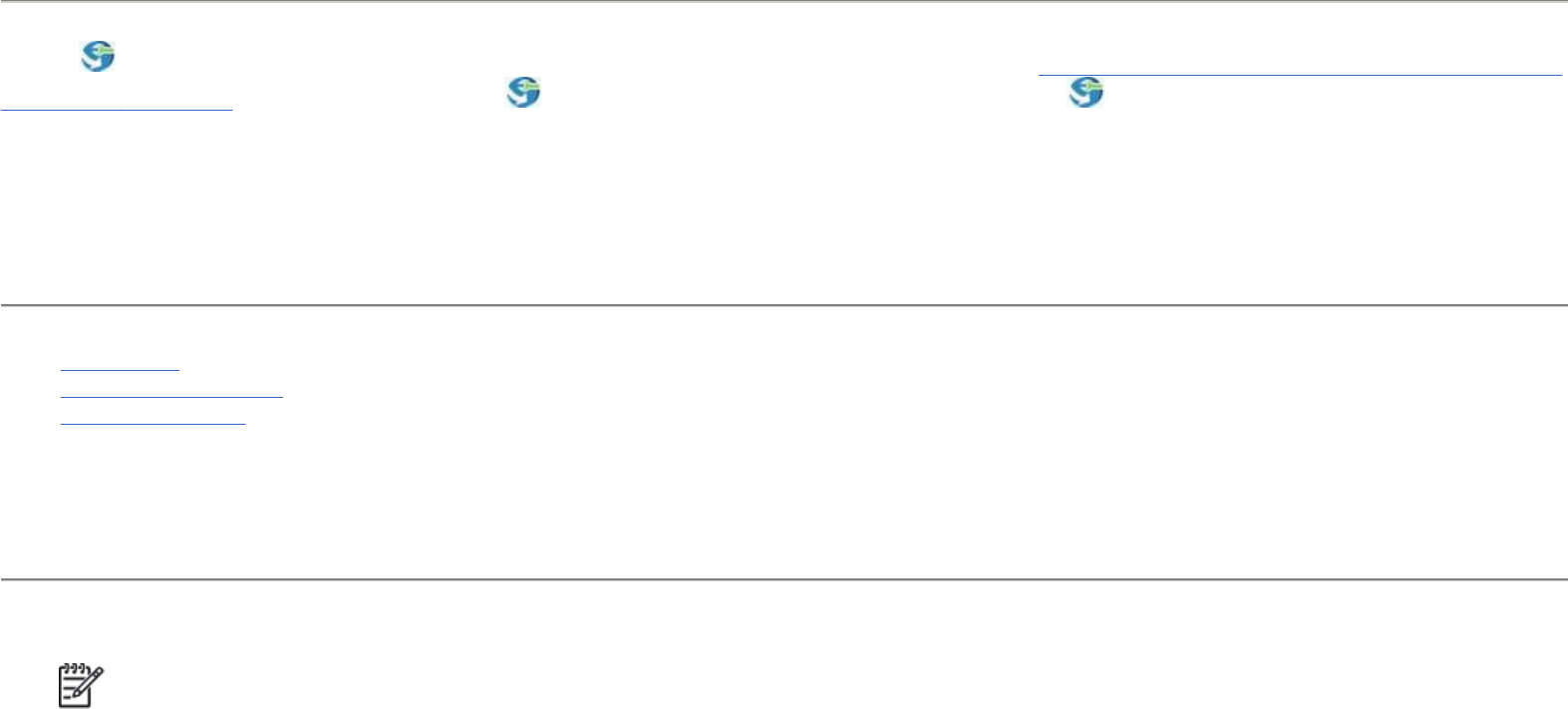
You can learn more about Internet Explorer by tapping Start > Help > Contents > Browse the Web.
To access Internet Explorer, tap Start > Internet Explorer.
HP Enterprise Mobility Suite
Use the HP Enterprise Mobility Agent to help you easily configure and manage your HP iPAQ. Visit http://redirect.hp.com/svs/rdr?TYPE=6&m=handheld-
web-wwww-alal031507 to download and install the HP Enterprise Mobility Agent. After you install the HP Enterprise Mobility Agent, the
application will configure, download, and install different applications from the Internet on your HP iPAQ. This application requires WLAN connection with
access to internet.
Notes
zWrite a note
zCreate a copy of a note
zCreate a voice note
Write a note
●User name and
p
assword
1. Ta
p
Start > Pro
g
rams >Notes.
NOTE: Writing must be selected as the default input mode.
2. Ta
p
New.

To select the handwritten text, tap and hold next to the writing. As soon as dots appear and before they form a complete circle, quickly drag across the writing.
If the writing crosses three ruled lines, it is treated as a drawing rather than text.
Create a copy of a note
To create a copy of a note:
If you paste the contents in a new note, a copy of the note displays in the note list.
Create a voice note
To create a stand-alone recording (voice note) or add a recording to a note:
3. Write
y
our text on the screen.
4. Ta
p
o
k
to return to the note list.
1. Ta
p
Start > Pro
g
rams >Notes.
2. Ta
p
the note
y
ou want to co
py
.
3. Select the text on the screen, and then ta
p
Menu >Co
py
.
4. O
p
en the re
q
uired note from the note list or a new note to which the selected content is to be co
p
ied.
5. Ta
p
Menu > Paste.
1. Ta
p
Start > Pro
g
rams >Notes.
2. Do one of the followin
g
:
●To create a stand-alone recordin
g
, record from the note list.
●To add a recordin
g
to a note, create or o
p
en a note.
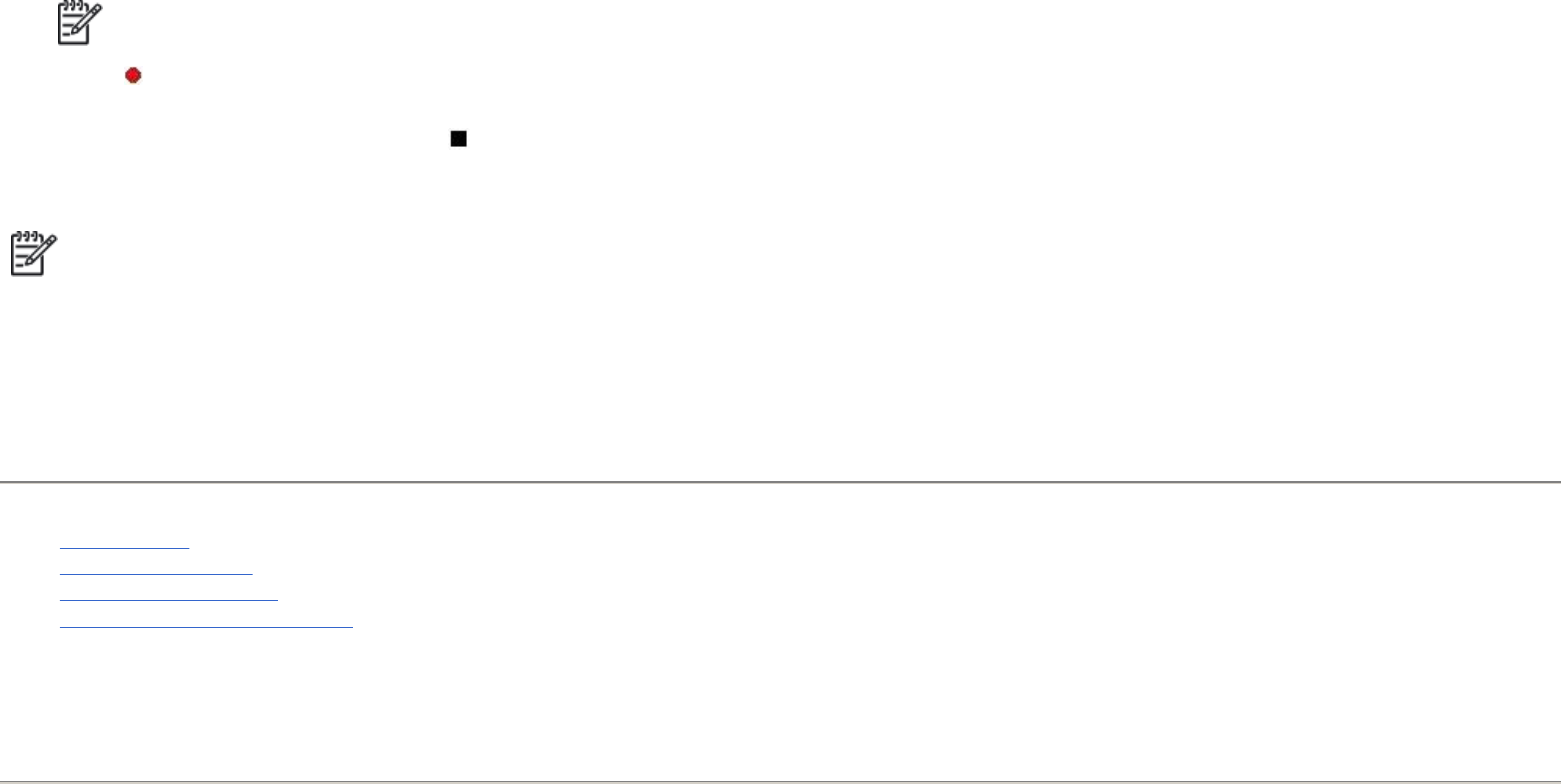
Also, you can create a voice note in Photosmart Mobile and attach the note to a picture.
Storage cards
zStorage cards
zInsert a storage card
zRemove a storage card
zView content of a storage card
Storage cards
Use optional storage cards for:
You can use SD cards or CF cards for additional data storage. The micro SD and mini SD cards can also be used with an SD adapter in your HP iPAQ.
NOTE: If the Recording toolbar does not appear, tap Menu > View Recording Toolbar.
3. Ta
p
the
(
Record
)
button.
4. S
p
eak into the micro
p
hone located at the bottom of the unit.
5. When finished recordin
g
the note, ta
p
the
(
Sto
p)
button on the Recordin
g
Toolbar.
6. Ta
p
o
k
to return to the note list.
NOTE: If recording in an open note, an icon displays in the note. If creating a stand-alone recording, an icon displays in the note list.
●Ex
p
andin
g
the memor
y
of
y
our HP iPAQ
●Addin
g
functionalit
y

To locate information about storage cards, visit http://www.hp.com/accessories/ipaq.
Insert a storage card
To insert a storage card into the storage card slot on your HP iPAQ:
If you have trouble inserting a storage card, try the following:
Remove a storage card
To remove a storage card from the storage card slot on your HP iPAQ:
NOTE: Storage cards must be purchased separately and are not included with your HP iPAQ.
1. Locate the stora
g
e card slot on the top of
y
our HP iPAQ.
2. O
p
en the
p
rotective cover.
3. Insert the stora
g
e card into the stora
g
e card slot and
p
ush the connection ed
g
e of the card firml
y
into the stora
g
e card slot.
NOTE: If your storage card is not recognized, follow the card manufacturer's instructions to install it.
●Make sure the label is facin
g
down.
●Make sure
y
ou are not insertin
g
the card at an an
g
le.
●Make sure
y
ou insert the connection area
(
the metal area
)
first.
1. Close all
p
ro
g
rams that are usin
g
the stora
g
e card.

View content of a storage card
Use File Explorer to view the files that are located on your optional storage card.
If the HP iPAQ does not recognize your storage card, try the following:
Synchronization
zSynchronization software
zCopy files
zMigrate data from Palm Desktop to Microsoft Windows Mobile 6.0
zWireless synchronization cost saving tips
zTroubleshoot synchronization issues
Synchronization software
2. Remove the card from the stora
g
e card slot b
y
li
g
htl
y
p
ushin
g
on the card to unlock it.
3. When the card disen
g
a
g
es and
p
o
p
s out,
p
ull it from the stora
g
e card slot.
1. Ta
p
Start > Pro
g
rams >File Ex
p
lorer.
2.
N
avi
g
ate to select the Memor
y
Card folder to see a list of files and folders.
●Make sure
y
ou have firml
y
p
ushed the stora
g
e card into the stora
g
e card slot.
●Make sure to install an
y
drivers that came with the stora
g
e card.

If your computer is running Windows XP or an earlier version, synchronization settings are managed through Microsoft ActiveSync. Microsoft ActiveSync 4.5 is
available on the Getting Started CD. You can also visit http://www.microsoft.com/windowsmobile for more information or to download Microsoft ActiveSync.
If your computer is running Windows Vista, synchronization settings are managed through Windows Mobile Device Center (WMDC). WMDC 6.1 is available on
the Getting Started CD. You can also visit http://www.microsoft.com/windowsmobile to download WMDC.
Copy files
You can copy files to and from the computer using ActiveSync.
To copy files using ActiveSync:
To copy files using WMDC:
Move the files directly into My Documents on your HP iPAQ (or into a folder inside My Documents).
1. Connect
y
our HP iPAQ to the com
p
uter usin
g
a s
y
nchronization cable.
2. On the com
p
uter, selec
t
Start > Pro
g
rams >ActiveS
y
nc.
3. In the ActiveS
y
nc window, selec
t
Ex
p
lore.
4. Double-click Windows Mobile-Based Device.
5. Open Windows Ex
p
lorer on
y
our computer and locate the files to be copied.
NOTE: You cannot copy preinstalled files or system files.
6. Drag and drop the files between your HP iPAQ and the computer. ActiveSync converts the files so that they can be used by the Office Mobile programs, if
necessar
y
.
1. Connect
y
our HP iPAQ to the com
p
uter and wait for WMDC to launch automaticall
y
.
2. Click File Mana
g
ement to o
p
en the Mobile Device folder for
y
our device.
3. In the Mobile Device folder, navi
g
ate and select the file that
y
ou want to co
py
on
y
our device or com
p
uter.

Migrate data from Palm Desktop to Microsoft Windows Mobile 6.0
If you used a Palm OS based device before purchasing your HP iPAQ, you need to migrate your data from the Palm Desktop software to Microsoft Windows
Mobile 6.0.
To migrate data from Palm Desktop to Windows Mobile 6.0:
Wireless synchronization cost saving tips
How you manage the cost of wireless synchronization from your HP iPAQ depends on your priorities.
1. Ensure that
y
ou have Microsoft Outlook 98 or hi
g
her installed on
y
our com
p
uter.
2. Insert the Companion CD that came with your Palm unit into your computer's CD-ROM drive. From the Discover Your Handheld screen, select Install
Microsoft Conduits. Alternatively, you can reinstall the Palm Desktop software. During the configuration process, select Synchronize your handheld with
Microsoft Outlook and Palm Deskto
p
software.
NOTE: Microsoft Outlook must be set as your default e-mail program to properly synchronize with the Palm Desktop software. If you need to
change your settings, open Microsoft Outlook, then click Tools > Options > Other tab and check the Make Outlook the default
program for E-mail, Contacts, and Calendar check box. Click Apply > OK, and then restart your computer.
3. Use the HotSync software located on the Companion CD that came with your Palm unit to synchronize your Palm information with Outlook. Refer to the
instructions that came with
y
our Palm unit for hel
p
installin
g
or usin
g
HotS
y
nc.
4. When Outlook is synchronized with your Palm device, uninstall Hotsync from your computer. Click Start > Control Panel > double-click Add or Remove
Pro
g
rams. Selec
t
Palm Deskto
p
, then click Remove. Follow the on-screen instructions.
5. Insert the Getting Started CD into your computer’s CD-ROM drive and follow the on-screen instructions to install ActiveSync on your computer and create a
p
artnershi
p
between
y
our HP iPAQ and
y
our com
p
uter.
To Do this
Reduce network connection or data transfer costs Increase the time between scheduled synchronizations or synchronize manually.
Check the details of
y
our rate
p
lan.
Extend batter
y
life Schedule s
y
nchronization less fre
q
uentl
y
or s
y
nchronize manuall
y
.
Keep
y
our information up to date Durin
g
p
eriods of hi
g
h mail volume, schedule s
y
nchronization at re
g
ular bu
t

Troubleshoot synchronization issues
Following is a list of symptoms that might indicate synchronization issues:
Here is a list of tips to help you troubleshoot synchronization issues:
frequent intervals. During periods of low mail volume, schedule
s
y
nchronization as items arrive.
NOTE: The device power-down timer is reset each time you synchronize. If you schedule a synchronization interval that is smaller than the time
interval set for the device to automatically power down, the device never turns off to save battery power.
●
N
o ActiveS
y
nc tone pla
y
s (or a
g
ra
y
icon displa
y
s), and there is no activit
y
in the Microsoft ActiveS
y
nc window on
y
our computer.
●ActiveSync tone plays, and the ActiveSync icon on your computer changes to a swirling green icon. The Retrieving settings message displays on your
com
p
uter, but the ActiveS
y
nc connection dro
p
s
p
rior to establishin
g
the
p
artnershi
p
.
●ActiveS
y
nc is searchin
g
for a connection but cannot establish one.
(
The
g
reen icon on
y
our com
p
uter continues to s
p
in.
)
●Synchronization has been established between your HP iPAQ and computer but connection has dropped. (The green icon on your computer stops spinning
and
g
ra
y
s out.
)
●The firewall or other network
p
rotection software messa
g
e box is dis
p
la
y
ed when ActiveS
y
nc tries to access the network or Internet.
●WMDC does not launch even after installation.
●Check the OS on your computer before you begin synchronizing information between your HP iPAQ and computer. The synchronization method varies
dependin
g
on the OS runnin
g
on the computer.
NOTE: HP does not guarantee the accurate functionality of any third party applications with Windows Vista.
●
(Firewall software, such as Sygate Personal Firewall, TrendMicro PC-cillin Internet Security 2005, Norton Personal Firewall, McAfee Personal Firewall, or
Zone Alarm Security Suite might block synchronization.) Refer to the documentation that came with your firewall program to determine how to add
ActiveSync 4.5 or WMDC 6.1 to the program's exception list. To further troubleshoot a firewall application, visit:
If you are running ActiveSync 4.5 or WMDC 6.1 and personal firewall software on your computer, please add ActiveSync 4.5 or WMDC 6.1 to the firewall
p
ro
g
ram's exce
p
tion list.

After trying the above solutions without any success in solving your connection problem, perform a factory reset on your HP iPAQ using the HP iPAQ Setup
Assistant.
You can reinstall applications on your HP iPAQ after the hard or clean reset is complete by using ActiveSync or WMDC on your computer.
After your HP iPAQ is synchronized properly, do the following:
http://www.microsoft.com/windowsmobile.
●During the ActiveSync installation, if you inadvertently selected the Microsoft Exchange Server check box and are not planning to connect to an Exchange
server, follow these ste
p
s:
●Connect
y
our HP iPAQ to
y
our com
p
uter. Make sure an ActiveS
y
nc connection is established.
●On
y
our com
p
uter, click Start > All Pro
g
rams >Microsoft ActiveS
y
nc.
●Click Tools > O
p
tions.
●Clear the boxes for the s
y
nc items listed under the Server
g
rou
p
.
●Select the check boxes under the Com
p
uter
g
rou
p
for those items
y
ou want to s
y
nchronize.
●Disconnect your HP iPAQ from your computer and wait for the ActiveSync or WMDC message confirming that your device is no longer connected.
Reconnect
y
our HP iPAQ to
y
our com
p
uter. Wait to see if
y
our HP iPAQ connects to
y
our com
p
uter.
●On
y
our com
p
uter, in the ActiveS
y
nc a
pp
lication, selec
t
File >Connection Settin
g
s. Confirm that USB is selected as a
p
otential connection method.
●Connect
y
our HP iPAQ to a different USB
p
ort on
y
our com
p
uter.
●Check
y
our s
y
nchronization cable. Consider usin
g
another s
y
nchronization cable, if available.
●Tr
y
s
y
nchronizin
g
via a Bluetooth connection.
●Restart
y
our com
p
uter and HP iPAQ and reconnect
y
our iPAQ to
y
our com
p
uter.
●Uninstall ActiveS
y
nc or WMDC from
y
our com
p
uter, and then reinstall it.
●To uninstall ActiveSync from your computer, click Start > Control Panel > Add or Remove Programs > Microsoft ActiveSync. Then click
Remove >Yes.
●To uninstall WMDC from your computer, click Start > Control Panel > Uninstall or Change a Program > Windows Mobile Device Center and
Windows Mobile Device Center Driver U
p
date. Then click Uninstall.
●For ActiveS
y
nc, selec
t
Tools > Add/Remove Pro
g
rams, and then select an
y
p
ro
g
rams
y
ou want to reinstall.
●For WMDC, when the device is not synchronizing, select Programs and Services > Add/Remove Programs. Select the programs you want to reinstall and
click O
K
.

Tasks
zSet start and due dates for a task
zShow start and due dates in the task list
zSet options for displaying tasks on the Today screen
zMark a task as completed
Set start and due dates for a task
Show start and due dates in the task list
Set options for displaying tasks on the Today screen
1. Ta
p
Start > Pro
g
rams >Tasks.
2. Tap the task
y
ou want to set start and due dates for.
3. Ta
p
Edit and do one or both of the followin
g
:
●Ta
p
Starts to enter a start date for the task.
●Ta
p
Due to enter a due date for the task.
4. Ta
p
o
k
.
1. Ta
p
Start > Pro
g
rams >Tasks.
2. Ta
p
Menu > O
p
tions…
3. Select the Show start and due dates check box.
4. Ta
p
o
k
.

If you have a large number of tasks, you might want to specify the kind of tasks that are displayed on the Today screen.
Mark a task as completed
To mark a task as completed:
To mark an open task as completed:
Product specifications
zSystem specifications
zPhysical specifications
zOperation environment
1. Ta
p
Start > Settin
g
s > Personal > Toda
y
.
2. Ta
p
Items, and then select the Tasks check box.
3. Ta
p
Tasks to access o
p
tions, then ta
p
O
p
tions…
4. Unde
r
Dis
p
la
y
number of, select the t
yp
e of tasks to a
pp
ear on the Toda
y
screen.
5. In the Cate
g
or
y
list, select whether to dis
p
la
y
onl
y
tasks assi
g
ned to a s
p
ecific cate
g
or
y
or to dis
p
la
y
all tasks.
1. Ta
p
Start > Pro
g
rams >Tasks.
2. In the task list, select the check box next to the task
y
ou want to mark as com
p
leted.
1. Ta
p
Edit.
2. In the Status
b
ox, ta
p
Com
p
leted.

System specifications
Physical specifications
NOTE: Not all models described are available in all countries/regions. For more information on specifications for your particular model, on your
HP iPAQ, tap Start > Settings > System > AssetViewer.
S
y
stem Feature Descri
p
tion
Processo
r
Monahans LV 624
O
p
eratin
g
S
y
ste
m
Microsof
t
® Windows Mobile 6.0
Memor
y
256 MB Flash & 128 MB SDRAM
External Powe
r
5V/2A DC char
g
e
r
Dis
p
la
y
4” VGA TFT
LED Backli
g
h
t
8 white li
g
h
t
SD/SDIO/CF Slo
t
Su
pp
orts SD/SDIO/CF memor
y
Wired Stereo Headse
t
3.5
–
mm with 3 and 4
p
in su
pp
ort for stereo or VoIP headse
t
Antenna WLAN and Bluetooth dual antennas
Audio Speake
r
-2, and one 3.5
–
mm stereo headset
j
ack
Batter
y
2200 mAh Li-Ion removable/rechar
g
eable batter
y
Bluetooth Bluetooth 2.0, Profiles: Headset/ Handsfree/ OBEX/ PAN/ FTP/ Serial Port/
A2DP, 10 meter range (approximately 33 feet)– High-speed, low-power,
short-range wireless communication with other Bluetooth devices, support
collaborative coexistence with IEEE 802.11b/
g
WLAN IEEE 802.11b/
g
, su
pp
orts collaborative coexistence with Bluetooth 2.0 + EDR
US Metric
Len
g
th 5.2677 in 133.8 m
m
Width 2.9685 in 75.4 m
m
De
p
th 0.685 in 17.4 m
m
Wei
g
h
t
6.702 oz 190
g
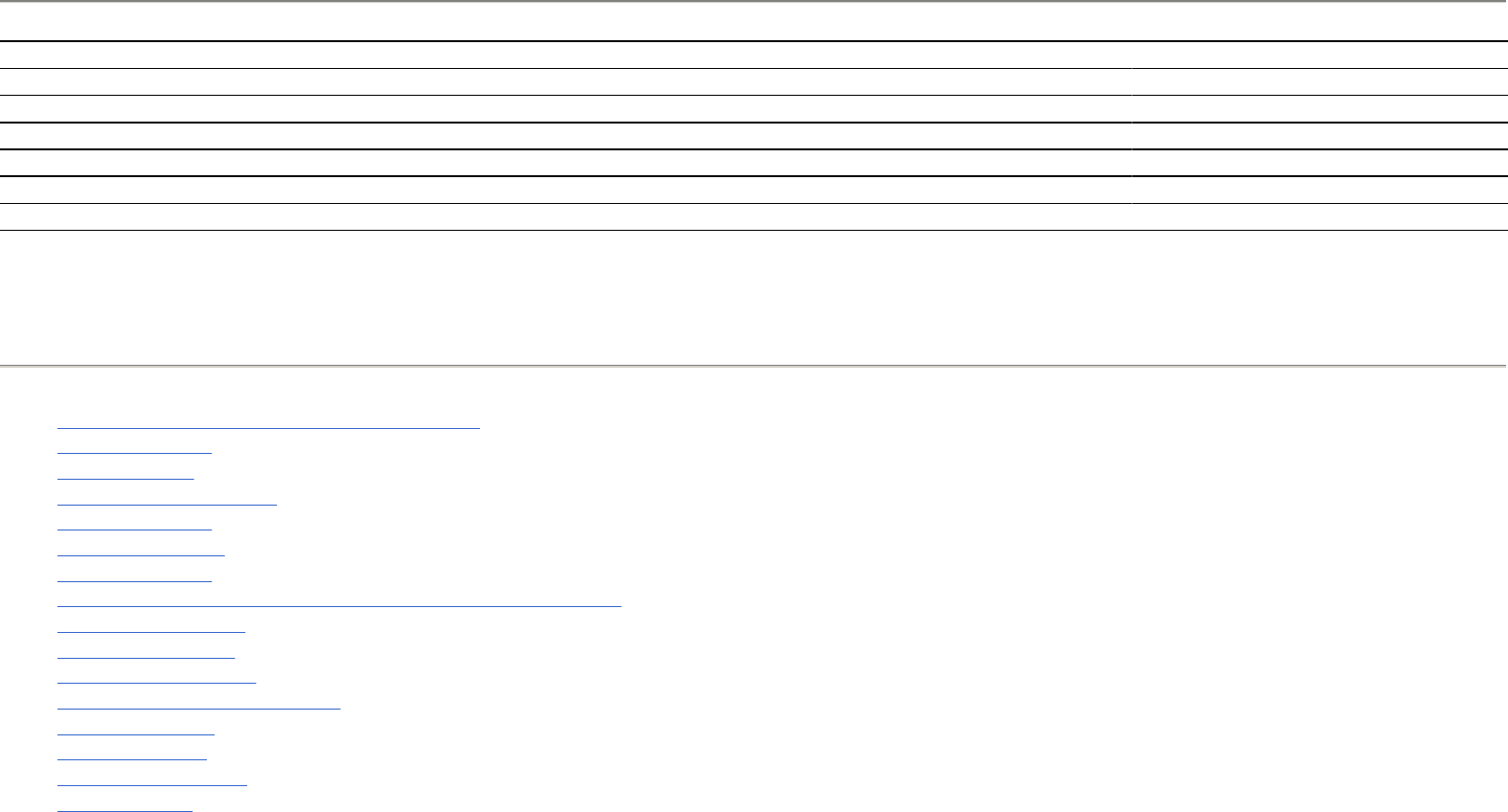
Operation environment
Regulatory notices
zFederal Communications Commission Notice
zCanadian Notice
zAvis Canadien
zEuropean Union Notice
zBattery Warning
zBattery Recycling
zBattery Disposal
zDisposal of Waste Equipment by Users in Private Household
zEquipment Warning
zAcoustics Warning
zAirline Travel Notice
zMedical Electronic Equipment
zWireless Notices
zJapanese Notice
zTaiwan DGT Notice
zKorean Notice
Federal Communications Commission Notice
US Metric
Tem
p
erature O
p
eratin
g
23° to 113° F -5° to 45° C
N
on-o
p
eratin
g
68° to 140° F 20° to 60° C
Relative Humidit
y
O
p
eratin
g
30 % to 85 % 30 % to 85 %
N
on-o
p
eratin
g
30 % to 90 % 30 % to 90 %
Maximum Altitude O
p
eratin
g
0 to 15,000 f
t
0 to 4572
m
N
on-o
p
eratin
g
0 to 40,000 f
t
0 to 12192
m

This equipment has been tested and found to comply with the limits for a Class B digital device, pursuant to Part 15 of the FCC Rules. These limits are designed to
provide reasonable protection against harmful interference in a residential installation. This equipment generates, uses, and can radiate radio frequency energy and,
if not installed and used in accordance with the instructions, may cause harmful interference to radio communications. However, there is no guarantee that
interference will not occur in a particular installation.
If this equipment does cause harmful interference to radio or television reception, which can be determined by turning the equipment off and on, the user is
encouraged to try to correct the interference by one or more of the following measures:
This section provides information about the following topics:
zModifications
zCables
zDeclaration of Conformity for Products Marked with the FCC Logo (United States Only)
Modifications
The FCC requires the user to be notified that any changes or modifications made to this device that are not expressly approved by HP may void the user's authority
to operate the equipment.
Cables
To maintain compliance with FCC Rules and Re
g
ulations, connections to this device must be made with shielded cables havin
g
metallic RFI/EMI connecto
r
●Reorient or relocate the receivin
g
antenna.
●Increase the se
p
aration between the e
q
ui
p
ment and receiver.
●Connect the e
q
ui
p
ment into an outlet on a circuit different from that to which the receiver is connected.
●Consult the dealer or an ex
p
erienced radio or television technician for hel
p
.

hoods.
Declaration of Conformity for Products Marked with the FCC Logo
(United States Only)
This device complies with Part 15 of the FCC Rules. Operation is subject to the following 2 conditions:
If you have questions about the product that are not related to this declaration, write to
or call 1–800–HP–INVENT (1–800–474–6836)
For questions regarding this FCC declaration, write to
or call HP at 281–514–3333
To identify your product, refer to the part, series, or model number located on the product.
Canadian Notice
1. This device ma
y
not cause harmful interference.
2. This device must acce
p
t an
y
interference received, includin
g
interference that ma
y
cause undesired o
p
eration.
Hewlet
t
-Packard Com
p
an
y
P. O. Box 692000, Mail Sto
p
530113
Houston, TX 77269–2000
Hewlet
t
-Packard Com
p
an
y
P. O. Box 692000, Mail Sto
p
510101
Houston, TX 77269–2000
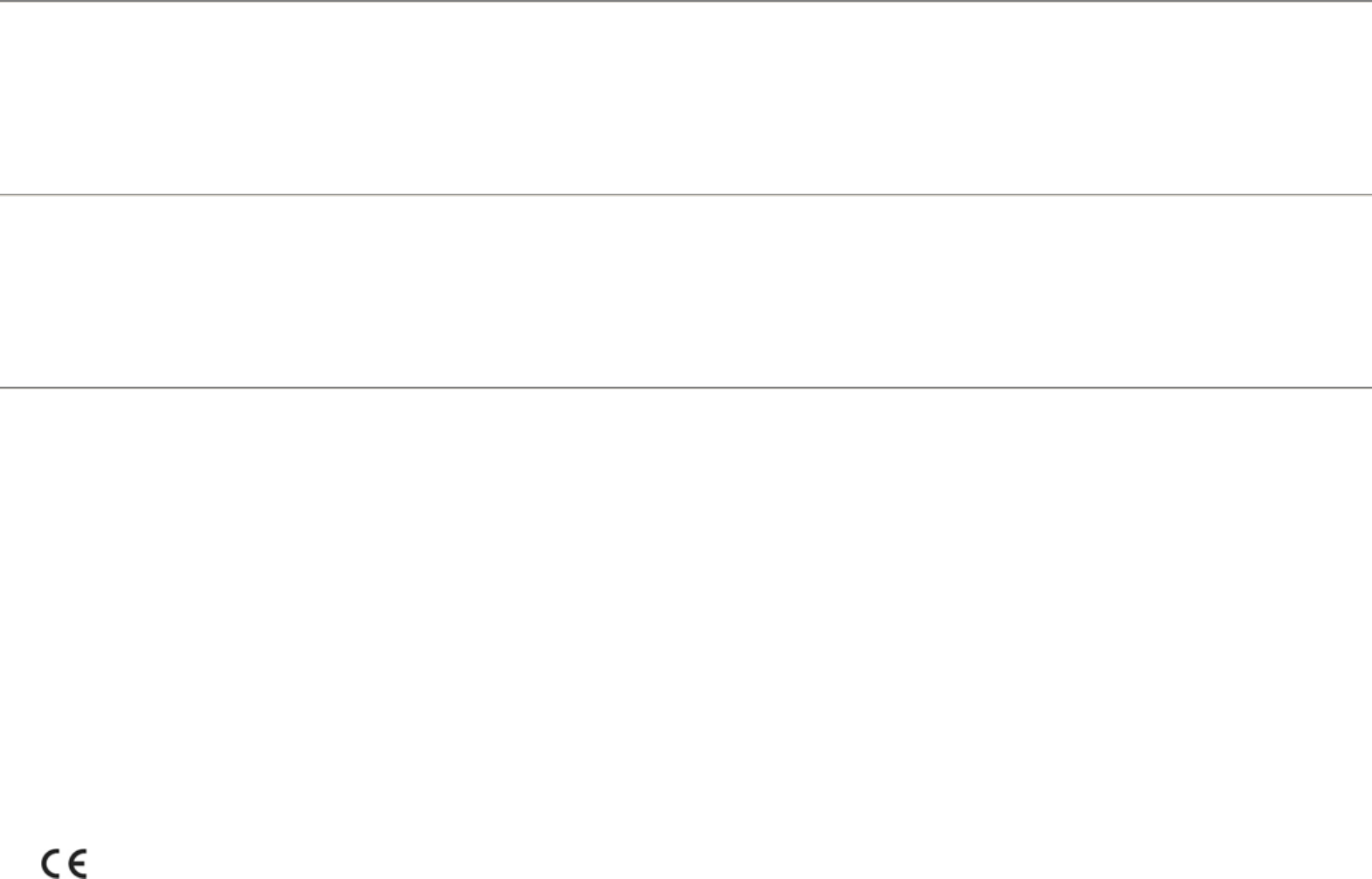
This Class B digital apparatus meets all requirements of the Canadian Interference-Causing Equipment Regulations.
Avis Canadien
Cet appareil numérique de la classe B respecte toutes les exigences du Règlement sur le matériel brouilleur du Canada.
European Union Notice
Products bearing the CE marking comply with the following EU Directives:
CE compliance of this product is valid only if powered with the correct CE-marked AC adapter provided by HP.
If this product has telecommunications functionality, it also complies with the essential requirements of the following EU Directive:
Compliance with these directives implies conformity to harmonized European standards (European Norms) that are listed in the EU Declaration of Conformity
issued by HP for this product or product family. This compliance is indicated by one of the following conformity markings placed on the product.
●Low Volta
g
e Directive 2006/95/EC
●EMC Directive 2004/108/EC
●R&TTE Directive 1999/5/EC
●
This CE markin
g
is valid for non-telecommunications
p
roducts and for EU harmonized telecommunications
p
roducts, such as Bluetooth®.
●This CE markin
g
is valid for EU non-harmonized telecommunications
p
roducts.

The telecommunications functionality of this product may be used in the following EU and EFTA countries:
Austria, Belgium, Bulgaria, Cyprus, Czech Republic, Denmark, Estonia, Finland, France, Germany, Greece, Hungary, Iceland, Ireland, Italy, Latvia,
Liechtenstein, Lithuania, Luxembourg, Malta, Netherlands, Norway, Poland, Portugal, Slovak Republic, Romania, Slovenia, Spain, Sweden, Switzerland, and
United Kingdom.
This section provides information about the following topics:
zProducts with 2.4–GHz Wireless LAN Devices
Products with 2.4–GHz Wireless LAN Devices
This section provides information about the following topics:
zFrance
zItaly
France
L'utilisation de cet equipement (2.4GHz wireless LAN) est soumise à certaines restrictions: cet equipement peut être utilisé à l'interieur d'un batiment en utilisant
toutes les frequences de 2400 a 2483.5MHz (Chaine 1–13). Pour une utilisation en environnement exterieur, vous devez utiliser les frequences comprises entre
2454 a 2483.5–MHz (Chaine 10–13). Pour les dernières restrictions, voir http://www.art-telecom.fr.
For 2.4
–
GHz wireless LAN operation of this product, certain restrictions appl
y
. This equipment ma
y
use the entire–2400
–
MHz to 2483.5–MHz frequenc
y
band
*If applicable, a notified body number is used. Refer to the regulatory label provided on this product.
Hewlett-Packard GmbH, HQ-TRE, Herrenberger Strasse 140, D-71034 Böblingen, Germany

(channels 1 through 13) for indoor applications. For outdoor use, the 2454–MHz to 2483.5–MHz frequency band (channels 10 through 13) may not be used. For
the latest requirements, see http://www.art-telecom.fr.
Italy
E'necessaria una concessione ministeriale anche per l'uso del prodotto. Verifici per favore con il proprio distributore o direttamente presso la Direzione Generale
Pianificazione e Gestione Frequenze.
License required for use. Verify with your dealer or directly with the General Direction for Frequency Planning and Management (Direzione Generale
Pianificazione e Gestione Frequenze).
Battery Warning
Battery Recycling
HP encourages customers to recycle used electronic hardware, HP original print cartridges, and rechargeable batteries. For more information about recycling
programs, visit http://www.hp.com/recycle.
Battery Disposal
WARNING! This HP iPAQ contains a lithium ion rechargeable battery. To reduce the risk of fire or burns, do not disassemble, crush, puncture, short
external contacts, or dispose of in fire or water. Replace only with the HP spare.
CAUTION: Risk of explosion if battery is replaced by an incorrect type. Dispose of used batteries according to the instructions.
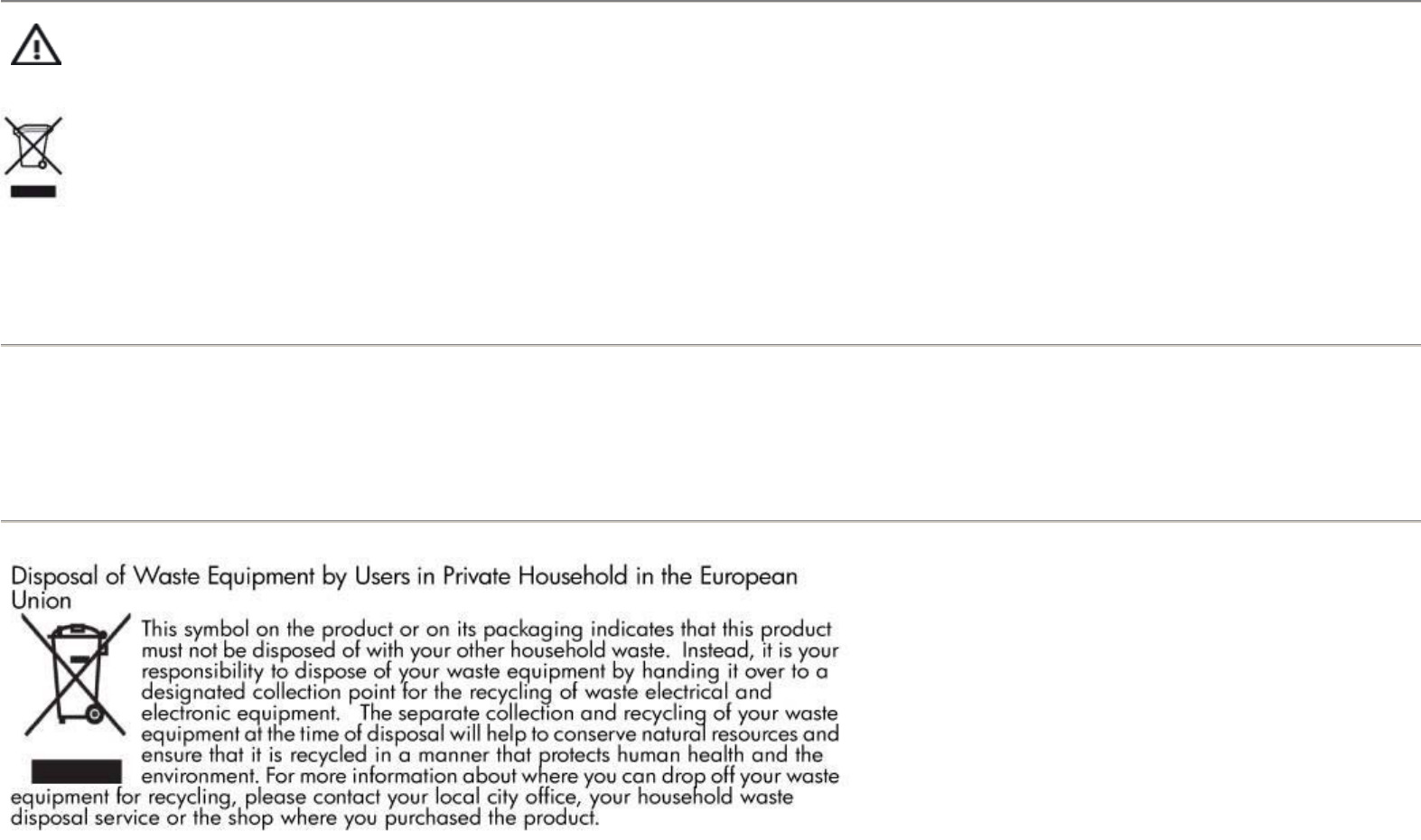
Disposal of Waste Equipment by Users in Private Household
This section provides information about the following topics:
z
WARNING! When a battery has reached the end of its useful life, do not dispose of the battery in general household waste. Follow the local laws and
regulations in your area for computer battery disposal.
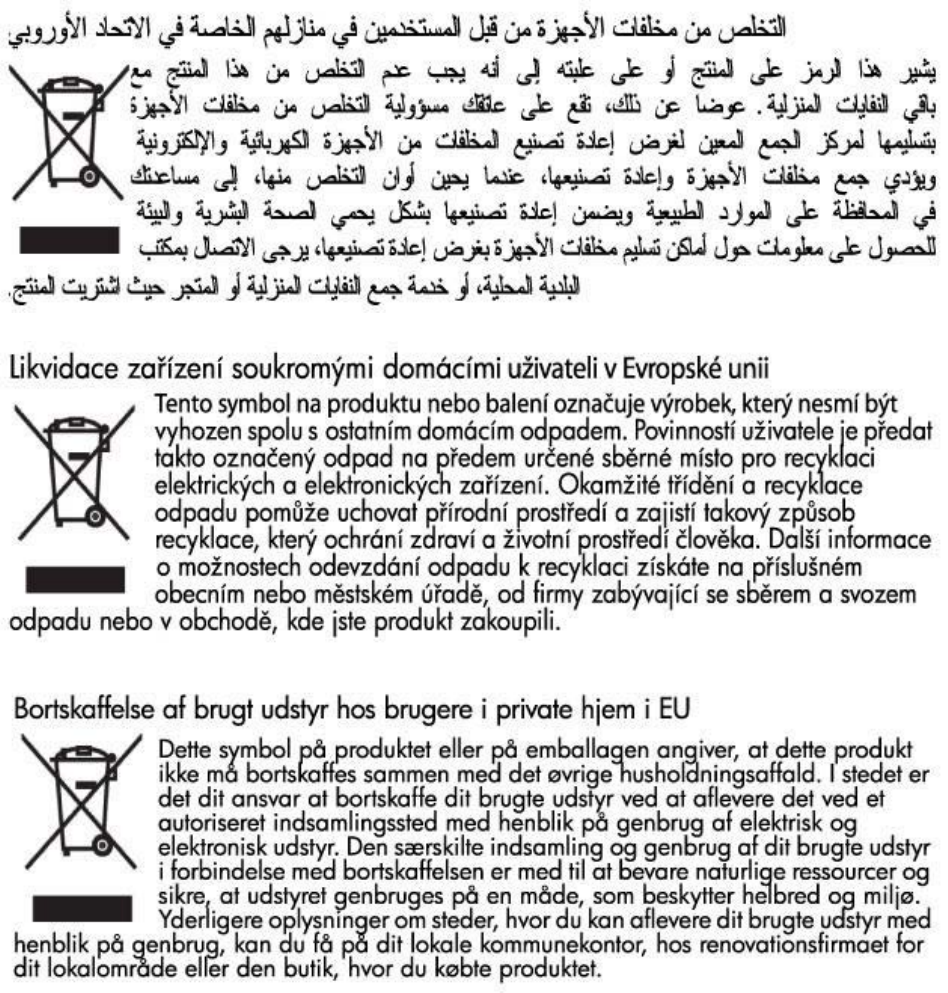
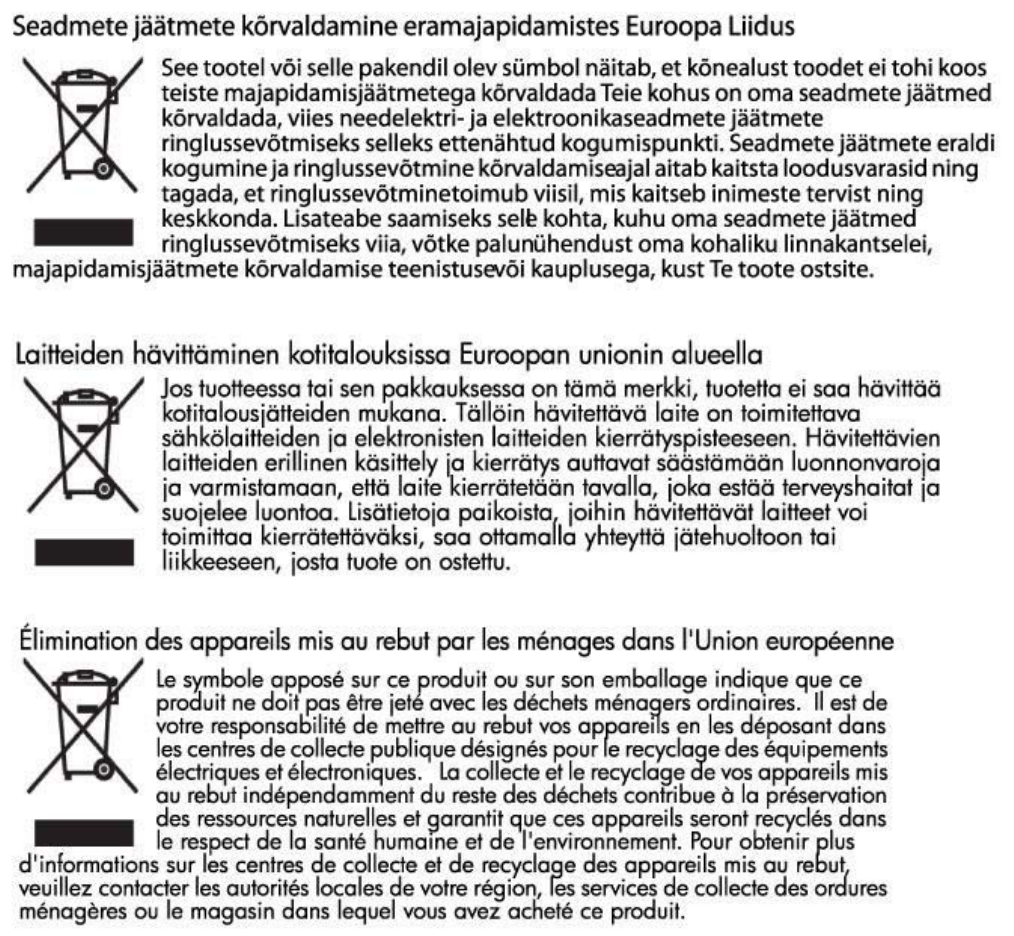
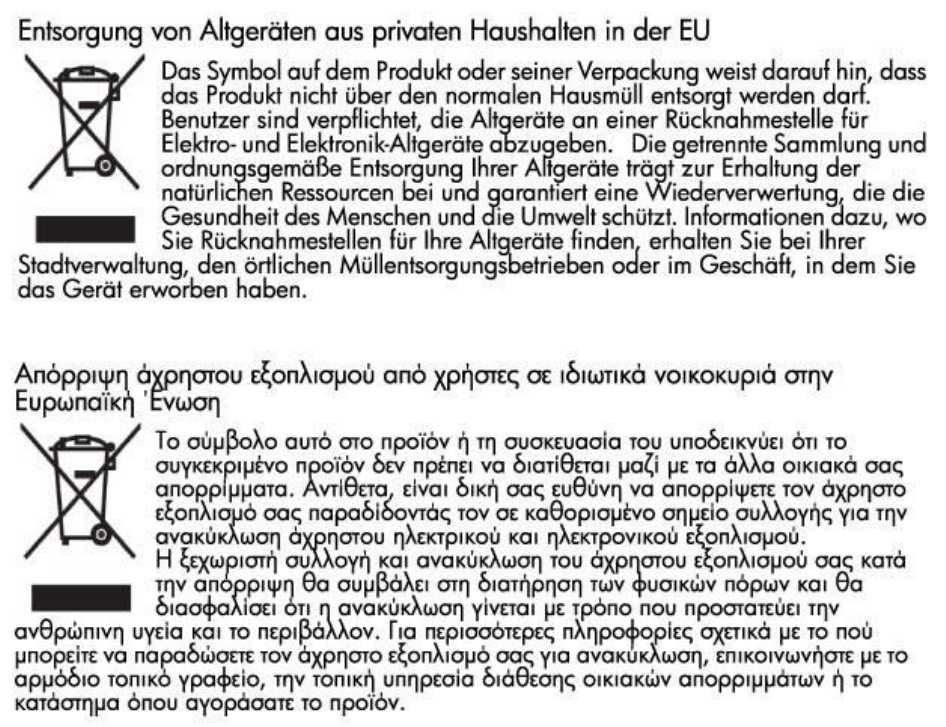
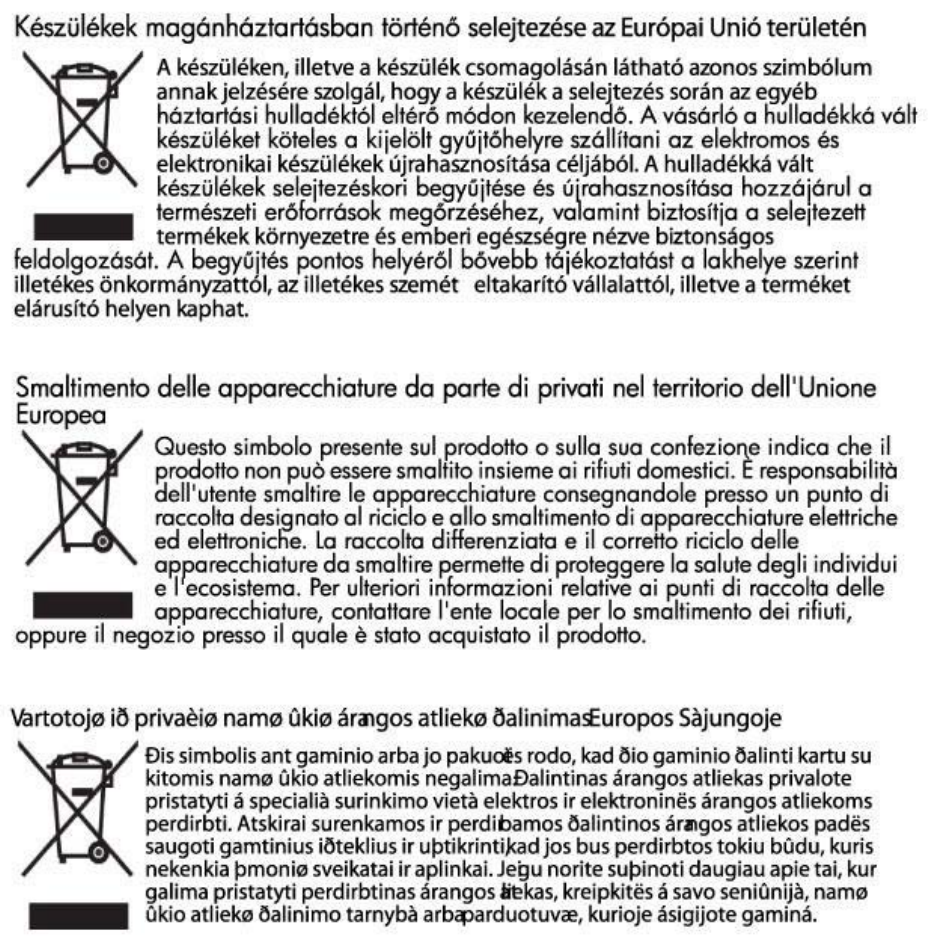
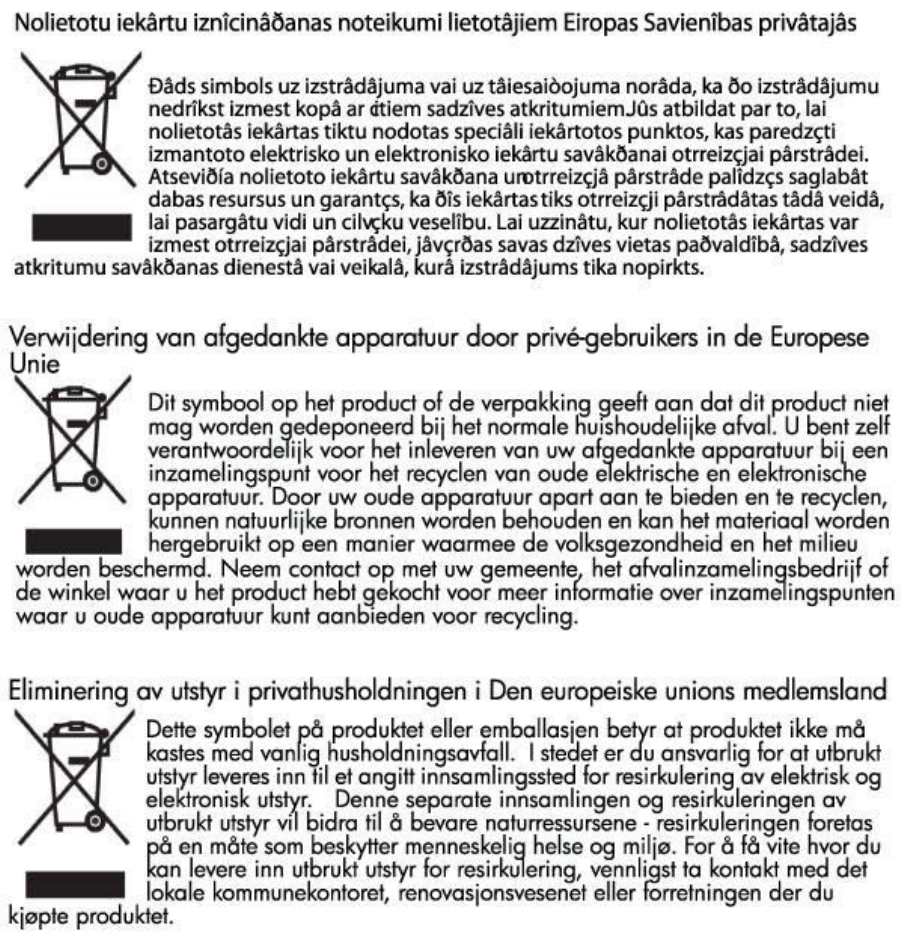
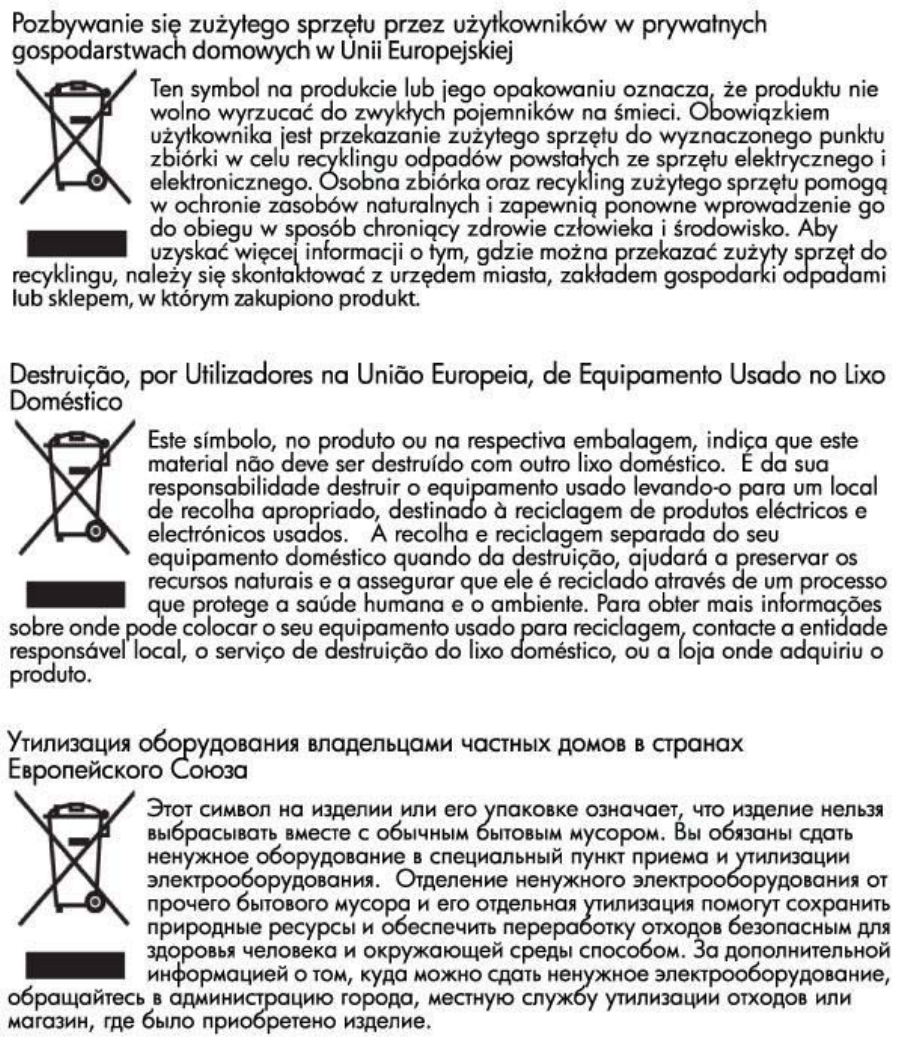
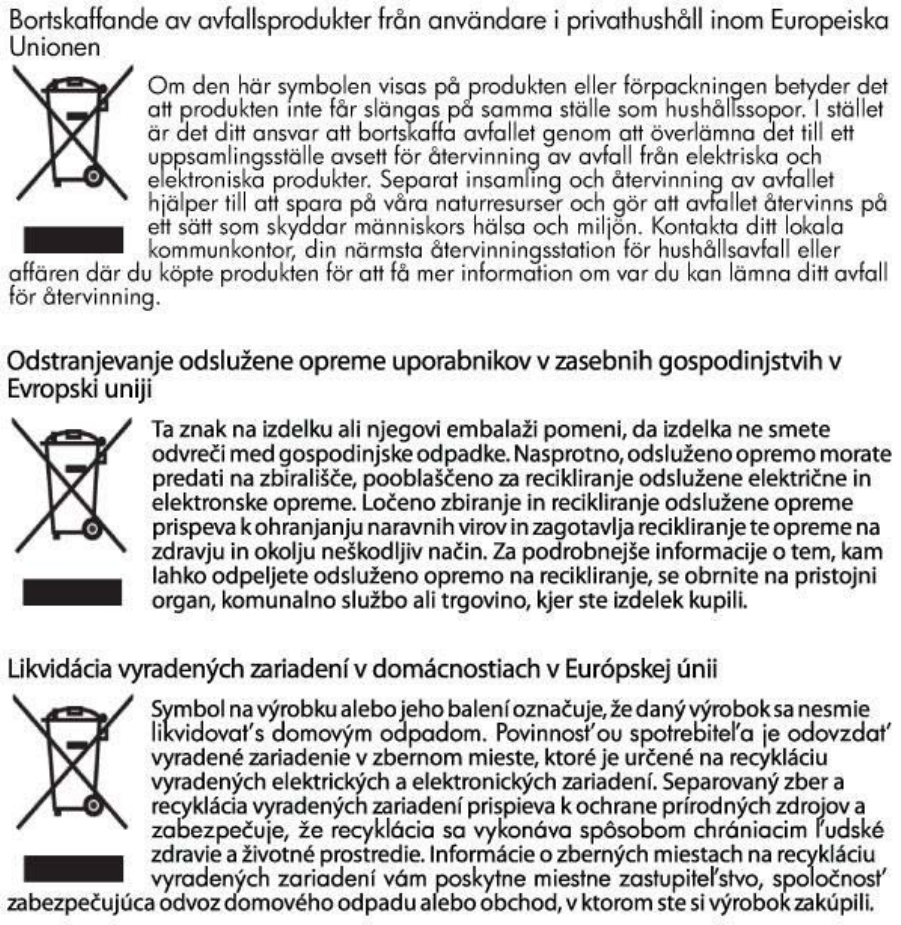
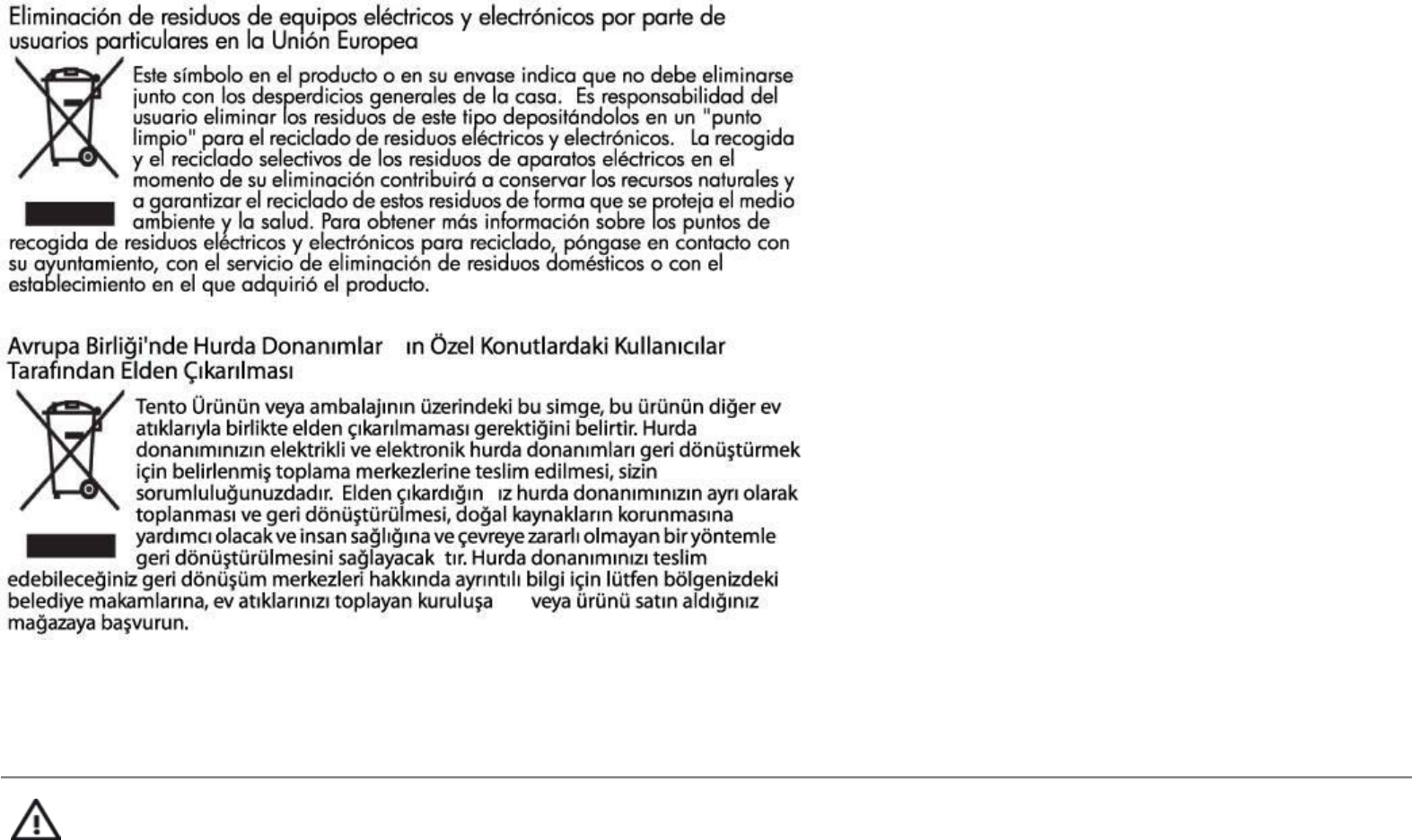
Equipment Warning
WARNING! To reduce the risk of personal injury, electrical shock, fire or damage to the equipment:
Plug the AC adapter into an AC outlet that is easily accessible at all times.
Disconnect power from the equipment by unplugging the AC adapter from the AC outlet or unplugging the synchronization cable from
the host computer.

Acoustics Warning
Airline Travel Notice
Use of electronic equipment aboard commercial aircraft is at the discretion of the airline.
Medical Electronic Equipment
Do not place anything on the power cord or any of the other cables. Arrange them so that no one may accidentally step on or trip over
them.
Do not pull on a cord or cable. When unplugging from the electrical outlet, grasp the cord by the plug or, in the case of the AC adapter,
grasp the AC adapter and pull out from the electrical outlet.
Do not use converter kits sold for appliances to power your HP iPAQ.
WARNING! Listening to this device at high volume levels and for extended durations may damage one’s hearing. In order to reduce the risk of
damage to hearing, one should lower the volume to a safe, comfortable level, and reduce the amount of time listening at high levels.
●For your own safety, before using headsets or earphones, always reset the volume. Some headphones are louder than other headphones, even if the volume
control settin
g
is the same.
●Chan
g
in
g
the default audio or e
q
ualizer settin
g
s mi
g
ht lead to hi
g
her volume and should onl
y
be done with caution.
●Headsets or ear
p
hones used with this device should com
p
l
y
with the head
p
hone limits in EN 50332-2.

If you have a medical condition that requires you to use a pacemaker, hearing aid, or any type of medical electronic equipment, consult the manufacturer of the
equipment to determine if the medical equipment is shielded from RF energy. Turn off your HP iPAQ in health care facilities or hospitals when there are posted
restrictions requiring you to do so.
Wireless Notices
In some environments, the use of wireless devices may be restricted. Such restrictions may apply aboard airplanes, in hospitals, near explosives, in hazardous
locations, etc. If you are uncertain of the policy that applies to the use of this device, please ask for authorization to use it prior to turning it on.
This section provides information about the following topics:
zU.S. Regulatory Wireless Notice
zCanadian Regulatory Wireless Notice
zBrazilian Notice
U.S. Regulatory Wireless Notice
WARNING! Exposure to Radio Frequency (RF) Radiation The radiated output power of this device is below the FCC radio frequency exposure
limits. Nevertheless, the device should be used in such a manner that the potential for human contact during normal operation is
minimized.
To avoid the possibility of exceeding the FCC radio frequency exposure limits, human proximity to the antenna should be minimized. No
metallic body accessories are allowed and 1.5 cm spacing between PDA and the body must be maintained to satisfy RF Exposure.
This PDA has been tested and demonstrated compliance when Bluetooth and Wi-Fi are transmitting simultaneously. This PDA must not
be co-located or operating in conjunction with any other antenna or transmitter.
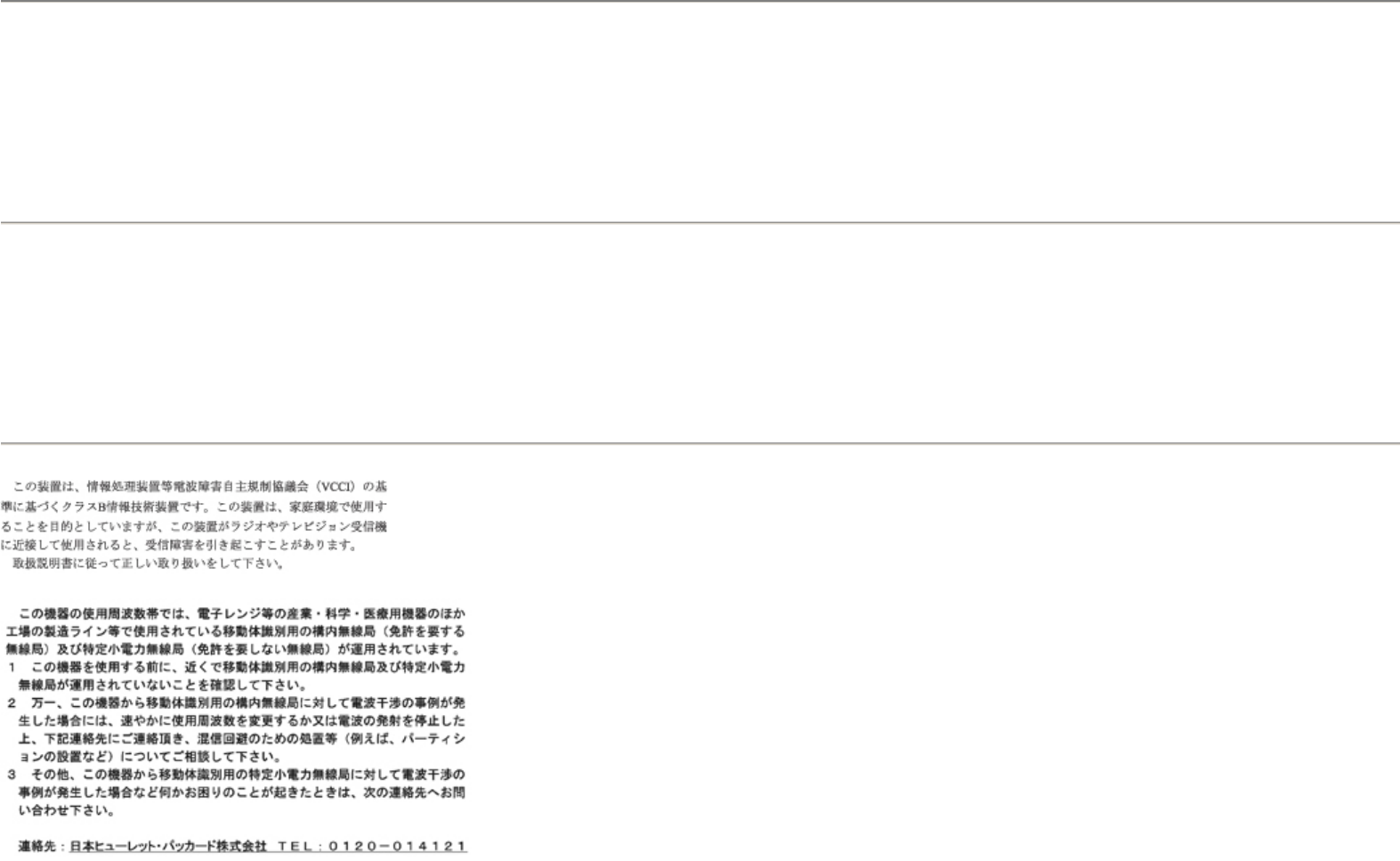
Canadian Regulatory Wireless Notice
Operation is subject to the following two conditions: (1) this device may not cause interference, and (2) this device must accept any interference, including
interference that may cause undesired operation of the device.
Brazilian Notice
Este equipamento opera em caráter secundário, isto é, não tem direito a proteção contra interferência prejudicial, mesmo de estações do mesmo tipo, e não pode
causar interferência a sistemas operando em caráter primário.
Japanese Notice

This section provides information about the following topics:
zWireless LAN 802.11b Devices
zWireless LAN 802.11g Devices
zBluetooth Devices
Wireless LAN 802.11b Devices
Wireless LAN 802.11g Devices
Bluetooth Devices
Taiwan DGT Notice
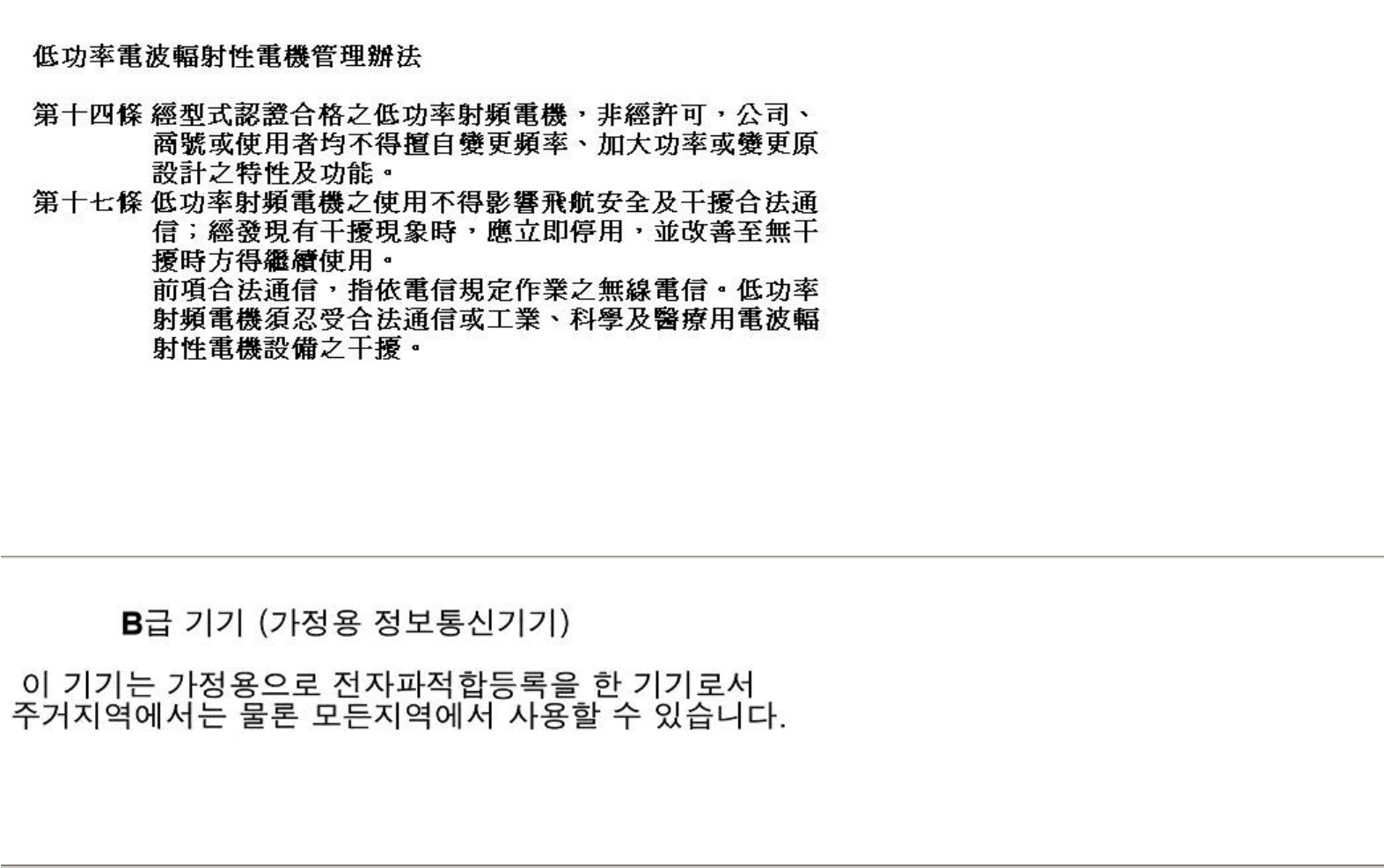
Korean Notice
Safety information
To reduce the risk of bodil
y
in
j
ur
y
, electric shock, fire, and dama
g
e to the e
q
ui
p
ment, observe the safet
y
p
recautions in this document.

zGeneral Precautions
zSafety Precautions for Power Cords and Accessories
zSafety Precautions for Battery Packs
zSafety Precautions for Docking Devices
zSafety Precautions for Products with Wireless Devices
zSafety Precautions for Products with Modems, Telecommunications or Local Area Network Accessories
zSafety Precautions for Products with Laser Devices
zCDRH Regulations
General Precautions
Heed service markings: Except as explained elsewhere in your product documentation, do not service your product yourself. Opening or removing covers that
are marked may expose you to electric shock. For service information on components inside these compartments, call Customer Care.
Request service for damaged products: Turn off the product, unplug it from the electrical outlet, and request service from a service partner under the following
conditions:
Avoid hot areas: The product should be placed away from heat sources such as radiators, heat registers, stoves, and other products (such as amplifiers) that
produce heat.
Allow the product to cool: Allow the product to cool before removing covers and touching internal components.
Avoid wet areas: Never use the
p
roduct in a wet location.
●The
p
ower cord or
p
lu
g
is dama
g
ed.
●Li
q
uid has been s
p
illed into the
p
roduct.
●An ob
j
ect has fallen into the
p
roduct.
●The
p
roduct has been ex
p
osed to rain or water.
●The
p
roduct has been dro
pp
ed or dama
g
ed.
●There are noticeable si
g
ns of overheatin
g
.
●The
p
roduct does not o
p
erate normall
y
when
y
ou follow the o
p
eratin
g
instructions.

Avoid inserting objects into product: Never insert objects of any kind into slots or other openings in the product.
Avoid blocking vents: Slots and openings are provided for ventilation. To prevent overheating, do not obstruct vents. Using a computer on a soft surface, such as
a pillow, blanket, rug, or thick clothing may block airflow.
Clean the product properly: Unplug the product from the wall outlet before cleaning it. Do not use liquid cleaners or aerosol cleaners. Use a soft cloth dampened
with water for cleaning exterior components, but NEVER apply water directly to the product or to an LCD screen.
Use recommended mounting accessories: Do not use the product on an unstable table, cart, stand, tripod, or bracket. Mount the product according to the
manufacturer’s instructions, and use a mounting accessory recommended by the manufacturer.
Use the product with approved equipment: Use your product only with the computers and accessories identified as suitable for use with your product.
Adjust the volume: Turn down the volume before using headphones or other audio devices.
Safety Precautions for Power Cords and Accessories
Use the correct external power source: A product should be operated only from the type of power source indicated on the electrical ratings label. If you are not
sure of the type of power source required, call Customer Care, your service partner, or local power company. For a product that operates from battery power or
other sources, refer to the operating instructions that are included with the product.
Avoid overloading the electrical circuit: Do not overload an electrical outlet, power strip, or convenience receptacle. The overall system load must not exceed
80% of the branch circuit rating. If power strips are used, the load should not exceed 80% of the input rating of the power strip.
Observe extension cord ratings: If an extension cord or power strip is used, make sure that the cord or strip is rated for the product and that the total ampere
ratings of all products plugged into the extension cord or power strip do not exceed 80% of the ampere rating limit of the extension cord or power strip.
Select the correct voltage: Ensure that the voltage select switch on the product is in the correct position for the type of voltage you use (115 V ac or 230 V ac).
Use an approved AC adapter: Only the AC adapter provided with the product, a replacement AC adapter provided by HP, or an AC adapter purchased as an
accessor
y
from HP should be used with the
p
roduct.
WARNING! To reduce the risk of electric shock, fire, or damage to the equipment, do not attempt to power the product with a voltage converter kit
sold for appliances.

Use an approved power cord: If you were not provided with a power cord for your product, you should purchase a power cord that is approved for use in your
country.
The power cord must be rated for the product and for the voltage and current marked on the electrical ratings label of the product. The voltage and current rating
of the cord should be greater than the voltage and current rating marked on the product. In addition, the diameter of the wire must be a minimum of
0.75 mm²/18AWG, and the length of the cord should be between 1.5 meters (5 feet) and 2 meters (6.5 feet) long. If you have questions about the type of power
cord to use, call Customer Care.
Position the power cord carefully: Route the power cord so that it will not be walked on, tripped over, or pinched by items placed upon or against it. Pay
particular attention to the plug, electrical outlet, and the point where the power cord exits the product.
Plug power cord into the proper outlet: Plug the product into an electrical outlet that is easily accessible at all times. If the product is a 3-wire grounding type,
be sure the outlet is the proper grounded (earthed) type. Do not disable the power cord grounding plug because it is an important safety feature.
Unplug the power cord properly: Disconnect power from the product by unplugging the power cord from the electrical outlet. Do not pull on cords and cables.
When unplugging the cord from an electrical outlet, grasp and pull the cord by the plug.
Safety Precautions for Battery Packs
Handle battery packs carefully: Replace a battery pack only with a battery pack approved for this product. For information about removing a battery pack, refer
to your product documentation.
When a battery pack has reached the end of its useful life, do not dispose of the battery pack in general household waste. Follow the local laws and
re
g
ulations in
y
our area for com
p
uter batter
y
p
ack dis
p
osal.
WARNING! To reduce the risk of fire or burns, do not disassemble, crush, or puncture a battery pack; short the external contacts on a battery pack; or
dispose of a battery pack in fire or water. Do not expose a battery pack to high temperatures above 60°C (140°F). Replace only with a
battery pack approved for this computer.
WARNING! There is a danger of explosion if a battery pack is incorrectly replaced. Replace it only with an approved battery pack for this product.
WARNING! Keep battery packs away from children.

In Europe, dispose of or recycle the battery packs by using the public collection system or by returning them to HP, your service partner, or their agents.
Safety Precautions for Docking Devices
Avoid unstable mounting: Do not place a monitor with an unstable base or a monitor heavier than 25 kilograms (55 pounds) on top of a monitor stand, unless the
monitor stand is marked for use with a heavier monitor. Instead, place the monitor on a work surface next to the docking device.
Safety Precautions for Products with Wireless Devices
Safety Precautions for Products with Modems, Telecommunications or
Local Area Network Accessories
WARNING! Exposure to radio frequency radiation. The radiated output power of wireless devices is below the FCC radio frequency exposure
limits. Nevertheless, the device should be used in such a manner that the potential for human contact during normal operation is
minimized. To avoid the possibility of exceeding the FCC radio frequency exposure limits, human proximity to the antenna should not be
less than 20 cm (8 inches) during normal operation.
WARNING! To reduce the risk of fire, electric shock, and injury to persons when using this device, always follow basic safety precautions, including
the following:
●Do not use this
p
roduct near wate
r
–
for exam
p
le: near a bathtub, washbowl, kitchen sink or laundr
y
tub; in a wet basement; or near a swimmin
g
p
ool.
●Avoid usin
g
this
p
roduct durin
g
an electrical storm. There is a remote risk of electric shock from li
g
htnin
g
.
●Do not use this
p
roduct to re
p
ort a
g
as leak while in the vicinit
y
of the leak.
●Alwa
y
s disconnect the modem cable before o
p
enin
g
the e
q
ui
p
ment enclosure or touchin
g
an uninsulated modem cable,
j
ack, or internal com
p
onent.
●If this
p
roduct was not
p
rovided with a tele
p
hone line cord, use onl
y
No. 26 AWG or lar
g
er telecommunication line cord in order to reduce the risk of fire.

Safety Precautions for Products with Laser Devices
For information about laser equipment repair, call Customer Care.
If your product is equipped with laser products, it complies with appropriate safety standards, including IEC 60825. With specific regard to the laser, the
equipment complies with laser product performance standards set by government agencies for Class 1 laser products. It does not emit hazardous light; the beam is
totally enclosed during all modes of customer operation and maintenance.
CDRH Regulations
The Center for Devices and Radiological Health (CDRH) of the U.S. Food and Drug Administration implemented regulations for laser products effective August
2, 1976. These regulations apply to laser products manufactured from August 1, 1976, onward. Compliance is mandatory for products marketed in
the United States.
This system is classified as a Class 1 laser product. This label appears on the laser product.
●Do not
p
lu
g
a modem or tele
p
hone cable into the RJ-45
(
network
)
j
ack.
WARNING! In addition to the general precautions described earlier in this section, be sure to observe the following precautions when operating a
product equipped with a laser device. Failure to observe these precautions could result in fire, bodily injury, and damage to the
equipment.
WARNING! Use of controls or adjustments, or performance of procedures other than those specified herein or in the laser product installation guide,
may result in hazardous radiation exposure.

Frequently asked questions
zI am having trouble turning on my HP iPAQ. What should I do?
zI have trouble connecting to the Internet. What should I do?
zWhy does the HP iPAQ operate slowly at times?
zWhy do I see the Today screen layout error message on my HP iPAQ display screen?
zI have trouble charging my battery. What should I do?
zI am unable to use the ActiveSync feature. What should I do?
zMy HP iPAQ was not connected during WMDC installation?
zMy HP iPAQ was connected while I was installing but WMDC is not launching after installation?
zCan I connect for the first time via Bluetooth?
I am having trouble turning on my HP iPAQ. What should I do?
Your HP iPAQ displays to have problems with the battery. Please perform the following checks:
I have trouble connecting to the Internet. What should I do?
If you have trouble connecting to the Internet, please perform the following checks:
●Is the batter
y
char
g
ed?
●Is the batter
y
p
ro
p
erl
y
installed?
●Make sure
y
ou have subscribed for a data service from
y
our service o
p
erator.
●Make sure
y
ou entered correct settin
g
p
arameters, such as APN and IP addresses in data
p
rofile setu
p
.

Why does the HP iPAQ operate slowly at times?
You should have at least 1.5 to 2 MB of free memory space on your HP iPAQ so that the device operates efficiently. To check the free memory space, tap Start >
Settings > System > Memory. Remember to delete or transfer old e-mail messages and pictures on your HP iPAQ to free available memory space.
Why do I see the Today screen layout error message on my HP iPAQ
display screen?
You will get a Today screen layout error message if you did not select a Today screen layout. To correct this, tap Start > Settings > Personal and select a layout
for the Today screen.
I have trouble charging my battery. What should I do?
If you have trouble charging your battery, please perform the following checks:
I am unable to use the ActiveSync feature. What should I do?
●Is the batter
y
char
g
er correctl
y
p
lu
gg
ed into the batter
y
char
g
er socket on the HP iPAQ?
●Is the
p
ower cord of the char
g
er dama
g
ed?
●Is the batter
y
ver
y
old? If
y
es, re
p
lace with a new batter
y
and tr
y
a
g
ain.
NOTE: To locate information about batteries, visit http://www.hp.com/accessories/ipaq.

To be able to use the ActiveSync feature, upgrade your computer to the latest version of ActiveSync. It is recommended to use ActiveSync 4.5 or a higher version.
Visit http://www.microsoft.com/downloads for the latest versions.
My HP iPAQ was not connected during WMDC installation?
Although you do not need to connect your HP iPAQ during the installation process of WMDC, it is highly recommended to have it connected.
My HP iPAQ was connected while I was installing but WMDC is not
launching after installation?
In some cases after an upgrade, you will need to disconnect and reconnect the device for WMDC to launch.
Can I connect for the first time via Bluetooth?
The initial connection between your HP iPAQ and the desktop WMDC application needs to happen with a HP Smart Connector synchronization cable. After this
initial connection, you will be able to set up Bluetooth for future connections.
Guidelines for care and maintenance
It is recommended that
y
ou follow certain
g
uidelines to
p
revent
p
ossible dama
g
e to
y
our HP iPAQ and to kee
p
it in a
g
ood condition.

zUsing your HP iPAQ
zCleaning your HP iPAQ
zCarrying or storing your HP iPAQ
Using your HP iPAQ
Cleaning your HP iPAQ
Carrying or storing your HP iPAQ
●Avoid usin
g
y
our HP iPAQ in dust
y
and extremel
y
hi
g
h or low tem
p
erature environments.
●Do not s
p
ill water on
y
our HP iPAQ or ex
p
ose it to the rain.
●Avoid removin
g
the batter
y
without turnin
g
off
y
our HP iPAQ.
●Do not a
pp
l
y
stron
g
force or shocks to
y
our HP iPAQ.
●Kee
p
the HP iPAQ and its accessories awa
y
from children.
●Do not insert metal ob
j
ects into the char
g
in
g
/communications
p
ort of
y
our HP iPAQ. This can shor
t
-circuit the batter
y
and result in dan
g
er.
●Turn off
y
our HP iPAQ or switch it to silent mode when
y
ou are asked to in
p
ublic
p
laces.
●Use a soft, clean, and slightly moistened cloth to clean your HP iPAQ. Do not let water come into contact with the earpiece, microphone, or the metal
surface.
●Do not wi
p
e
y
our HP iPAQ with an
y
corrosive li
q
uid or coarse ob
j
ects. This can dama
g
e the outer surface of
y
our HP iPAQ.
●Do not leave
y
our HP iPAQ in extremel
y
hi
g
h or low temperature environments.
●Remove the batter
y
from
y
our HP iPAQ if it is not
g
oin
g
to be used for a lon
g
p
eriod. Store the HP iPAQ and its batter
y
in a cool, dark, and dr
y
p
lace.

Accessories for HP iPAQ
Use any the following accessories to enhance your HP iPAQ experience:
For information on accessories for your HP iPAQ, visit http://www.hp.com/accessories/ipaq.
●Use ori
g
inal HP batteries and char
g
ers to char
g
e
y
our HP iPAQ.
●Do not use
y
our HP iPAQ batter
y
and char
g
er for other
p
ur
p
oses.
●Protection
–
Belt case, Skin-fit
p
rotection
(
silicon cases
)
, and screen
p
rotectors.
●Headsets
–
Wired stereo headsets, Bluetooth mono-headsets, and Bluetooth stereo headsets
●GPS
–
Bluetooth GPS receiver, Navi
g
ator and Ma
p
s, and FM Transmitter to
p
air with vehicle audio s
y
stems
●Ke
y
boards and st
y
lus
–
Bluetooth HID ke
y
board, St
y
lus
●Power and Char
g
in
g
accessories
–
Power adapters, char
g
ers, and batteries
NOTE: Accessories might vary by model.